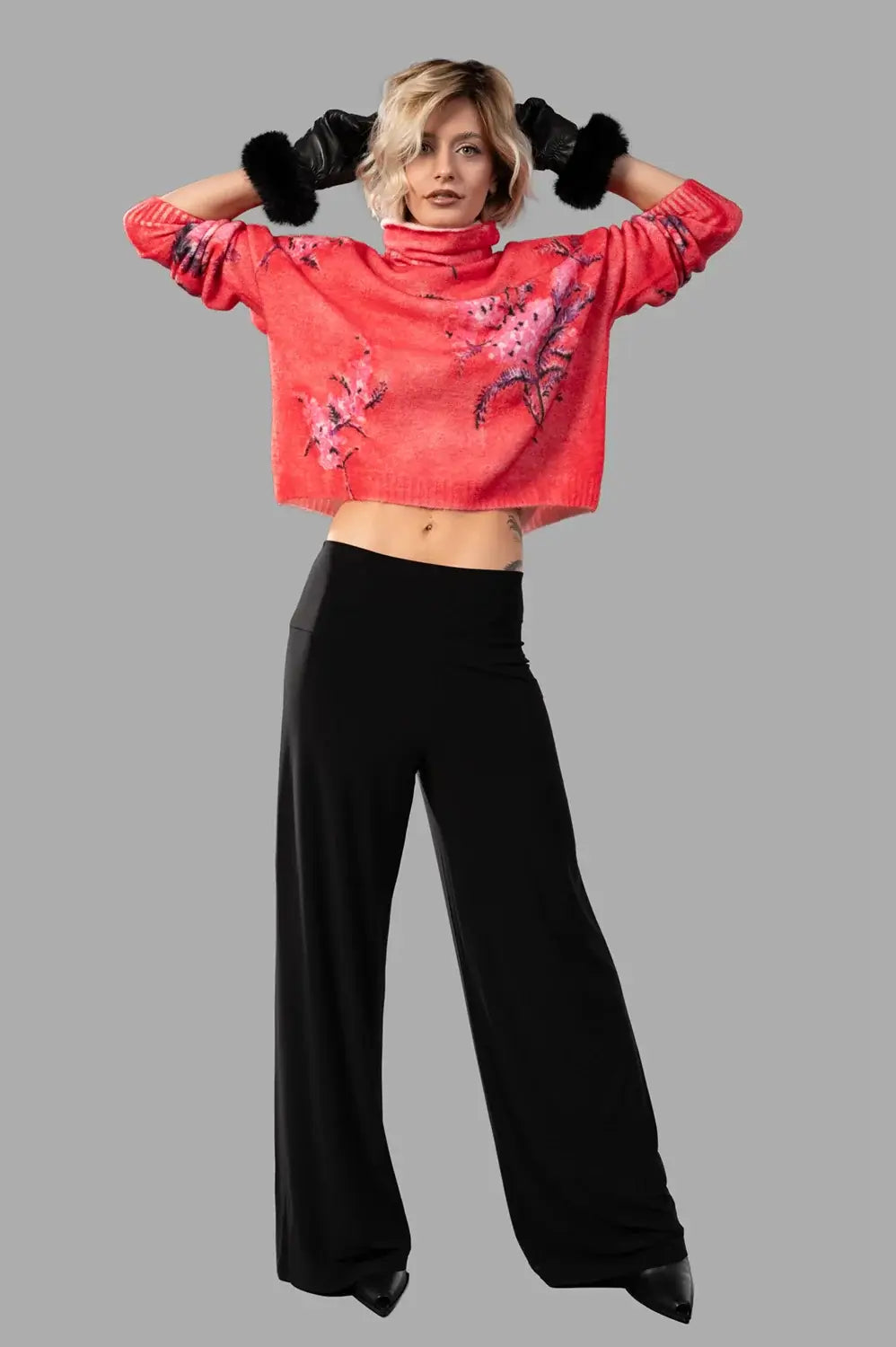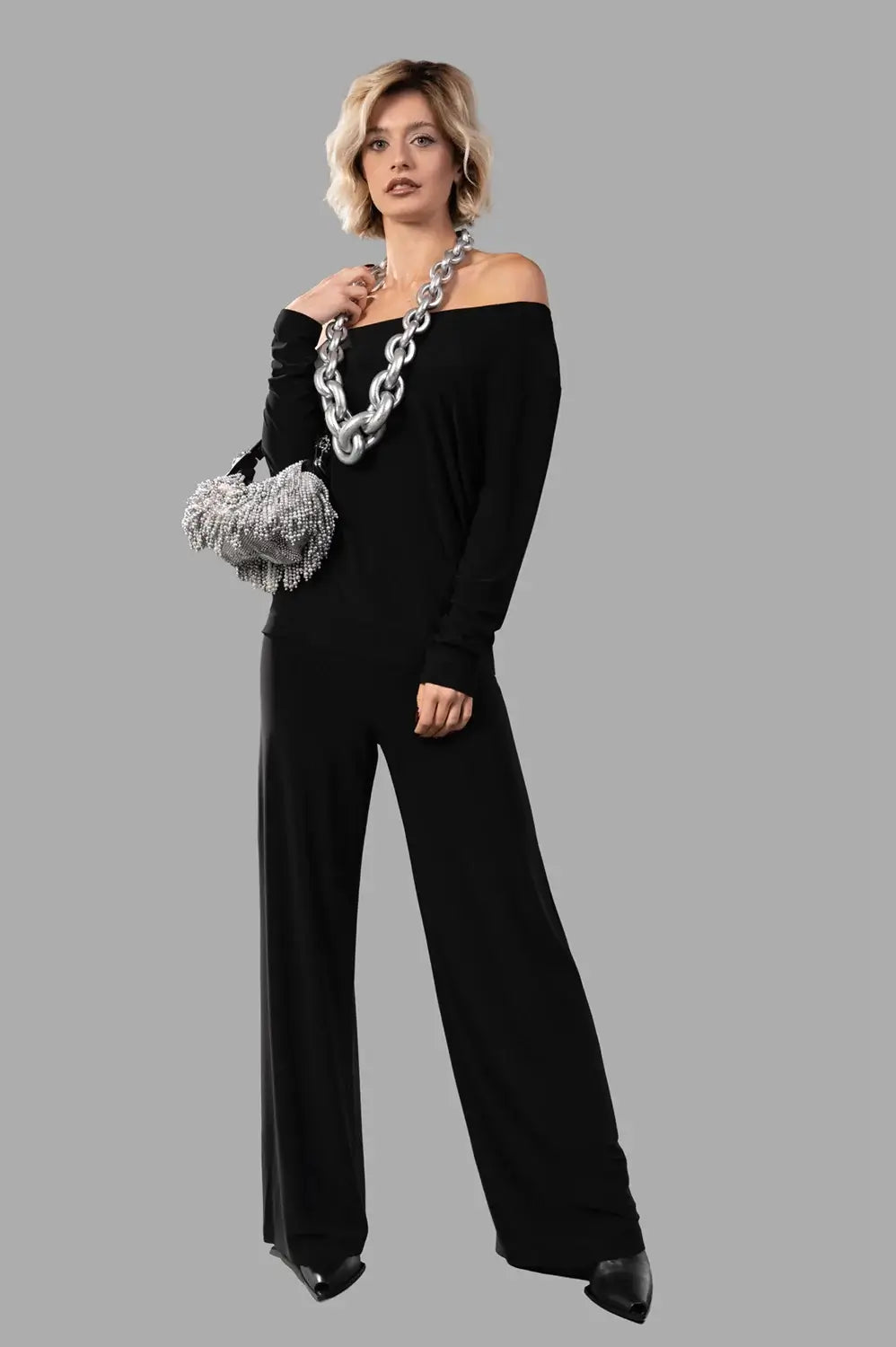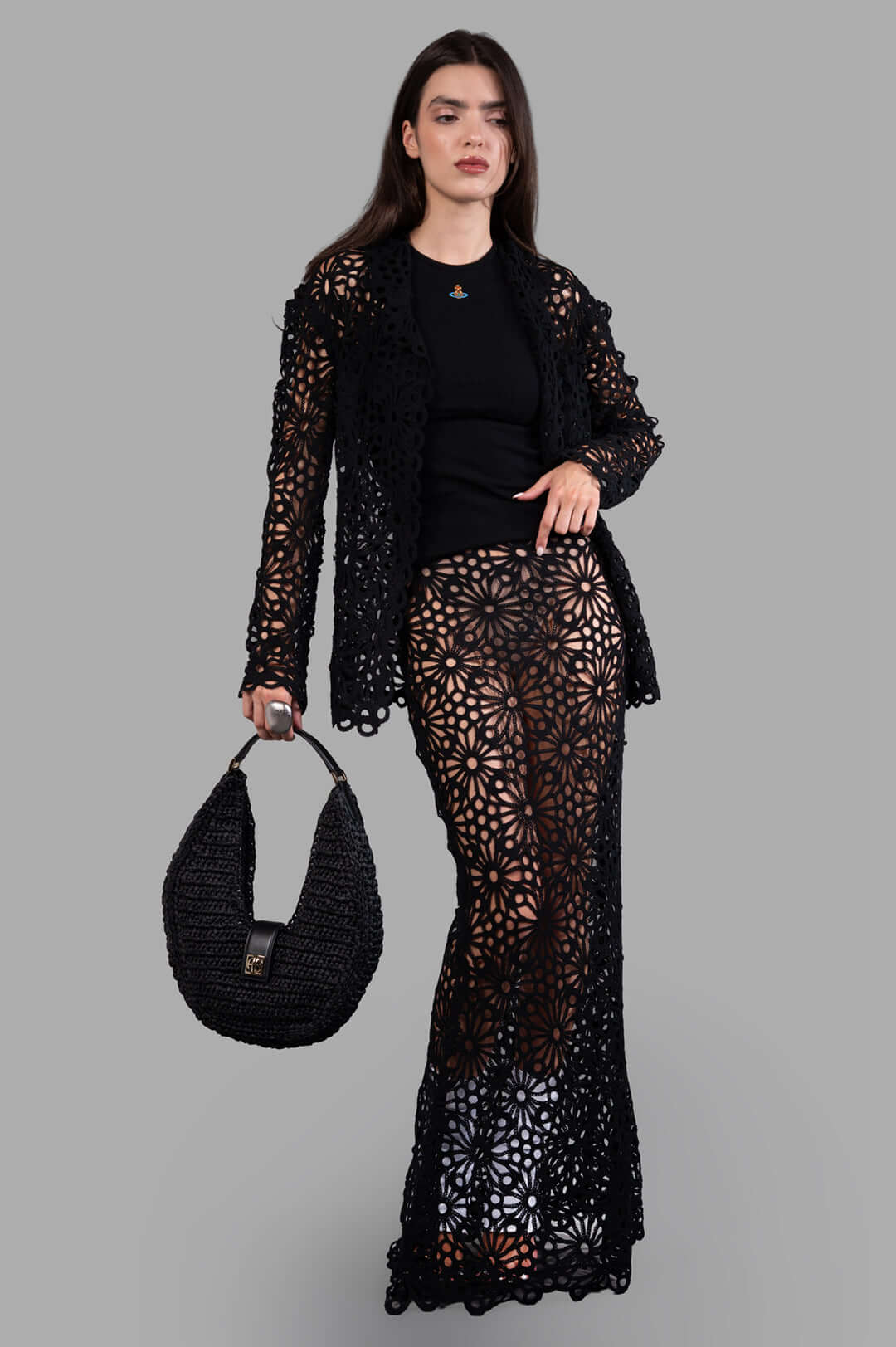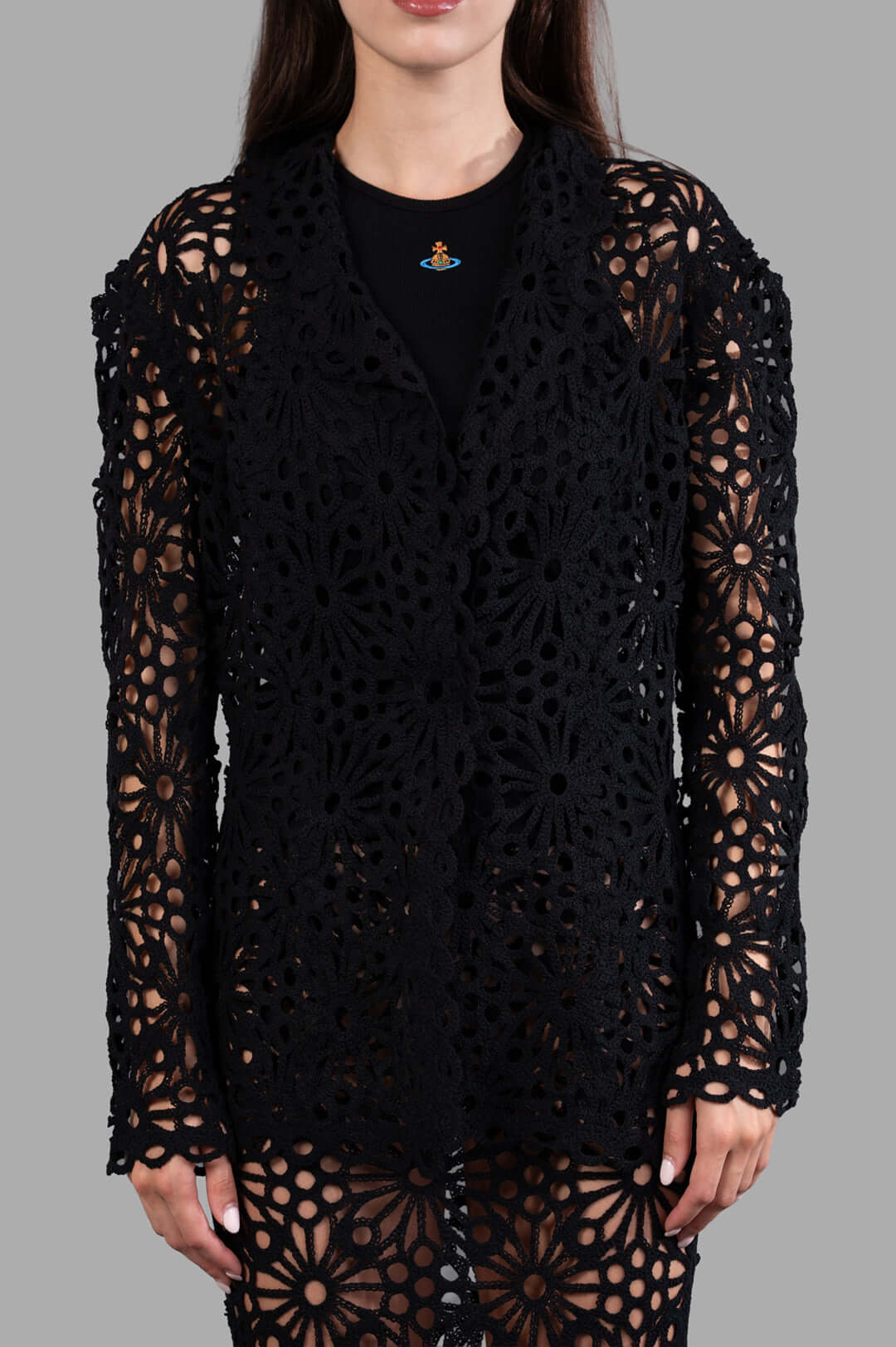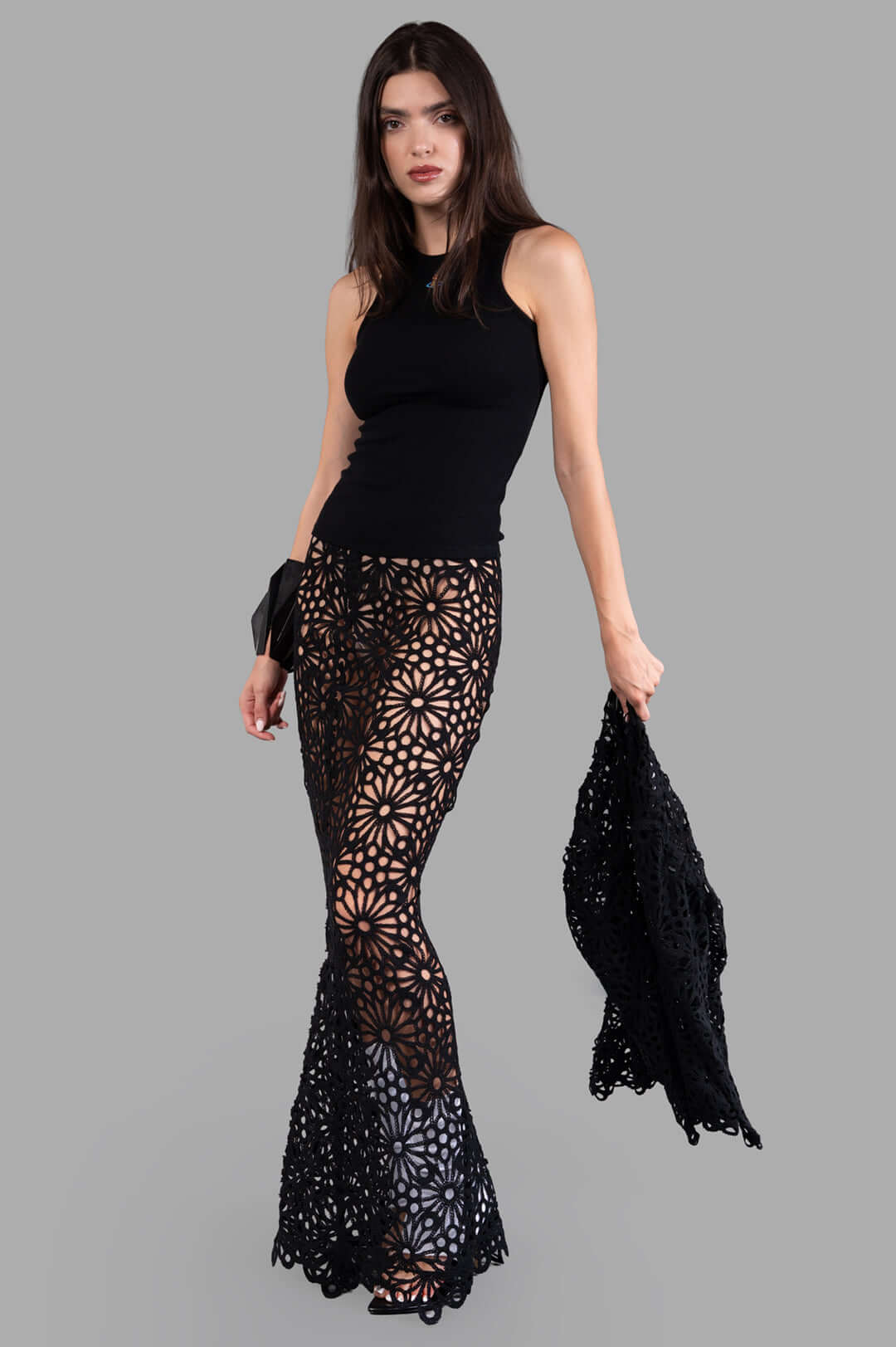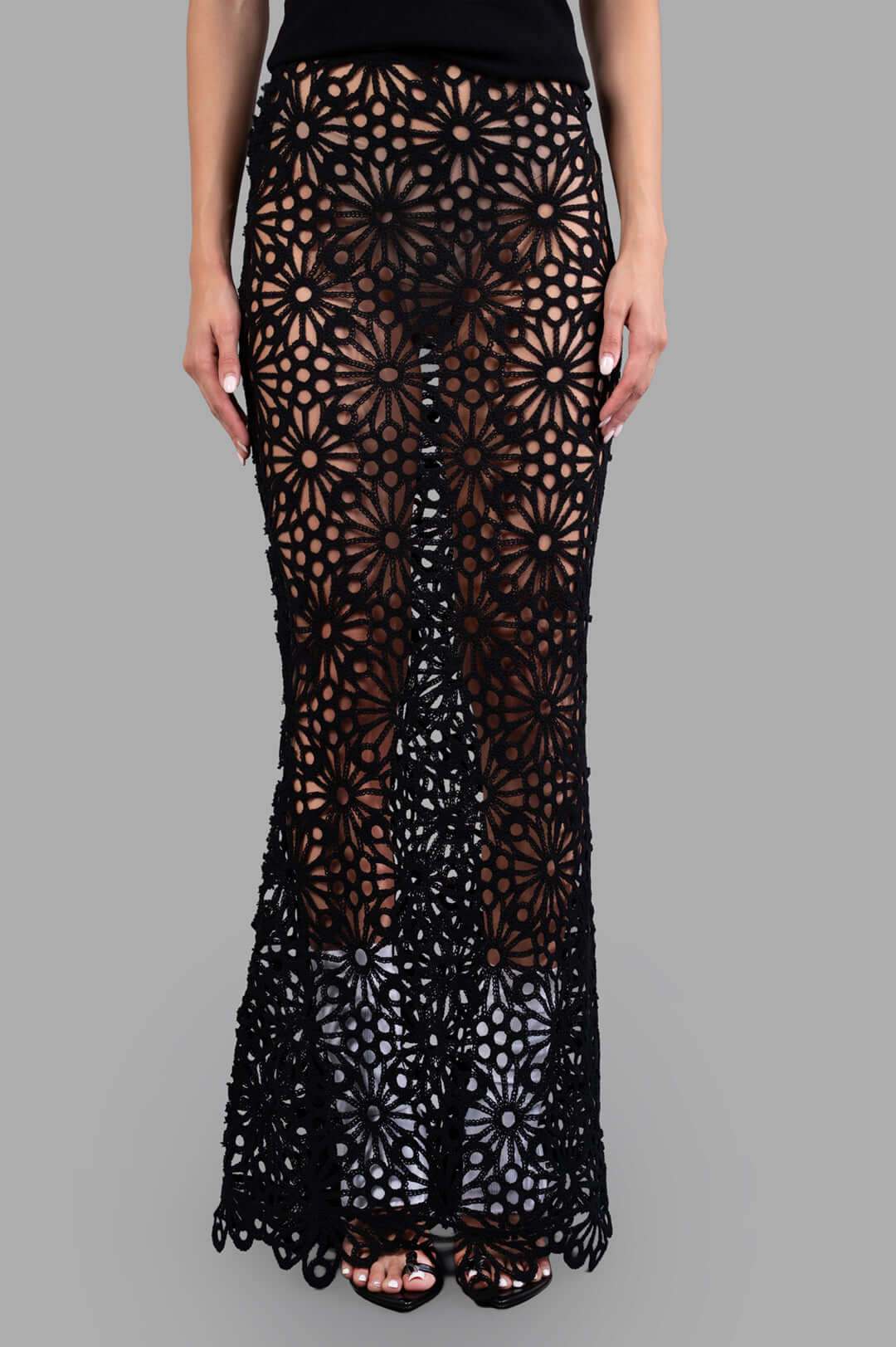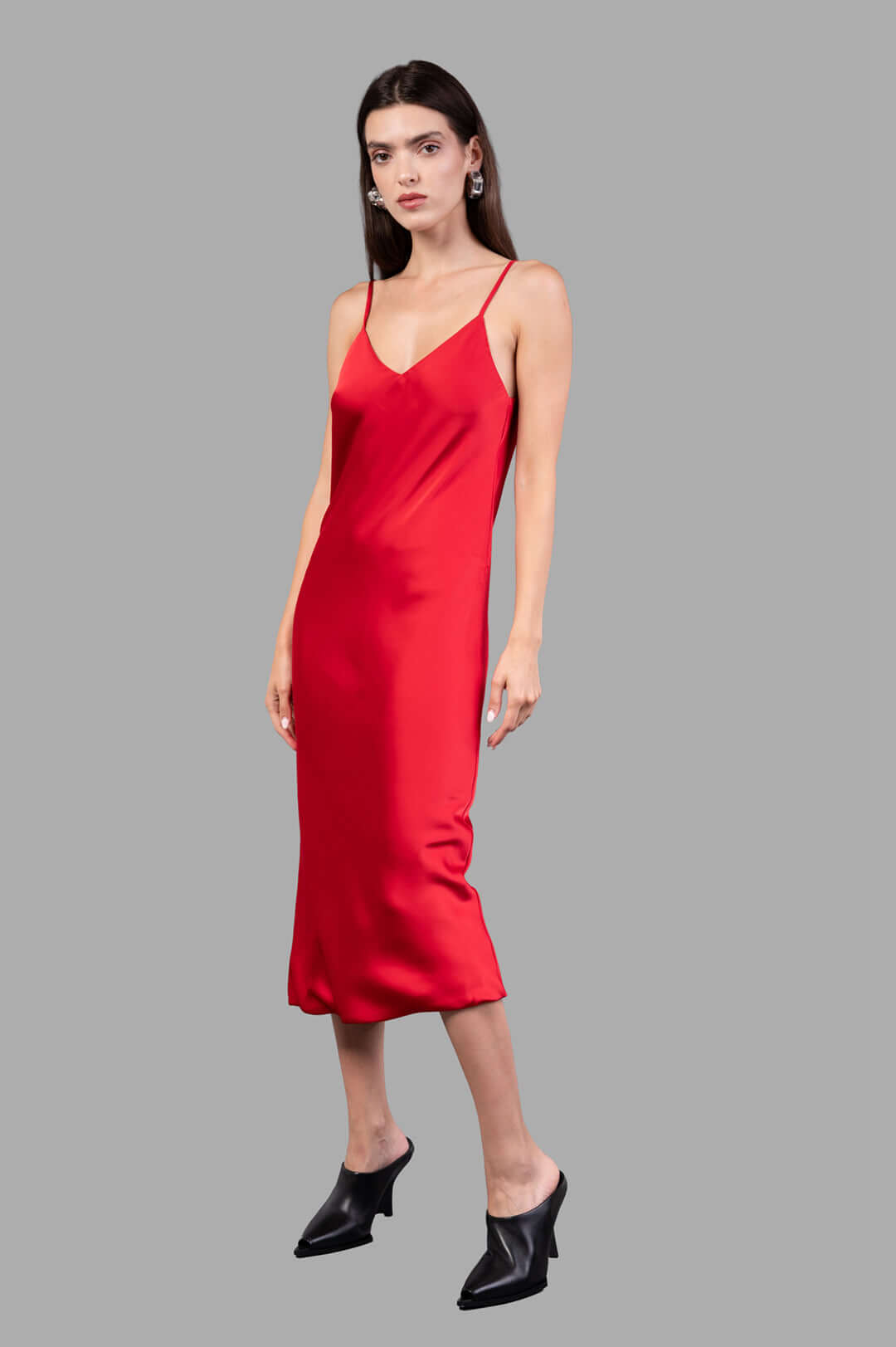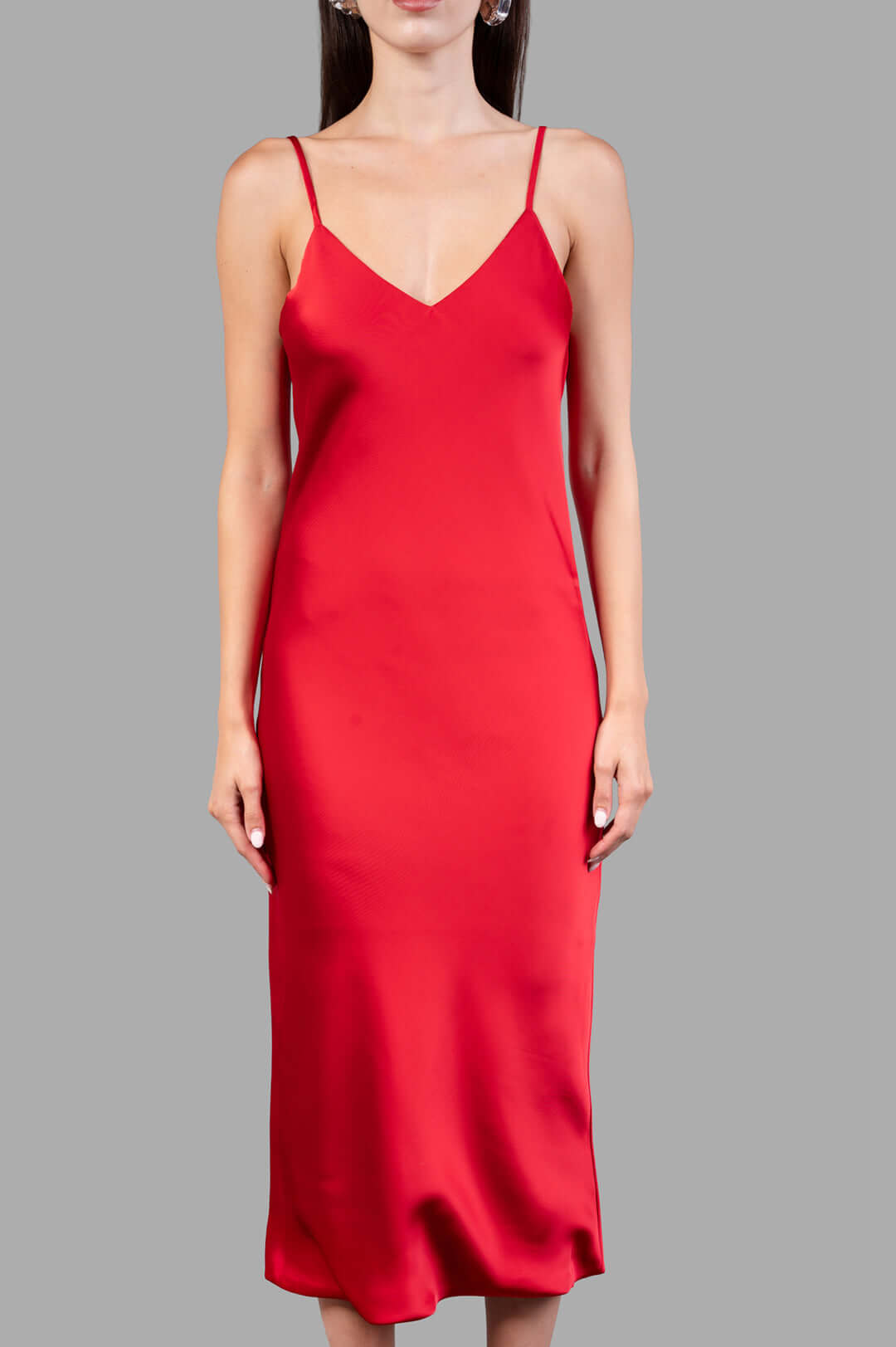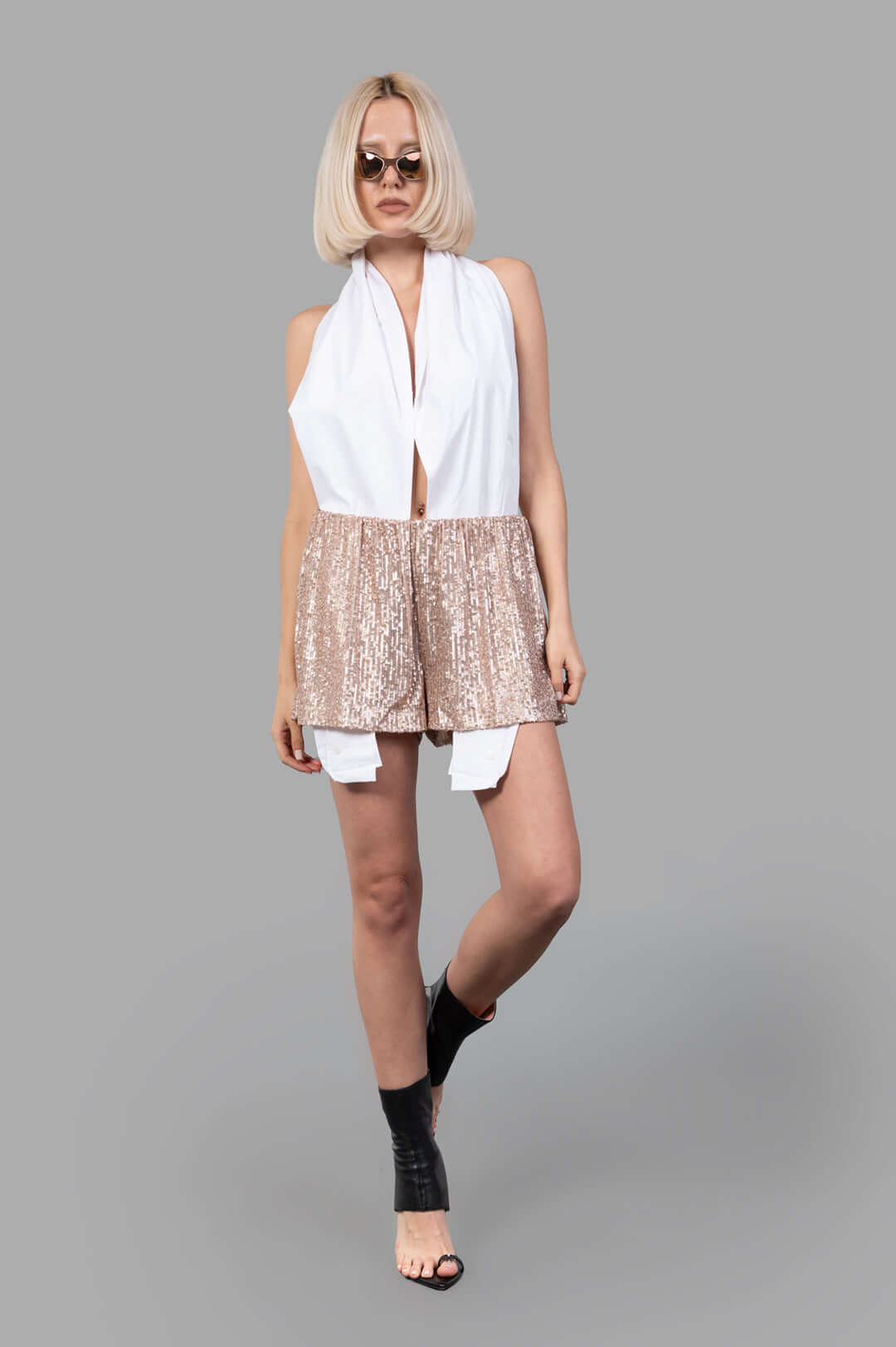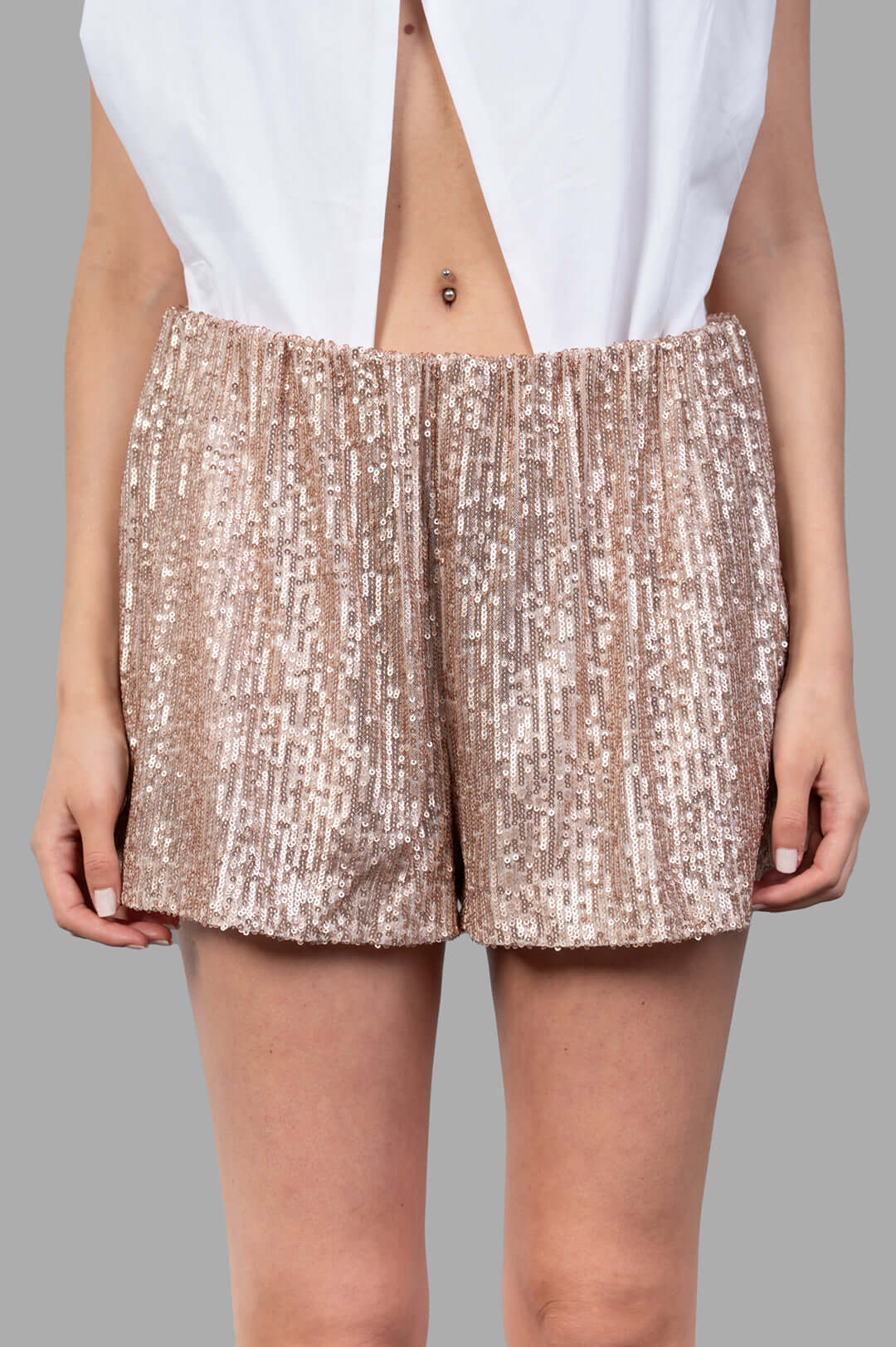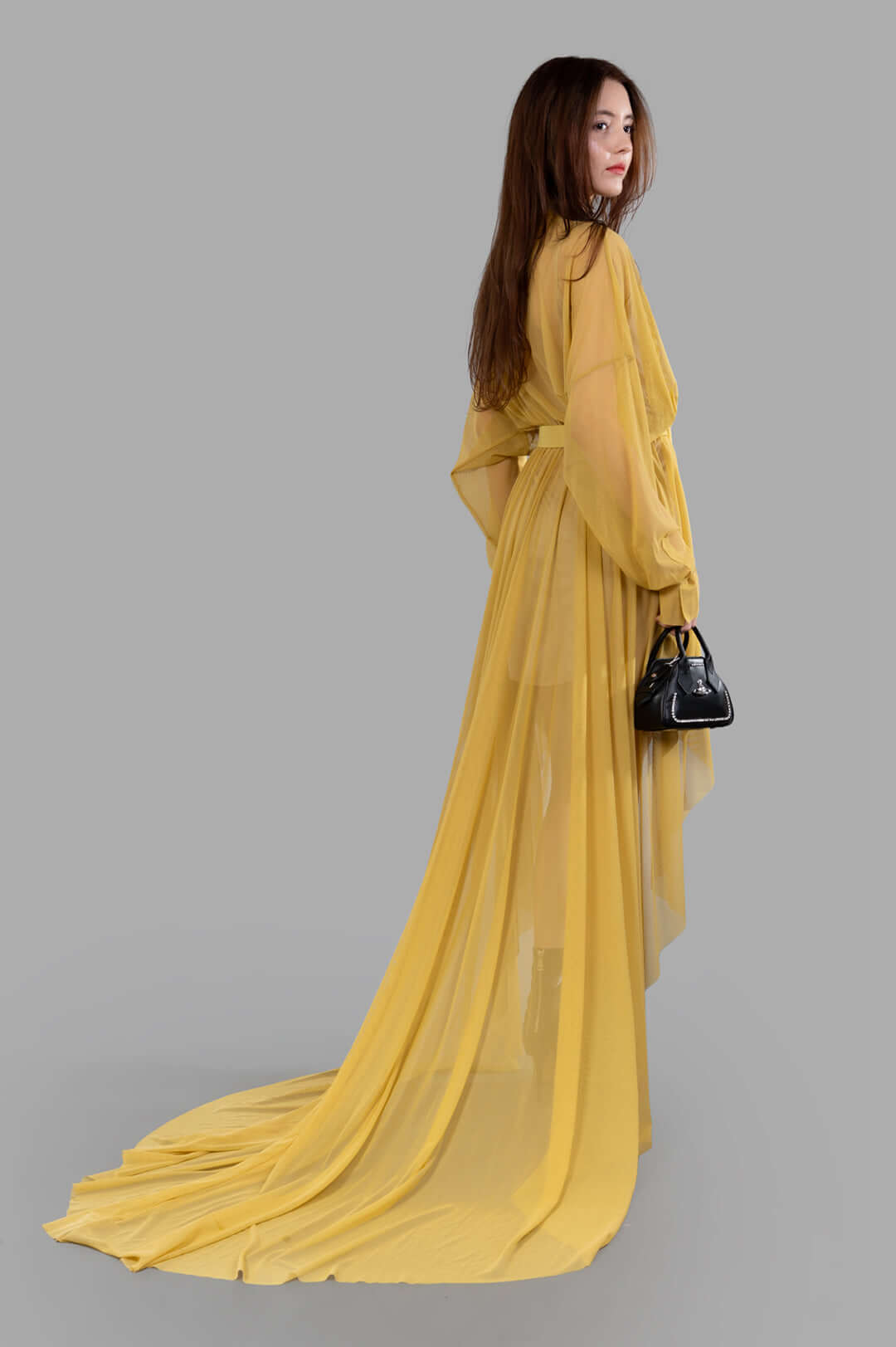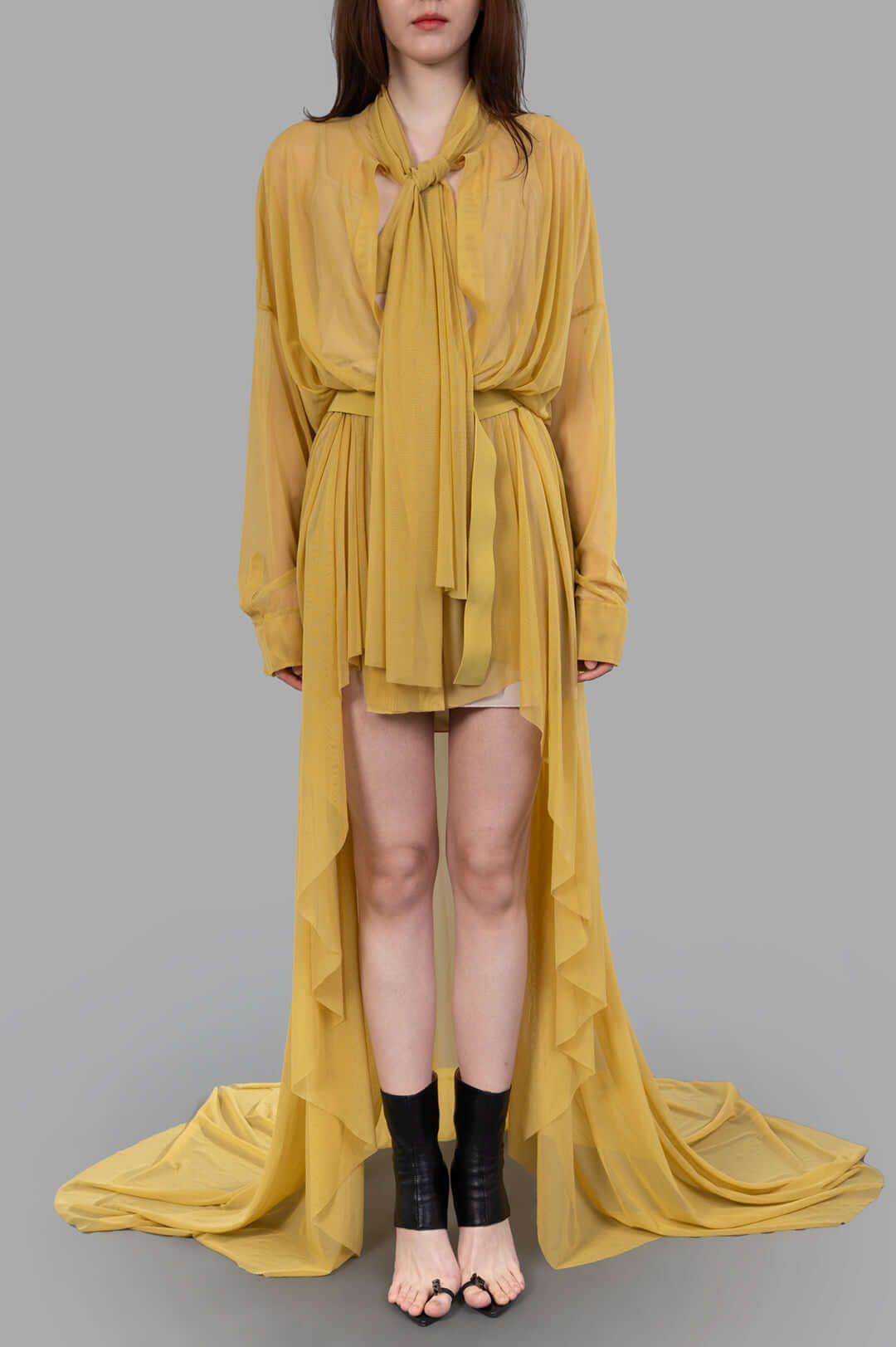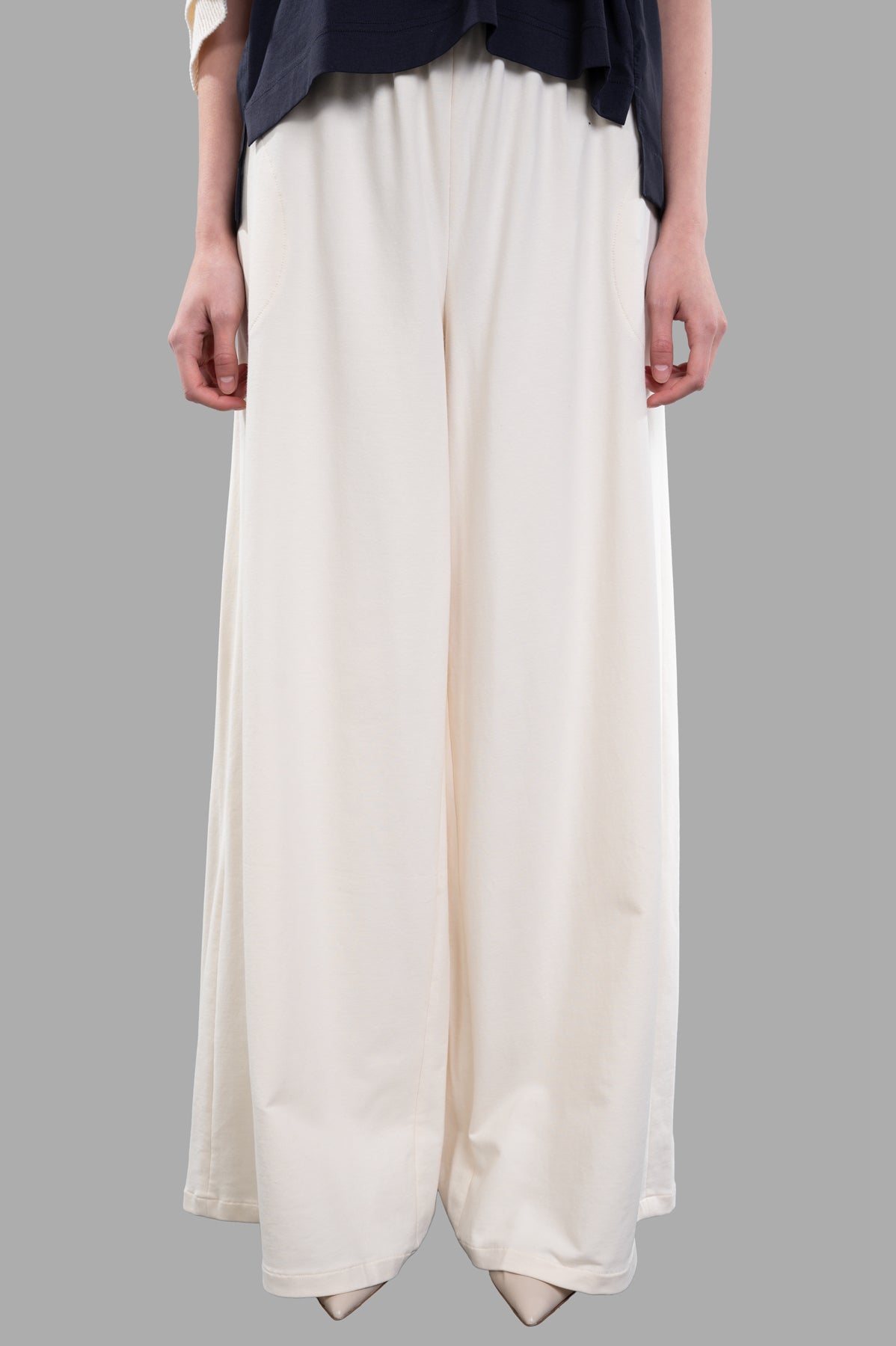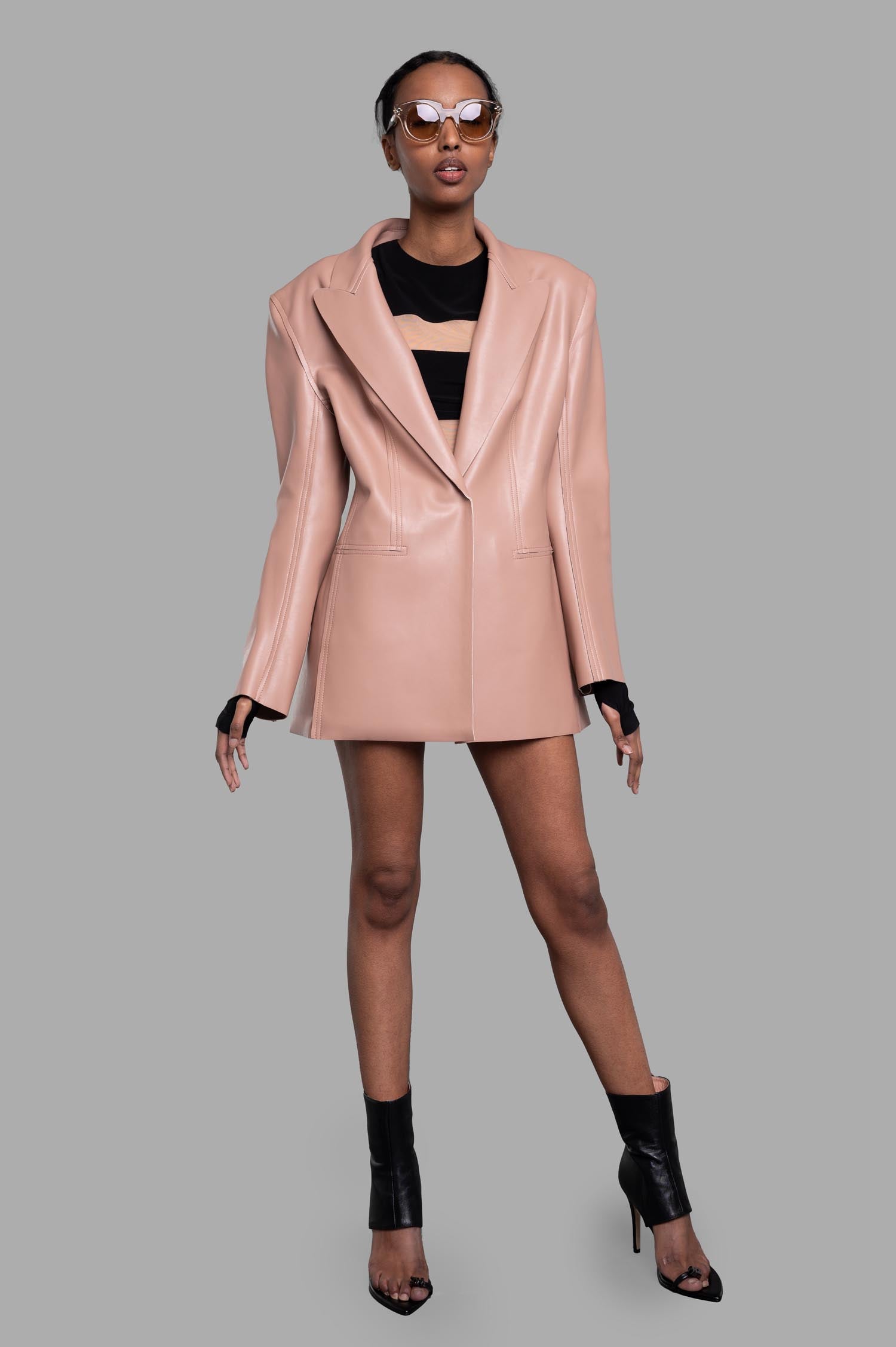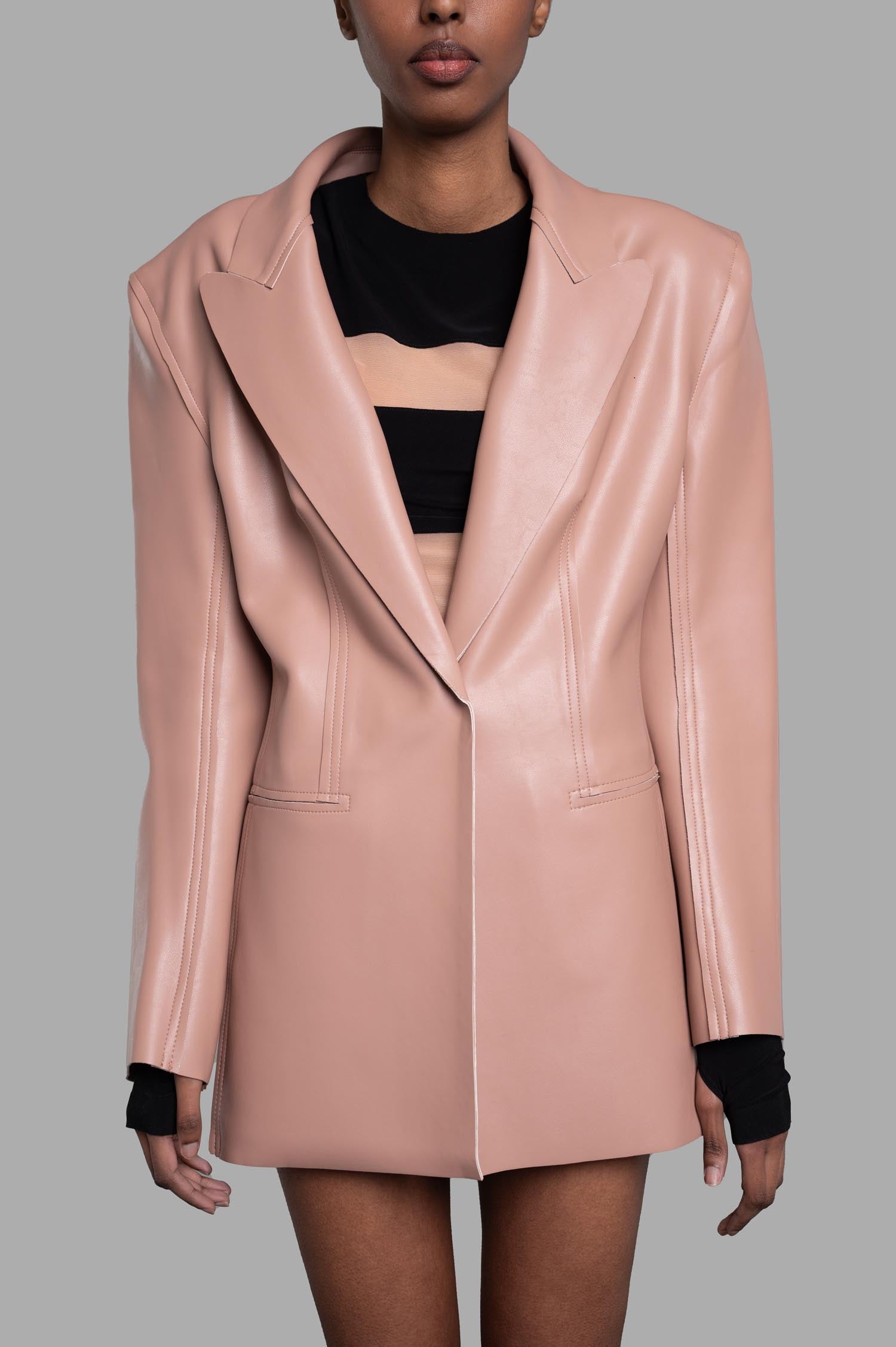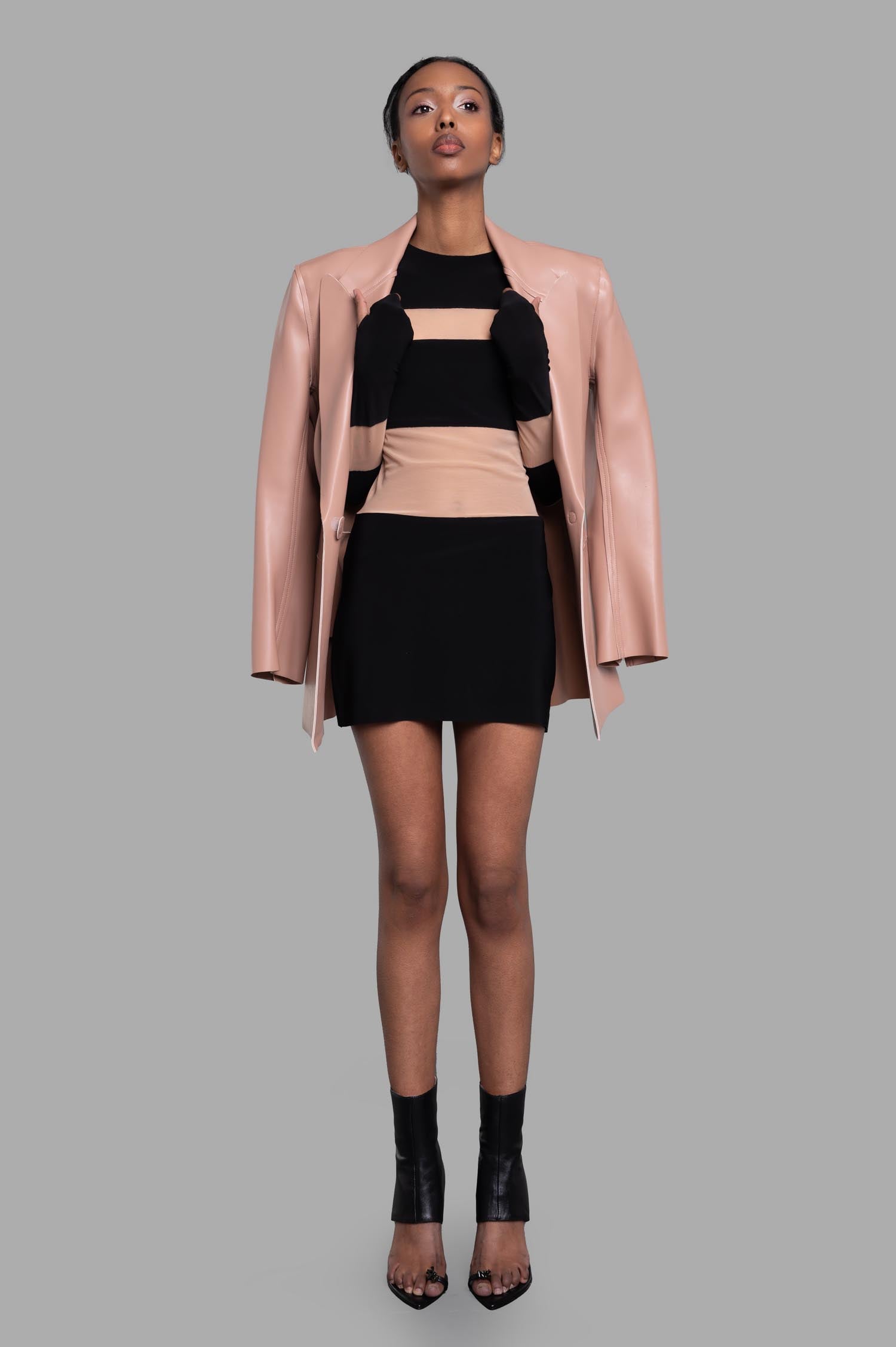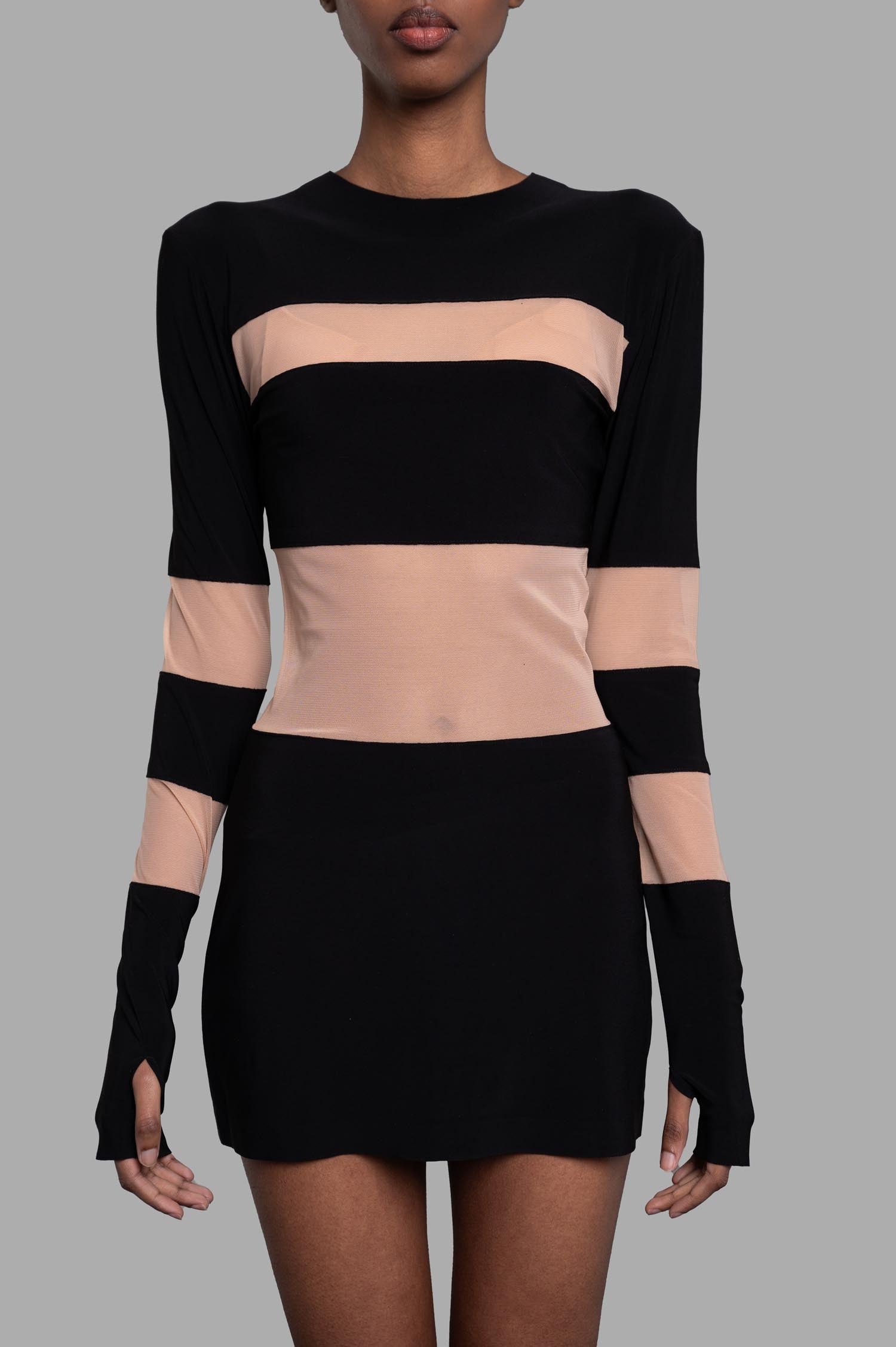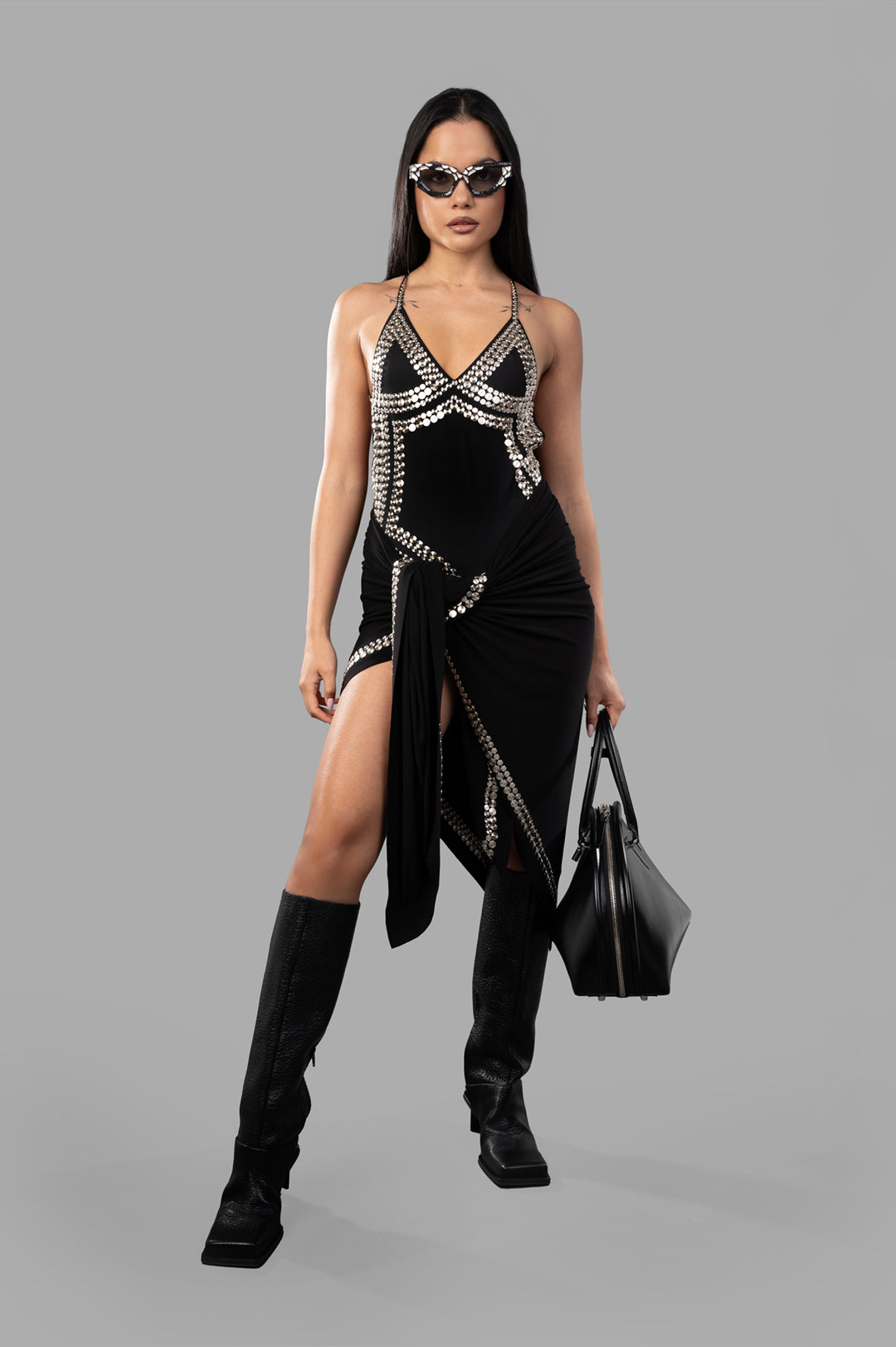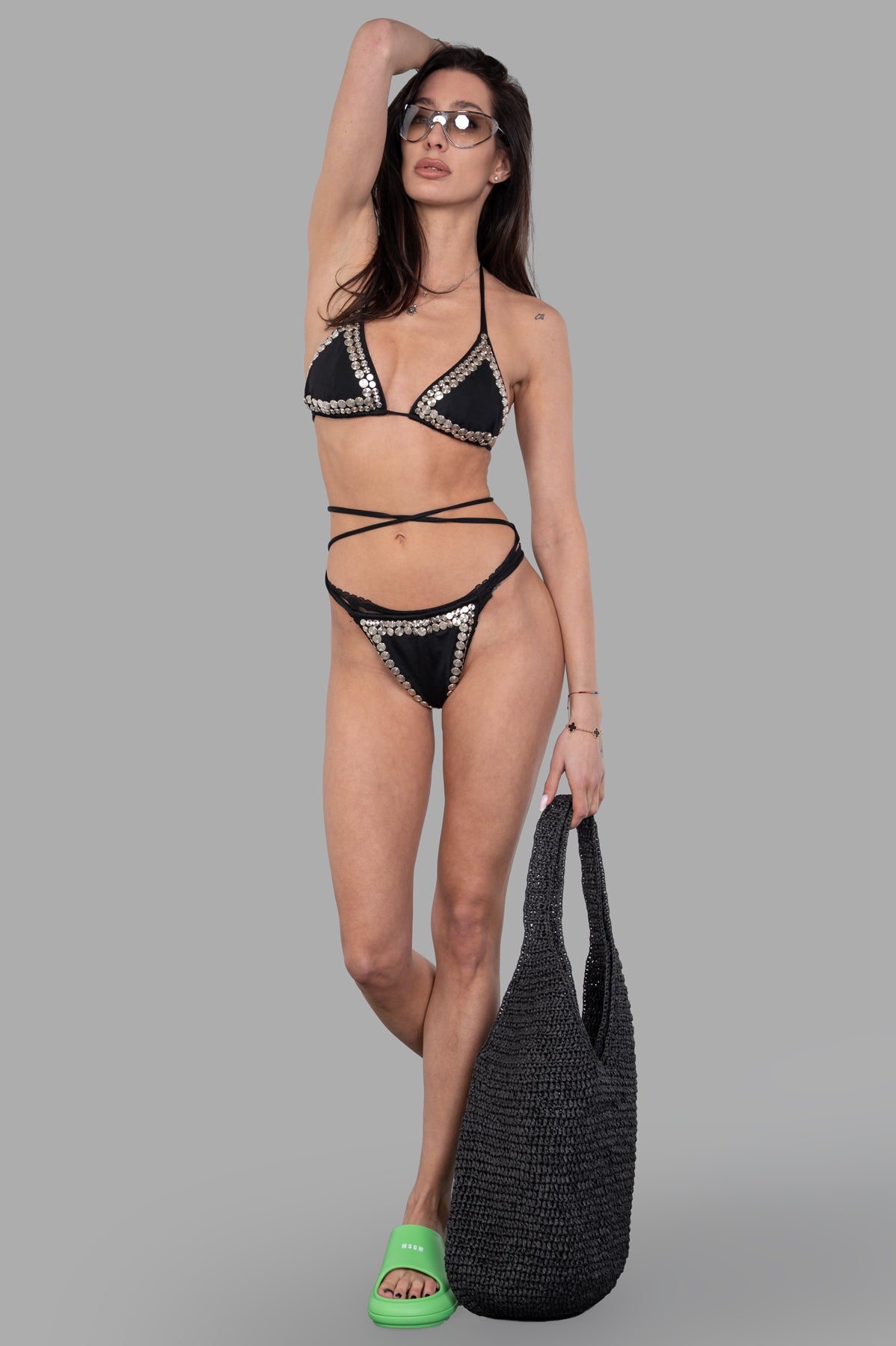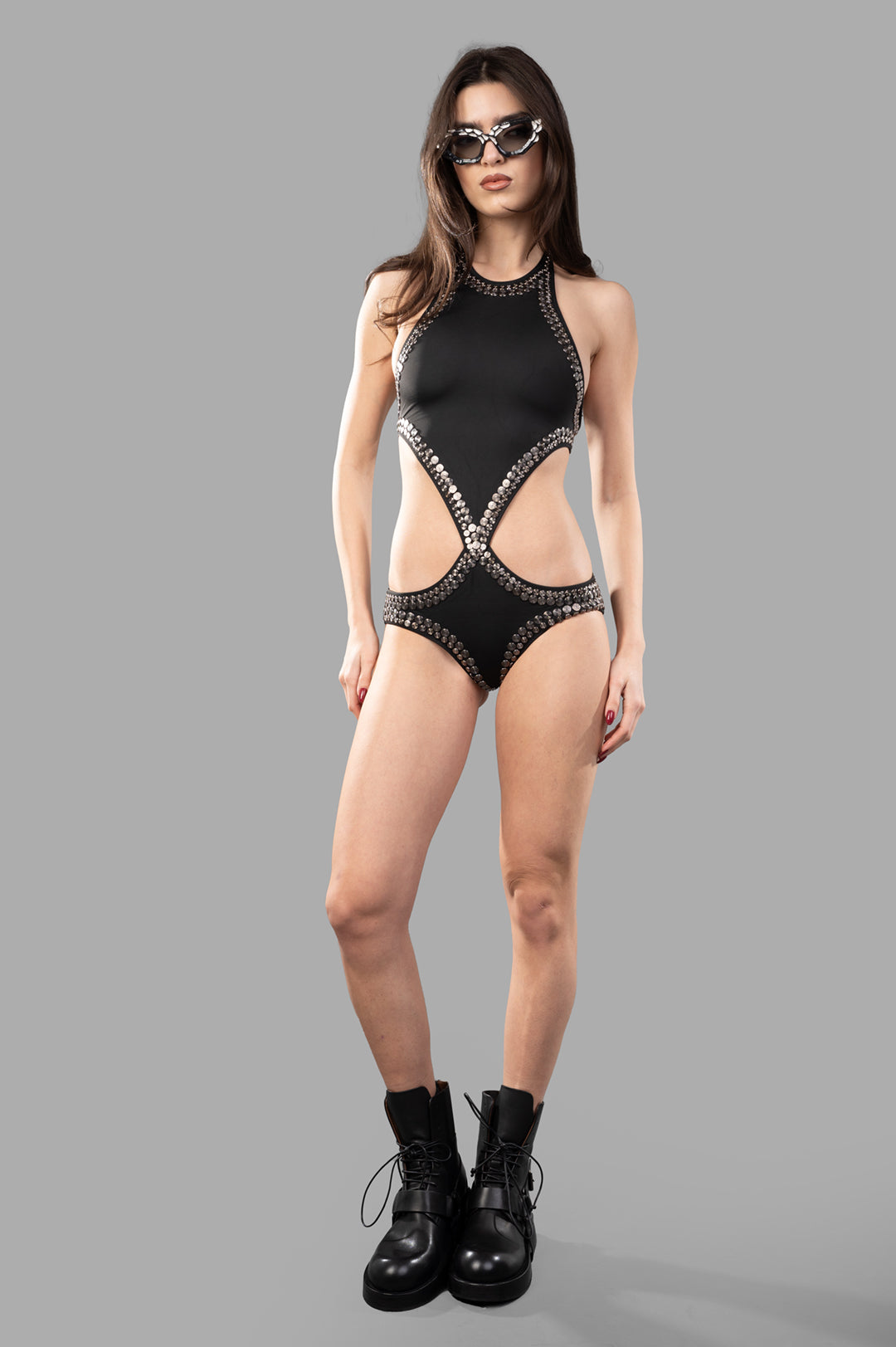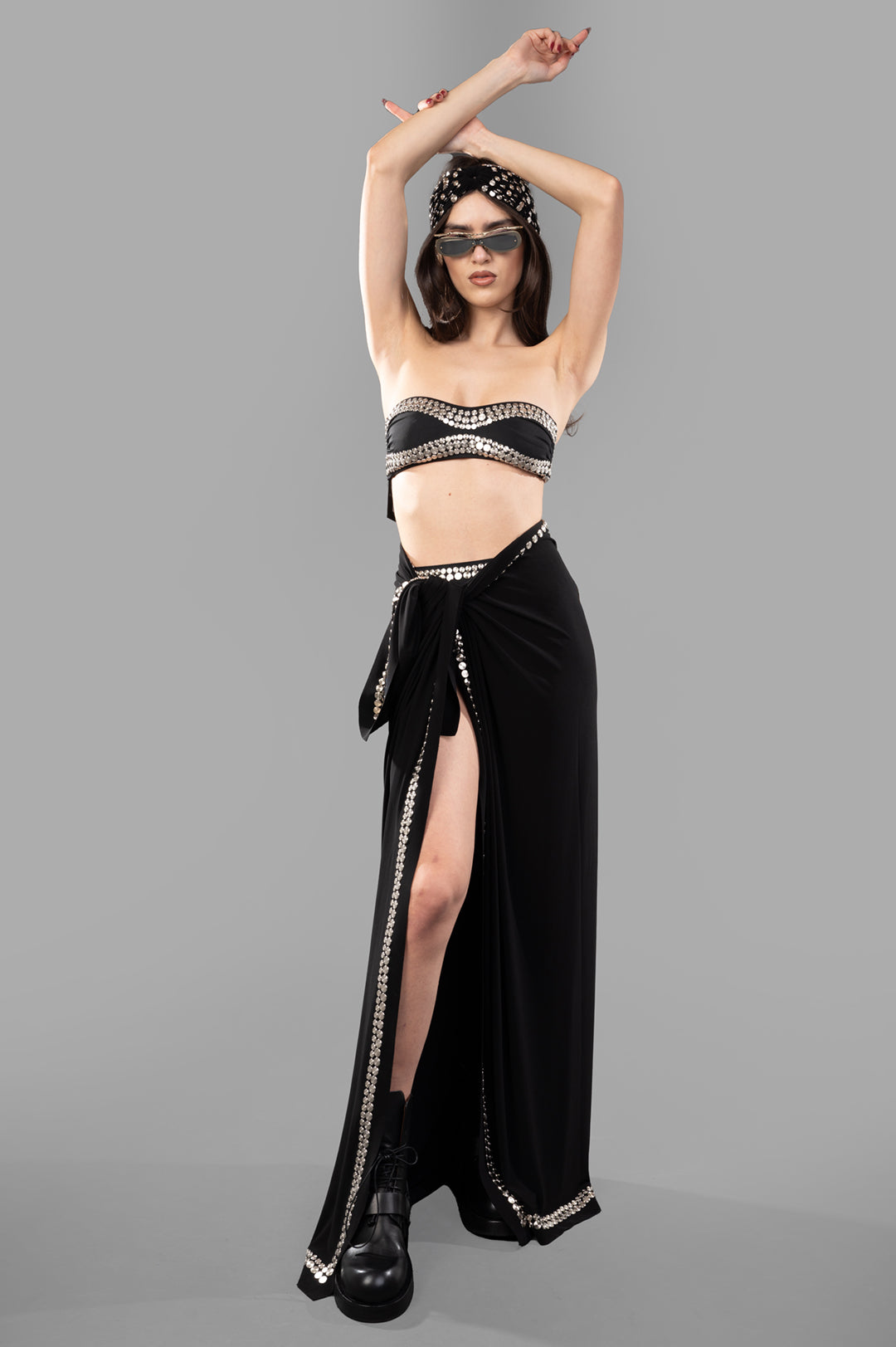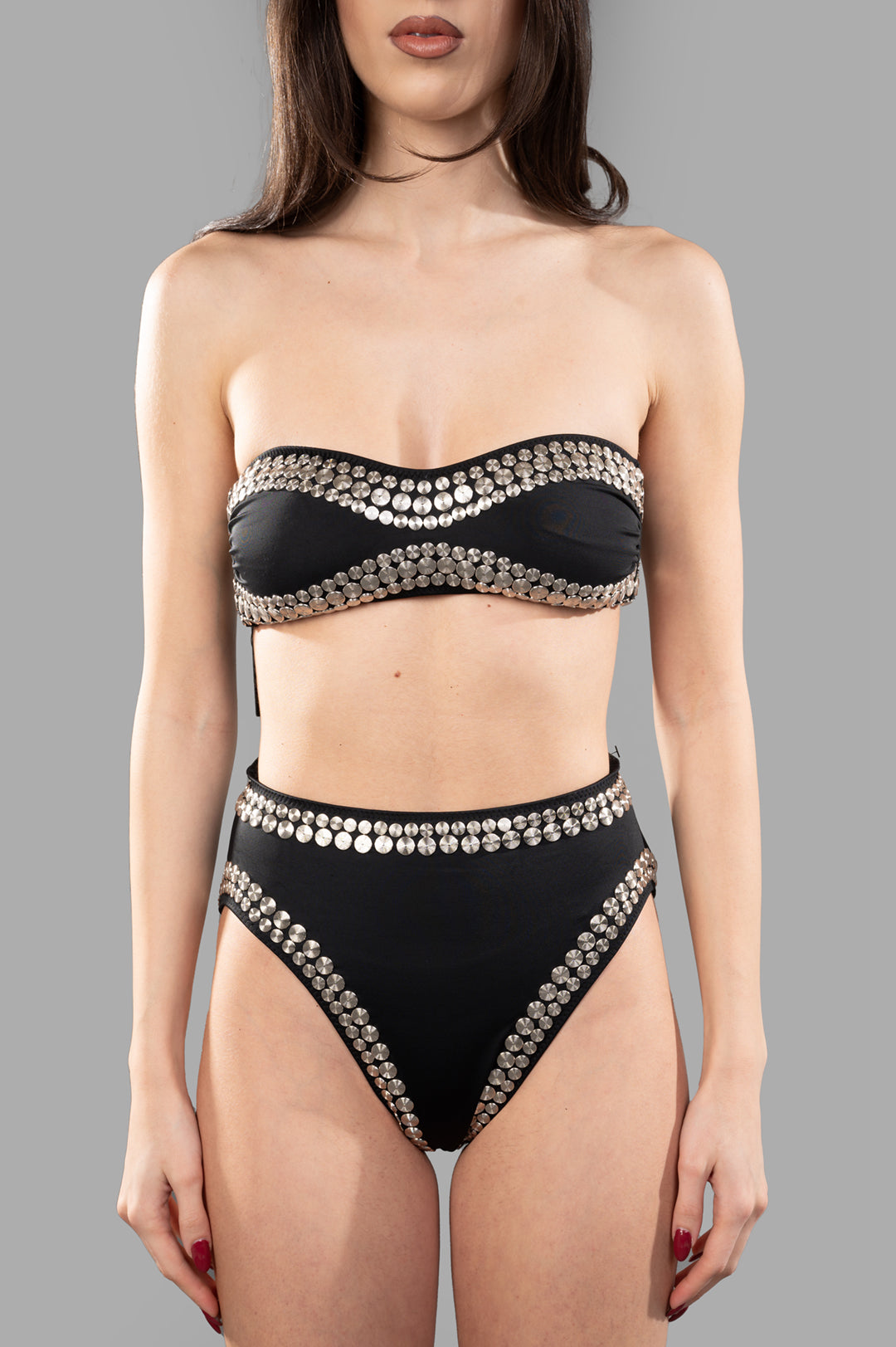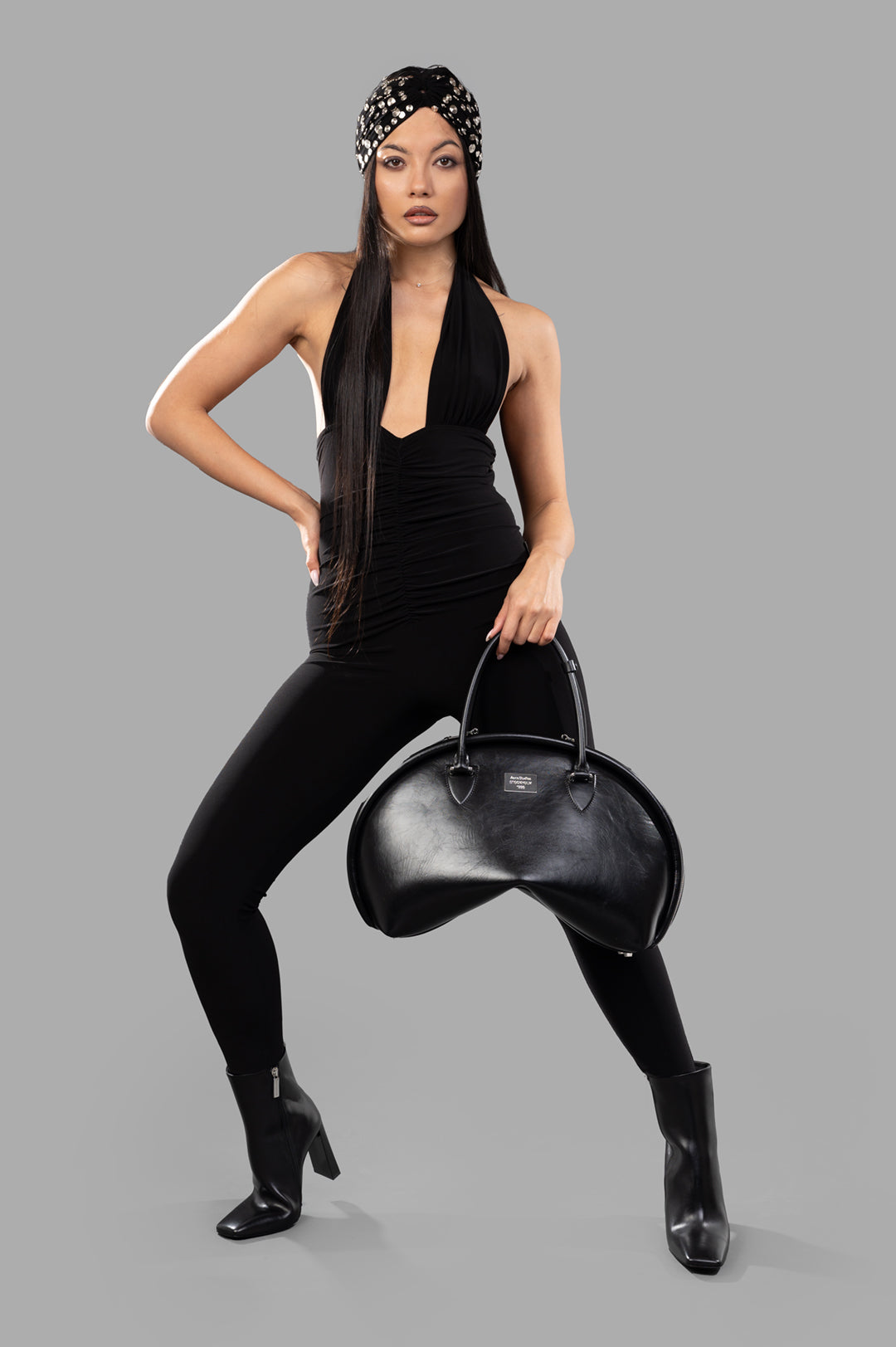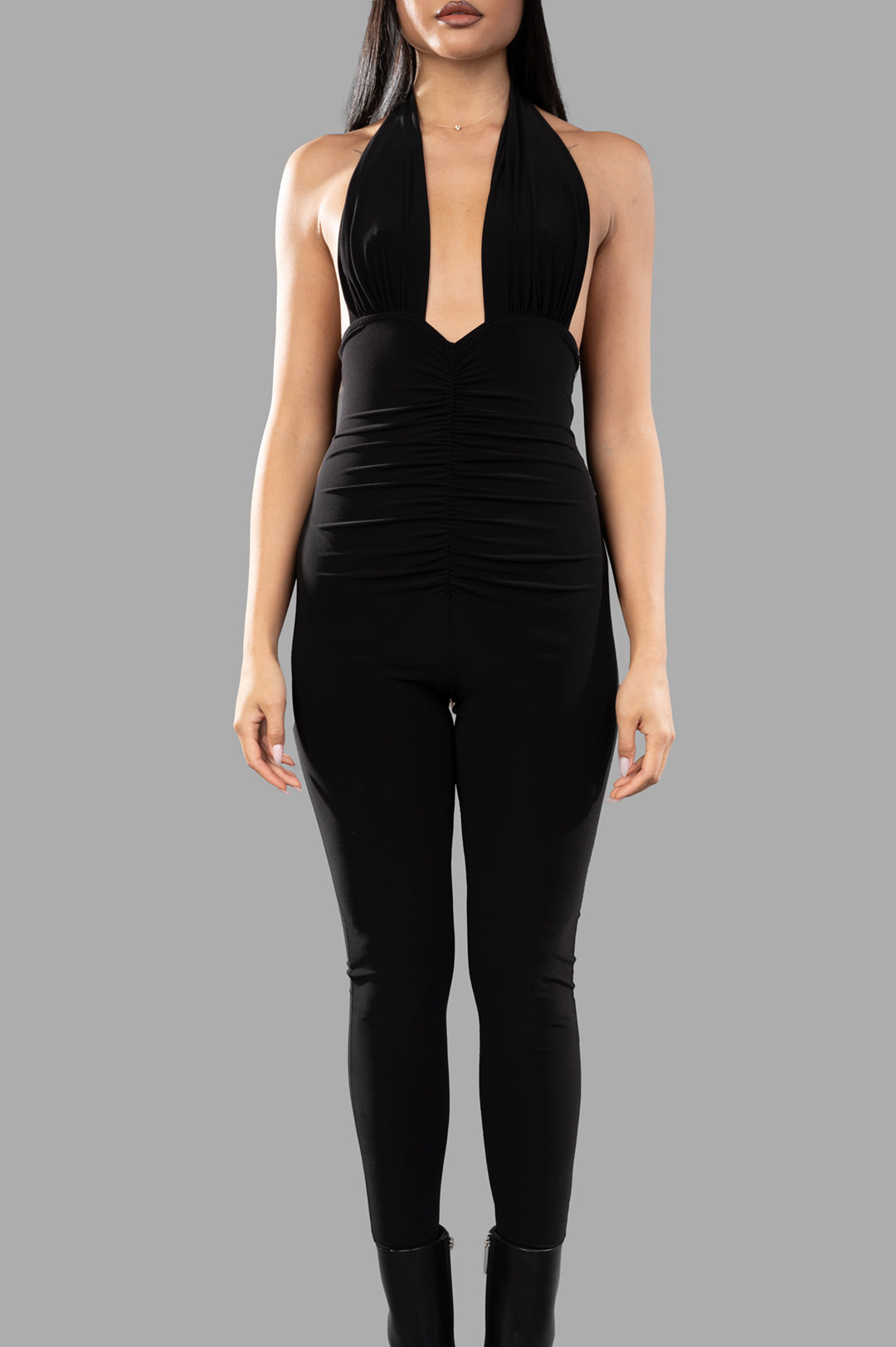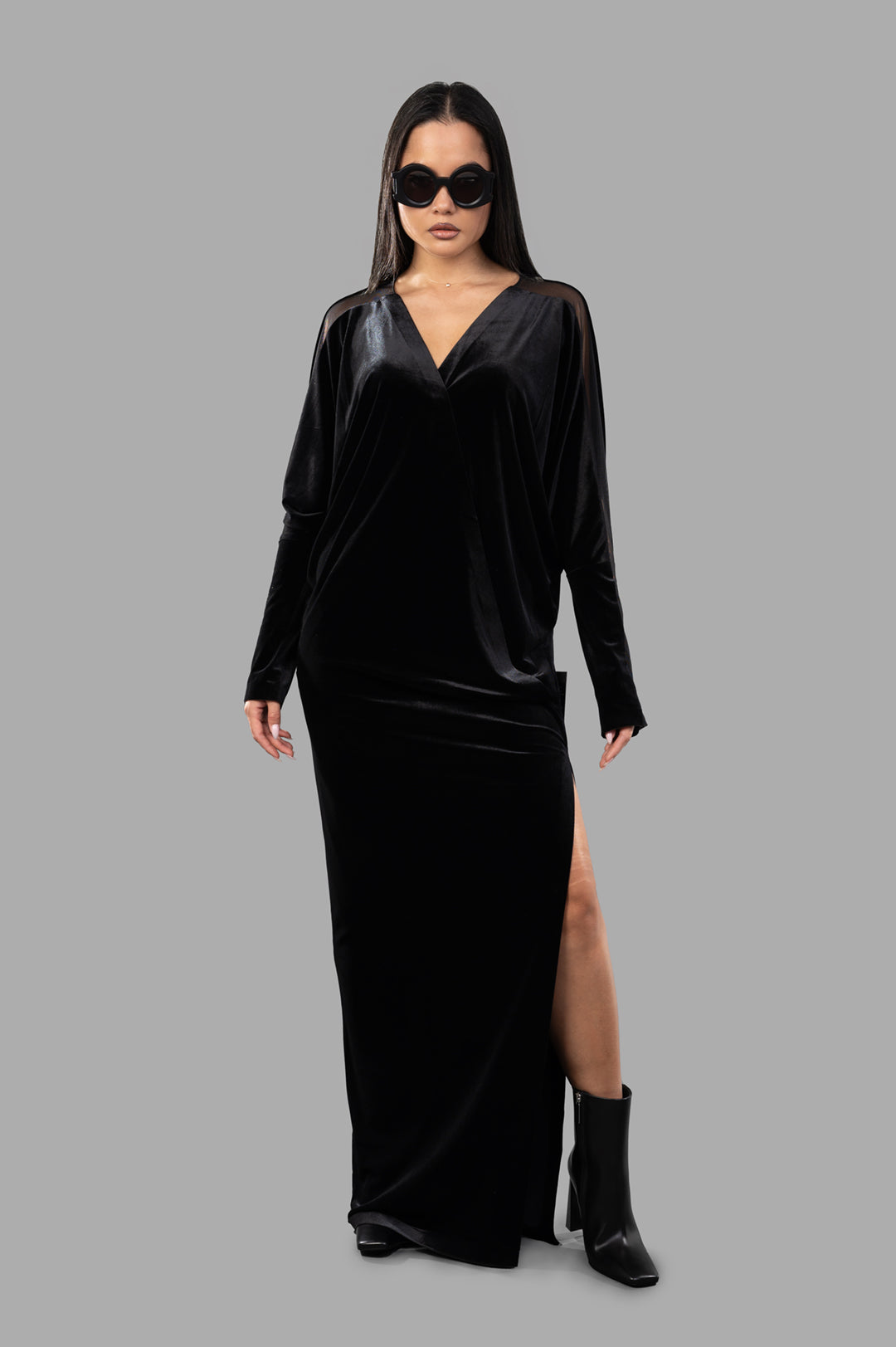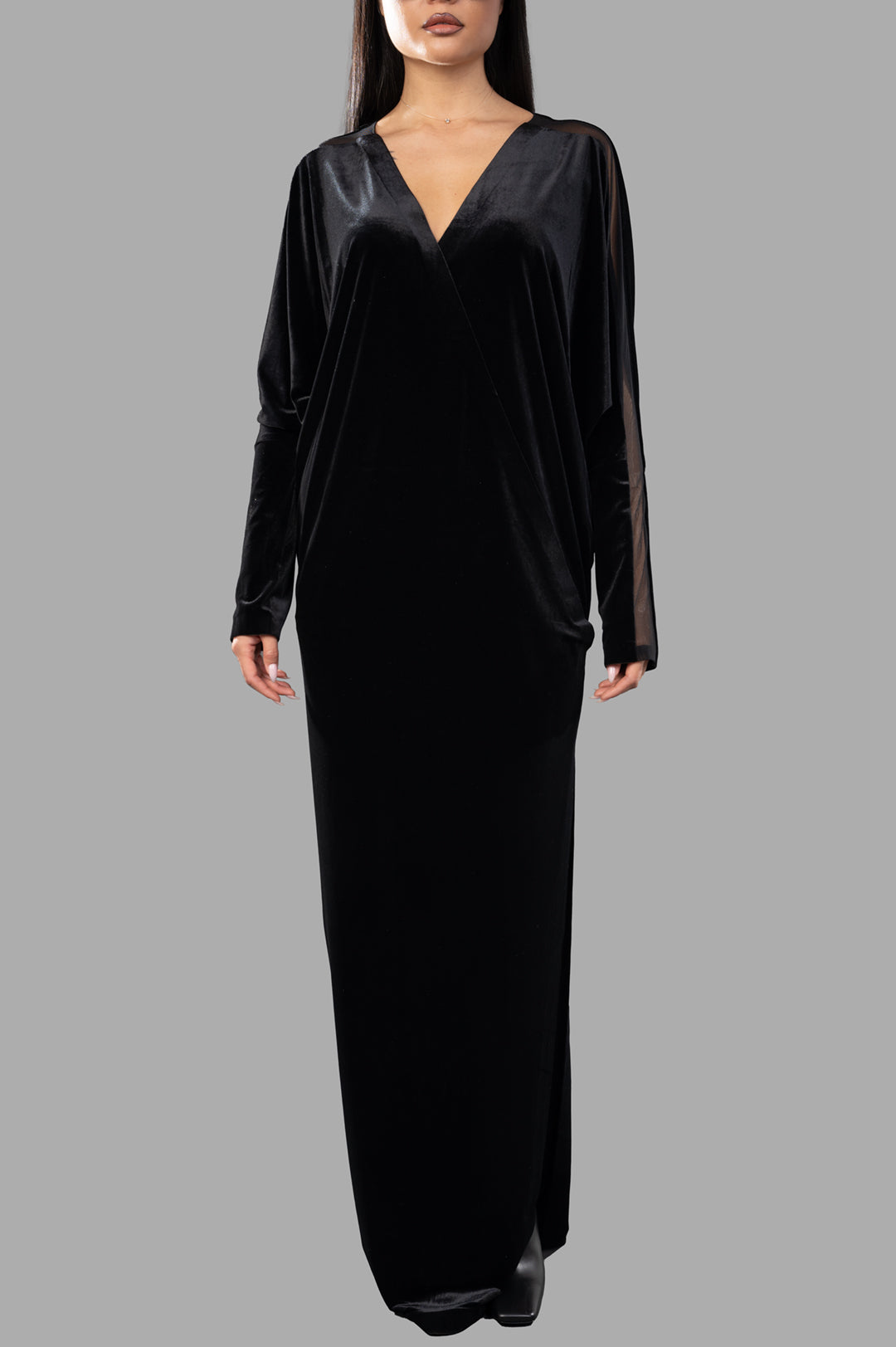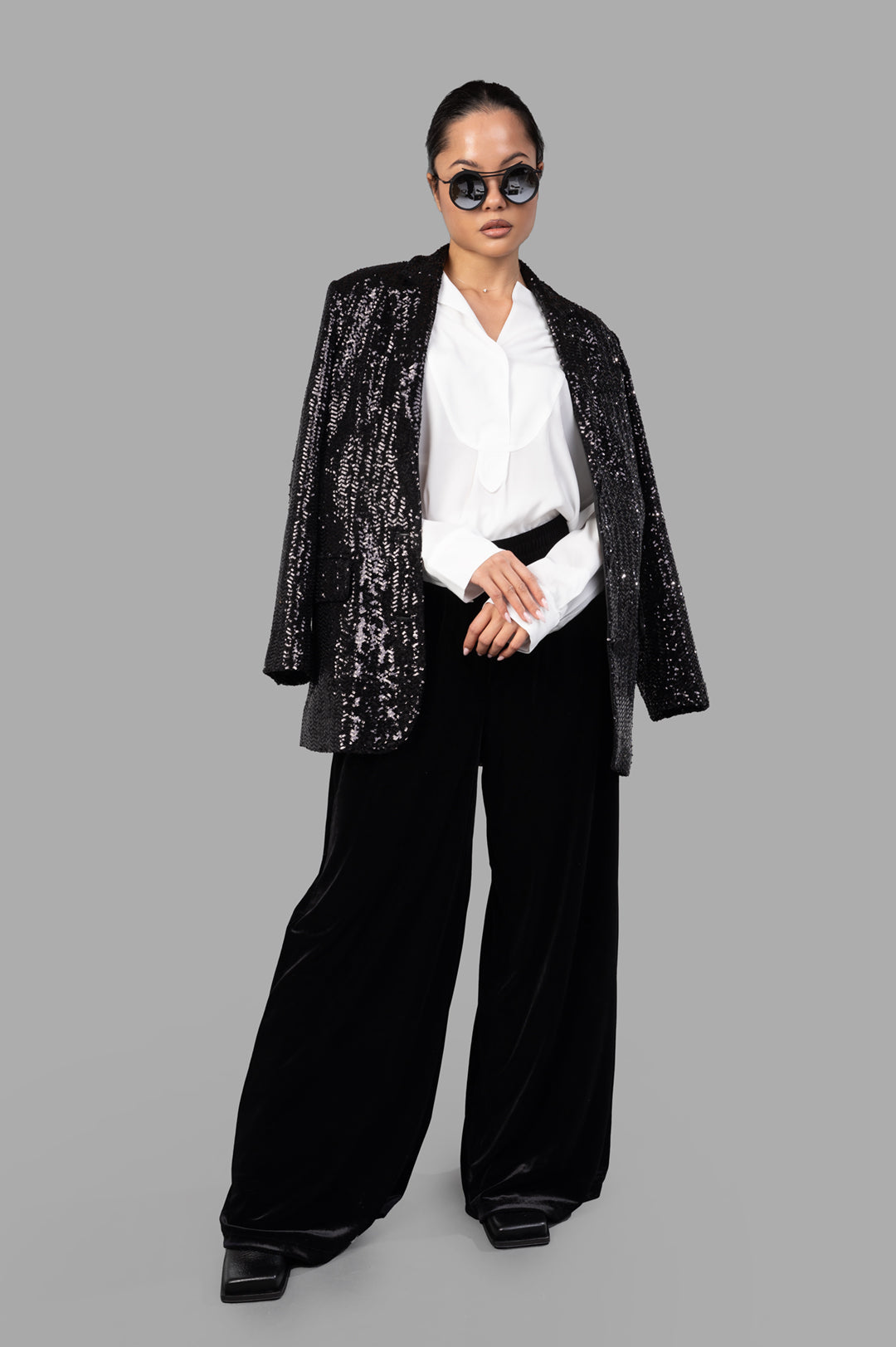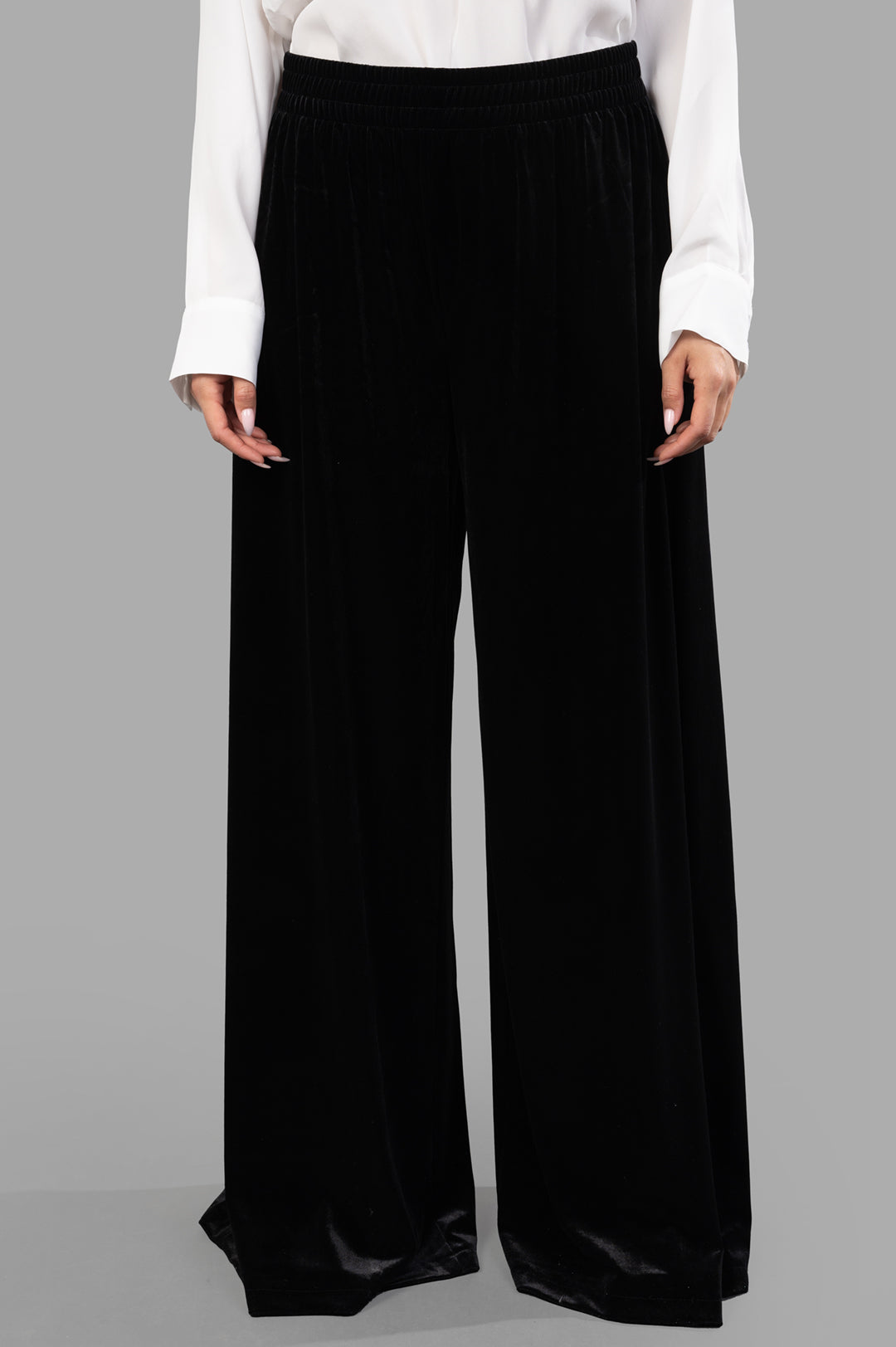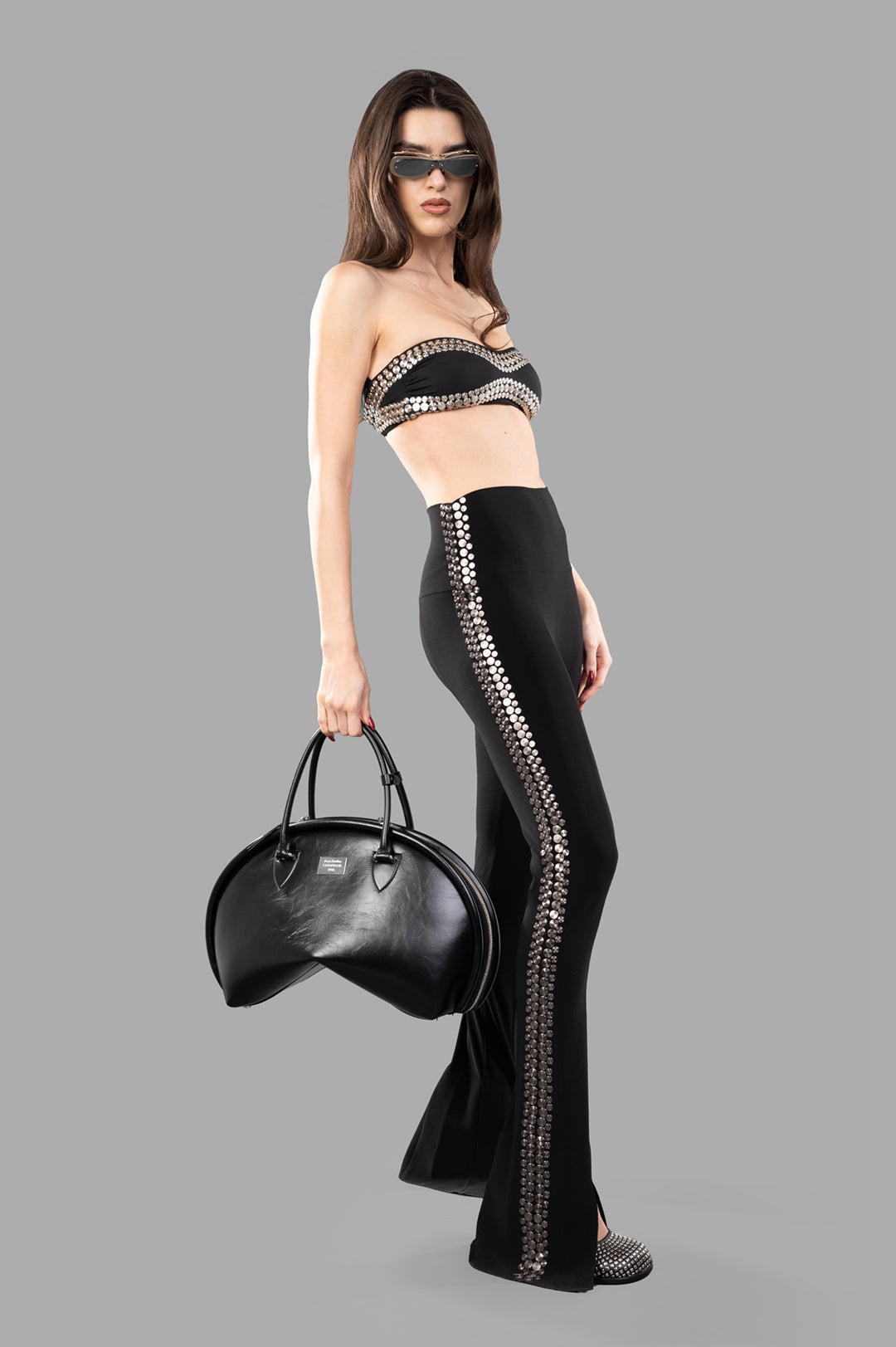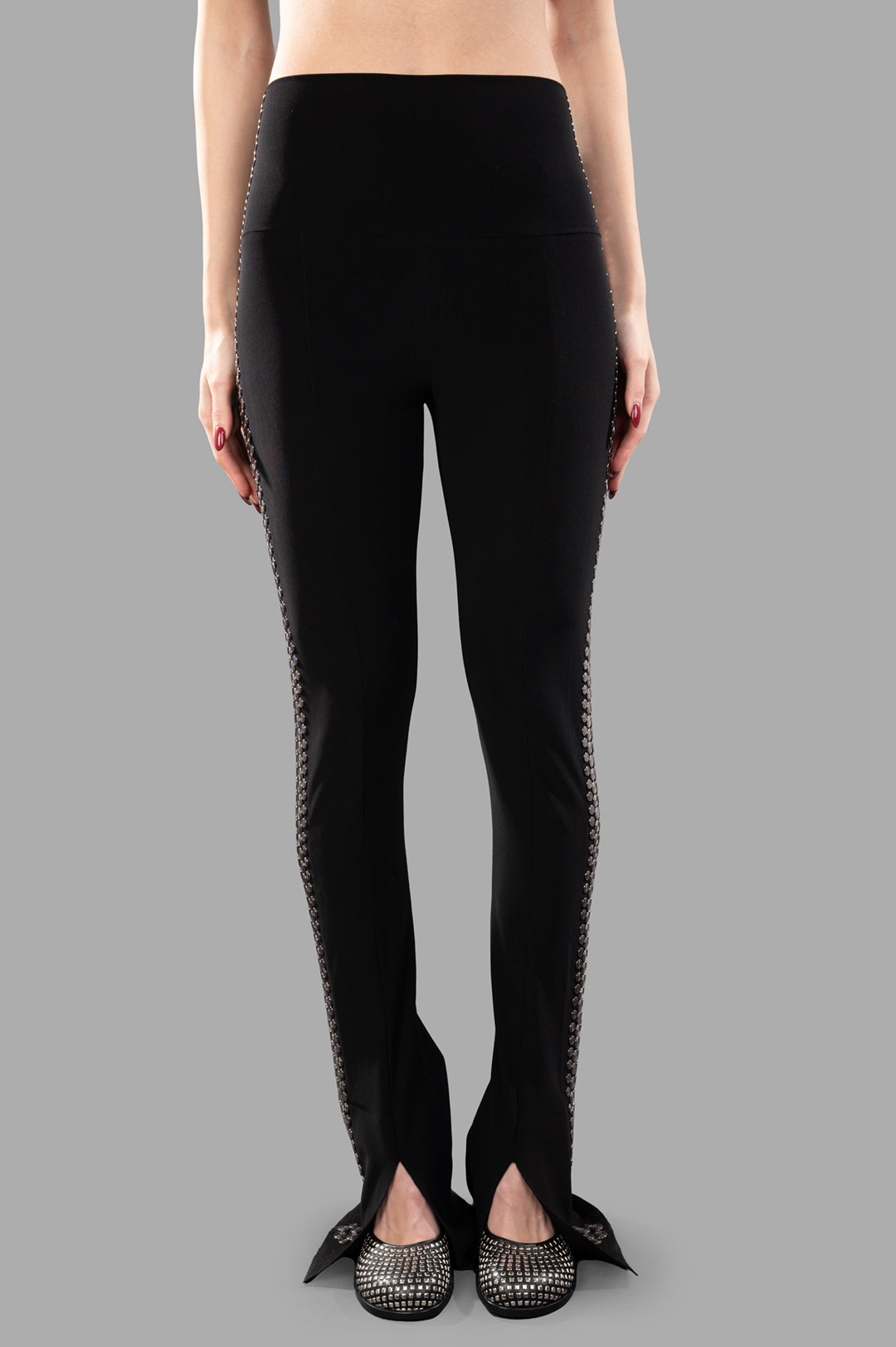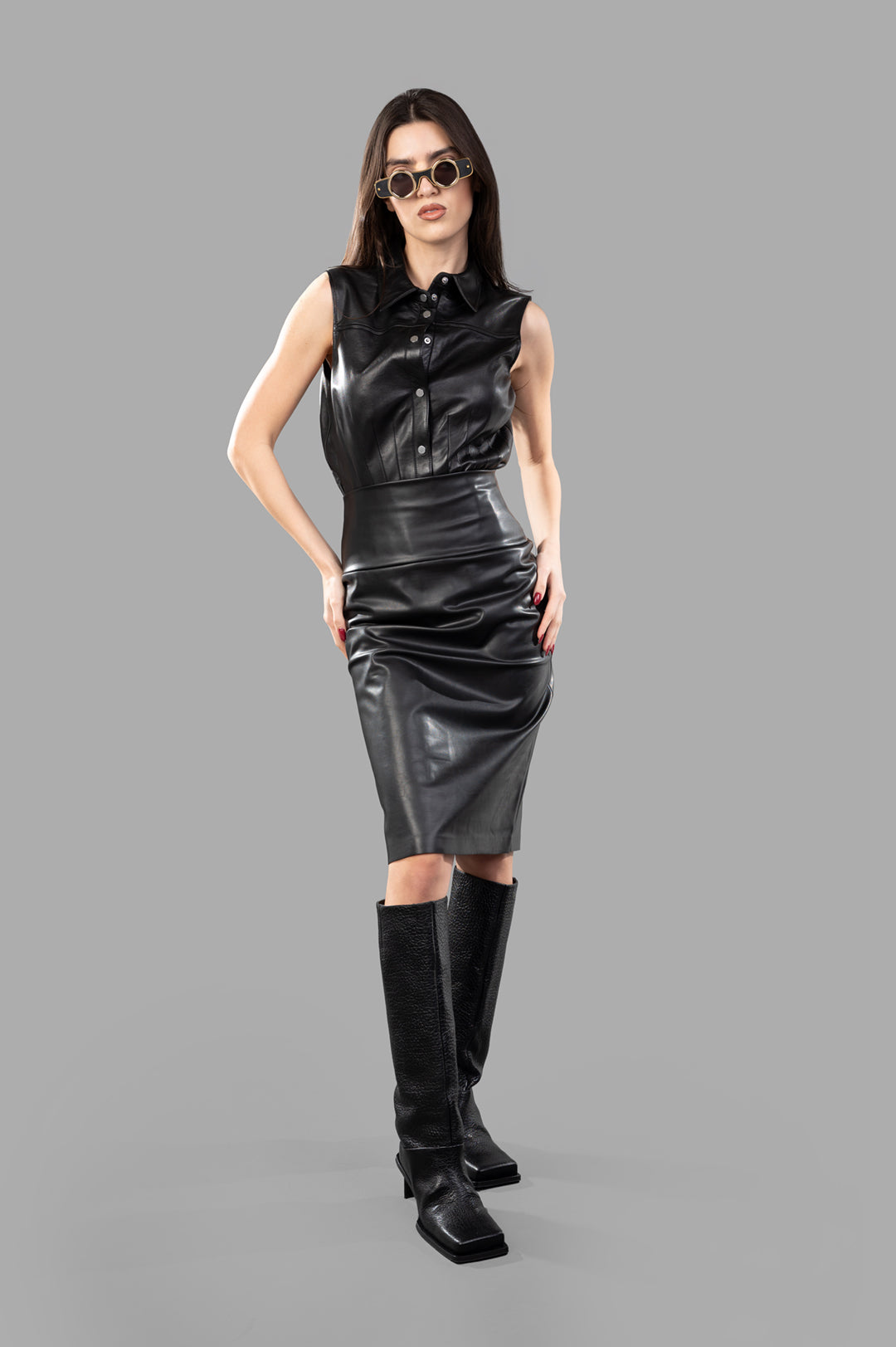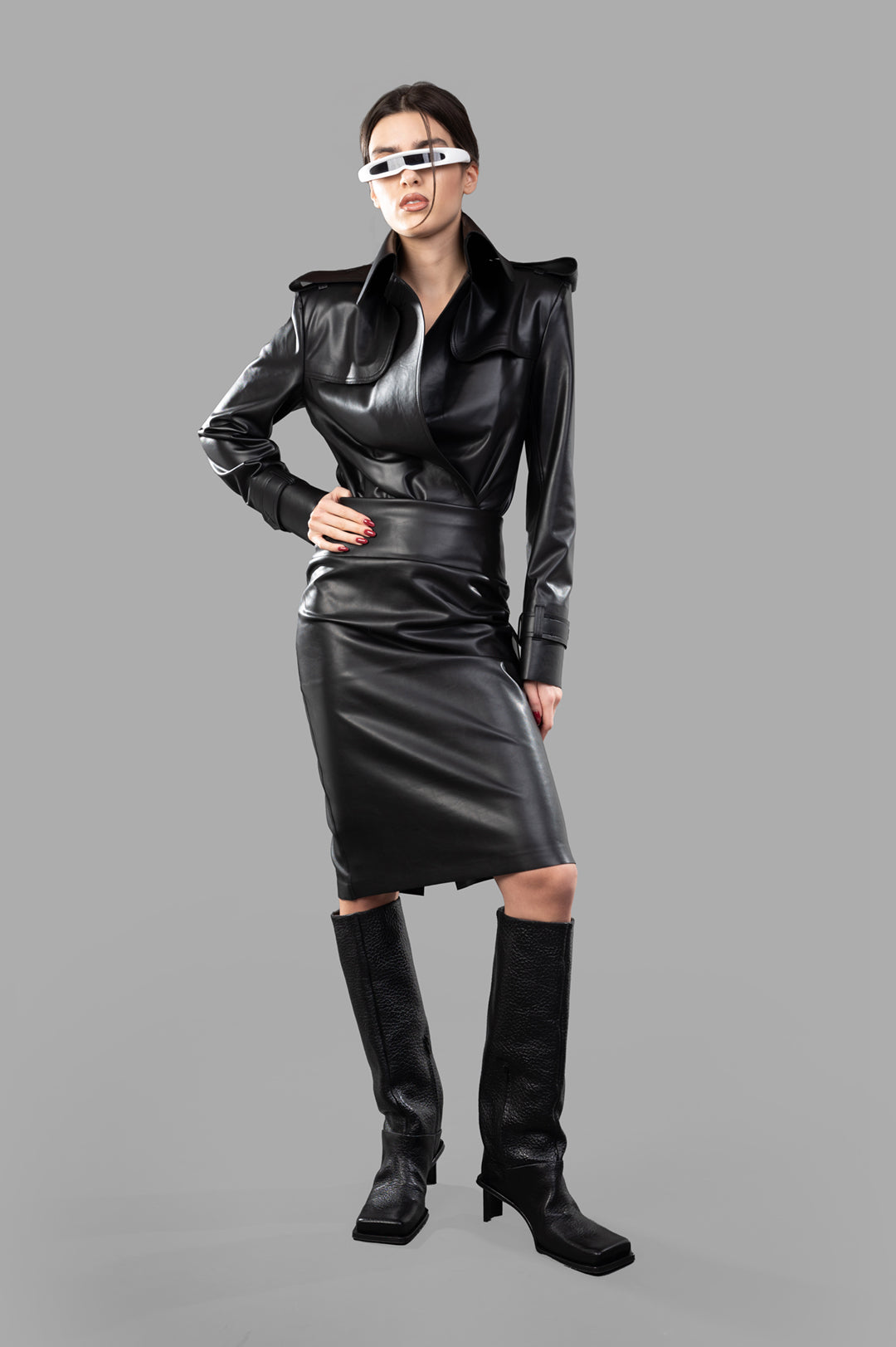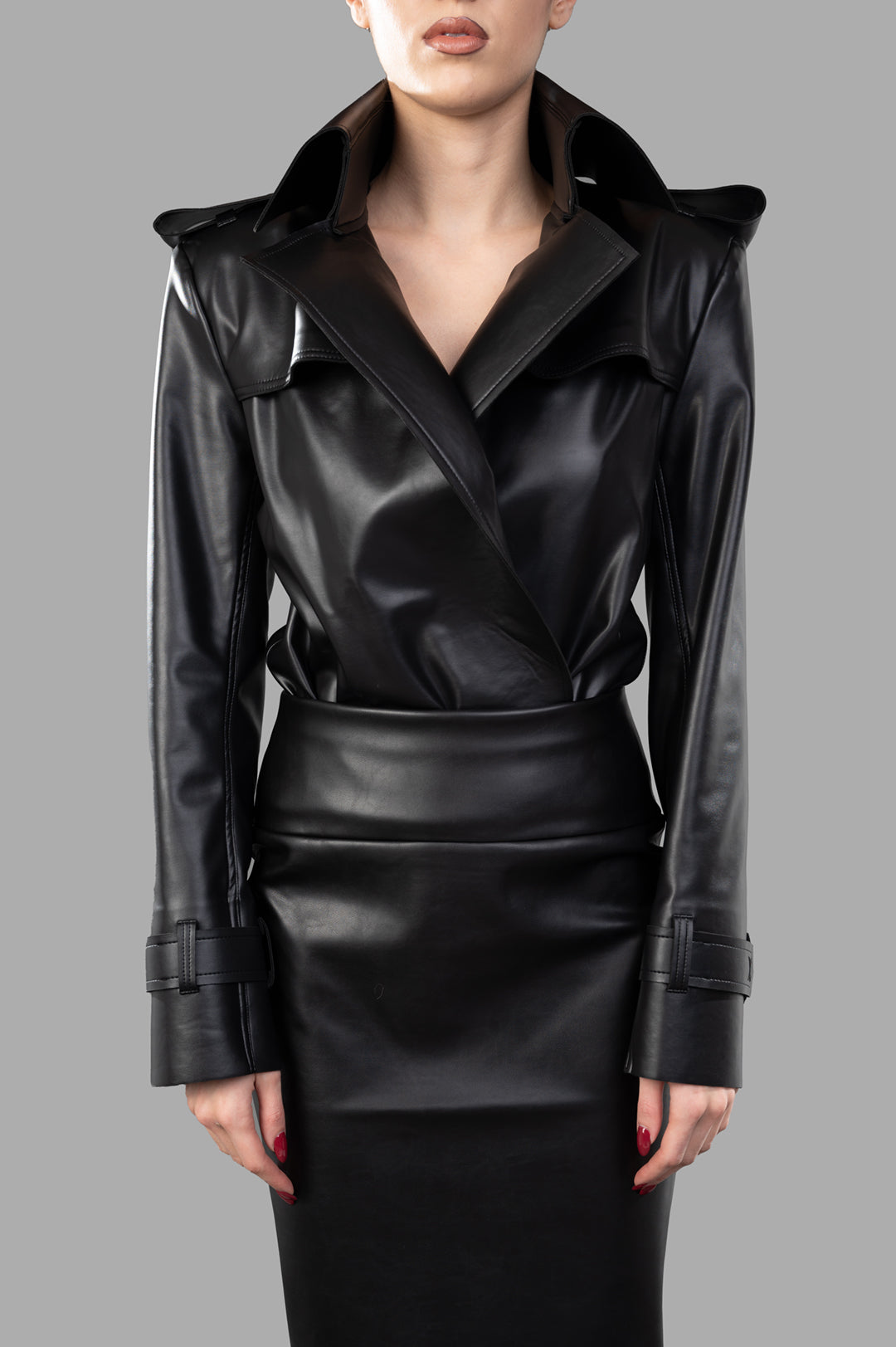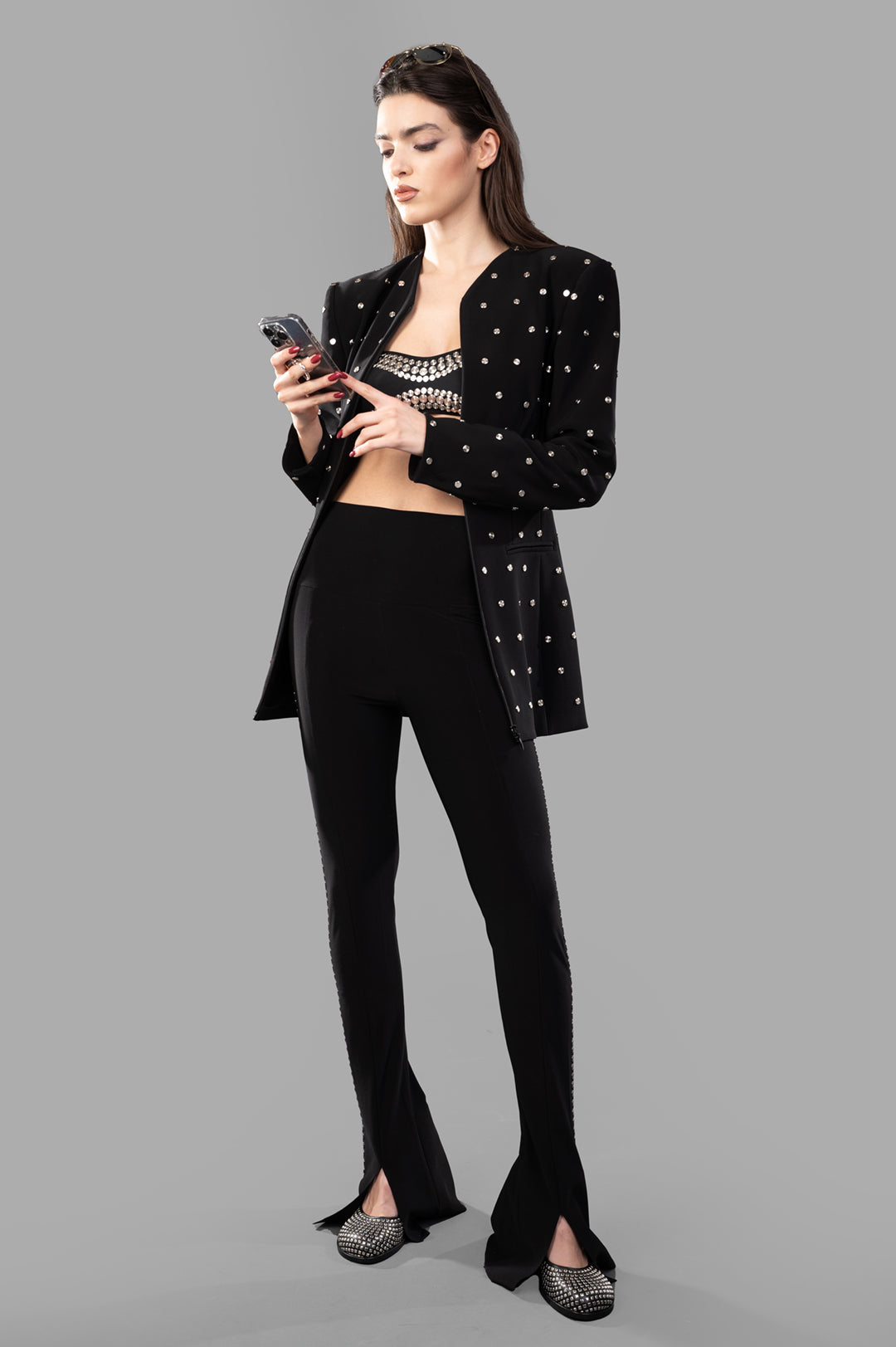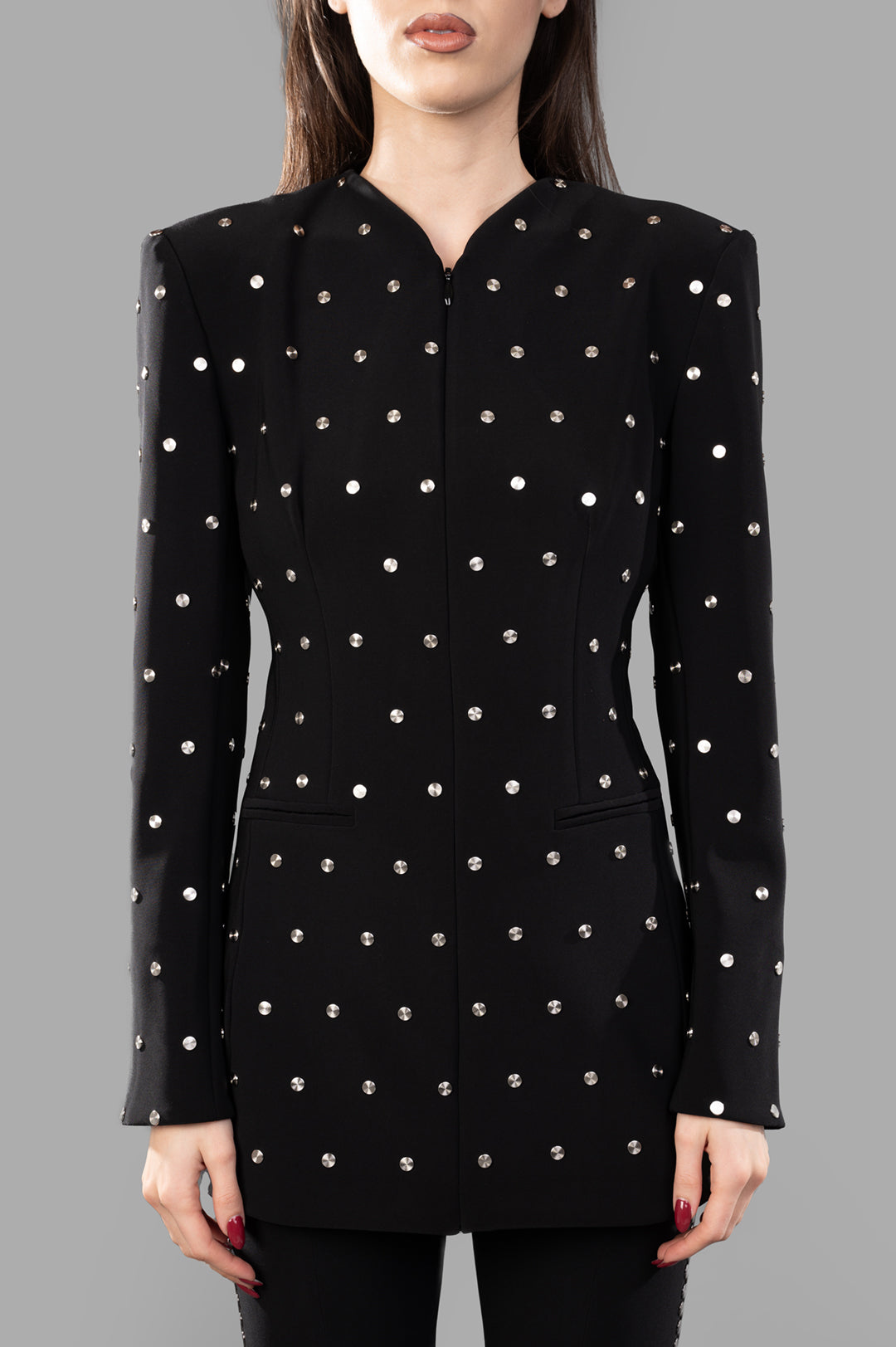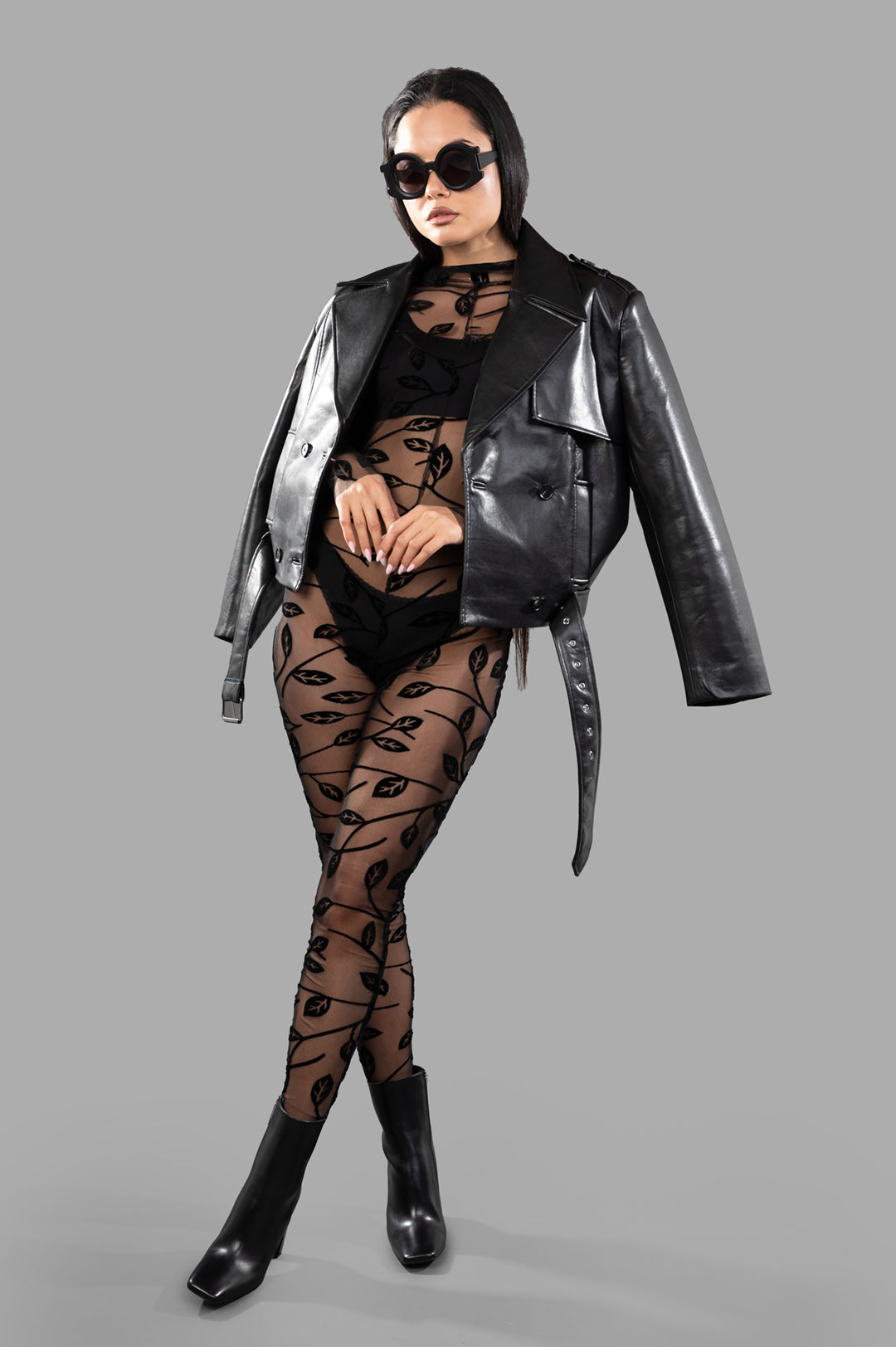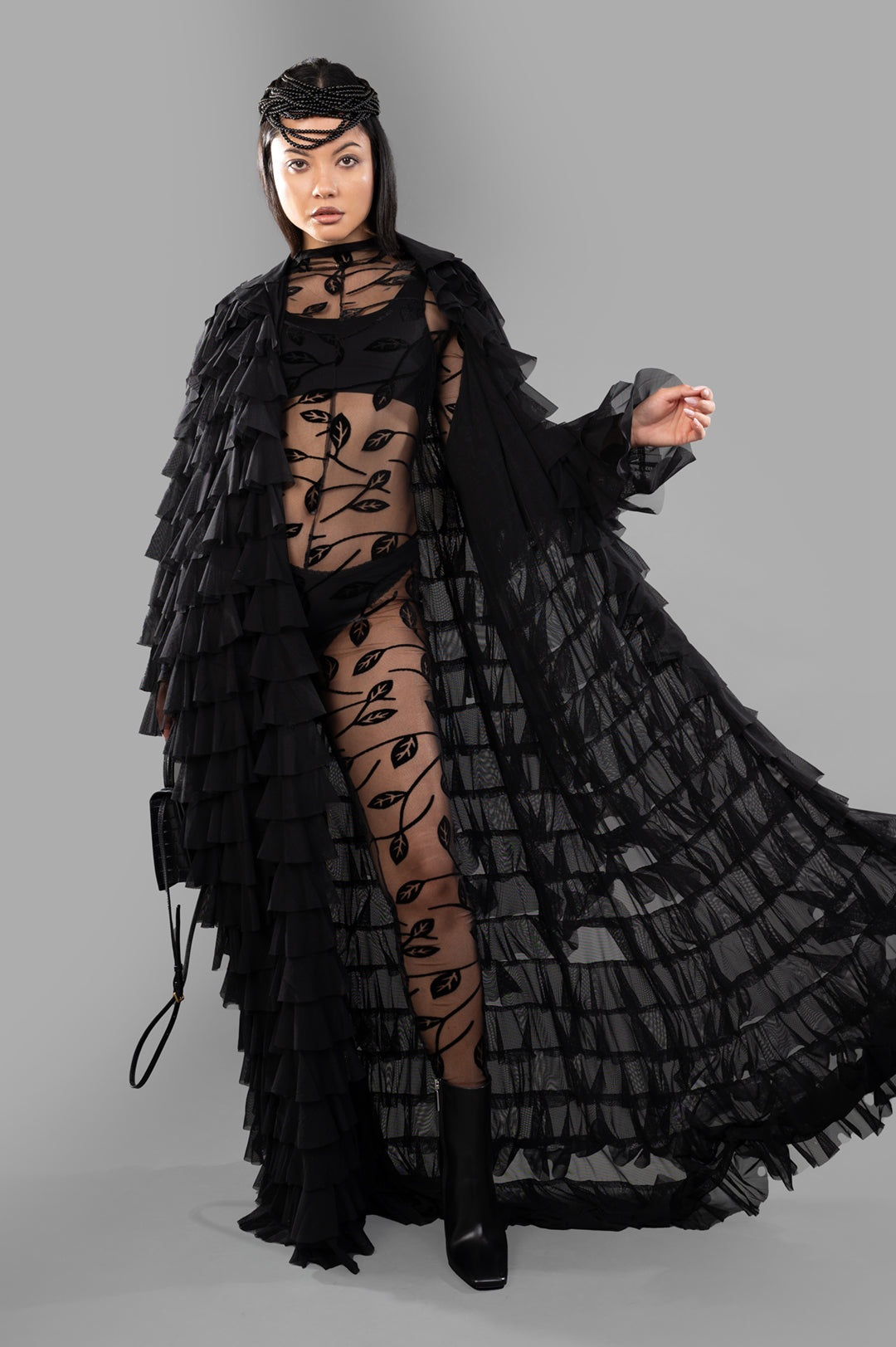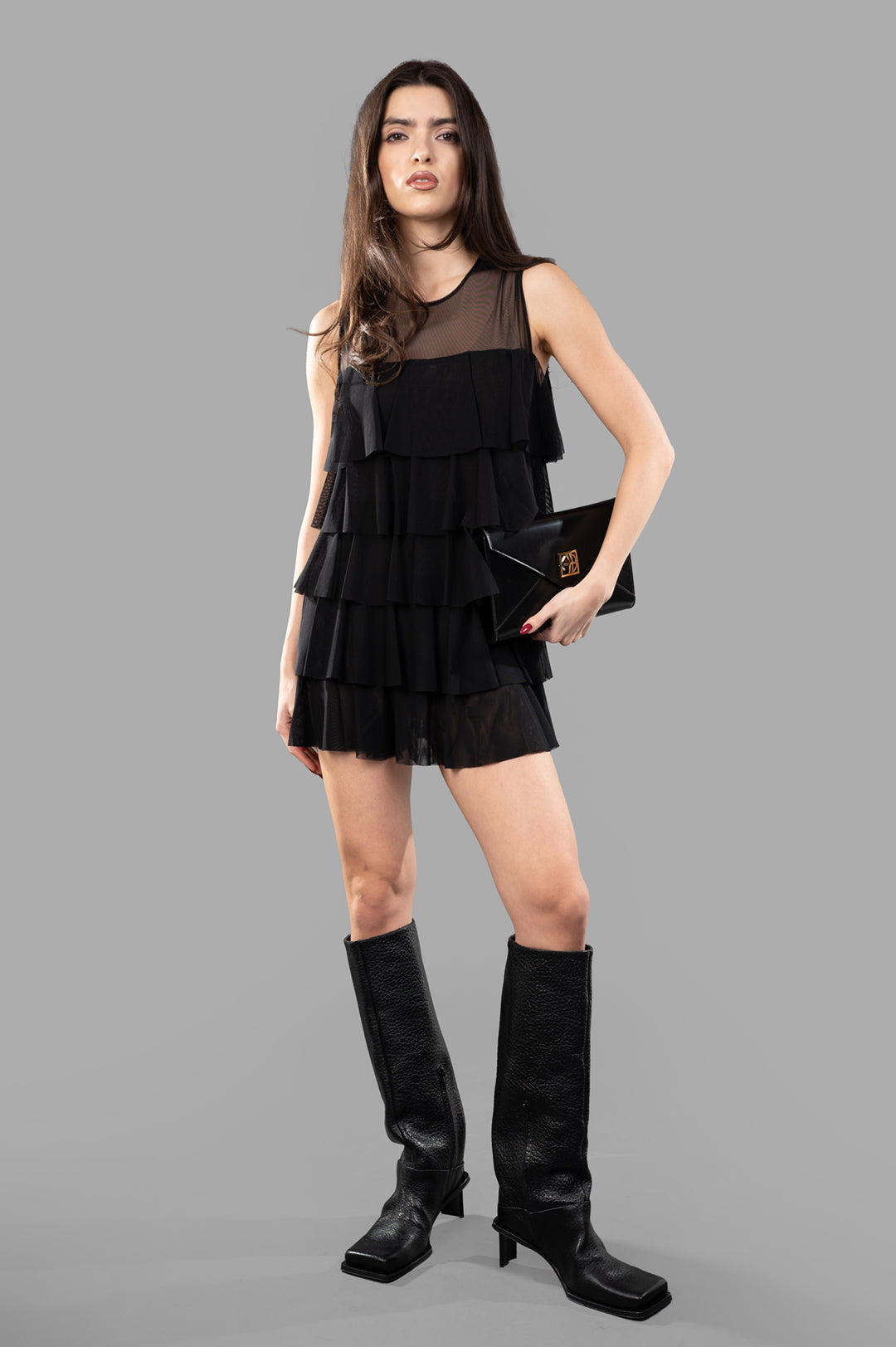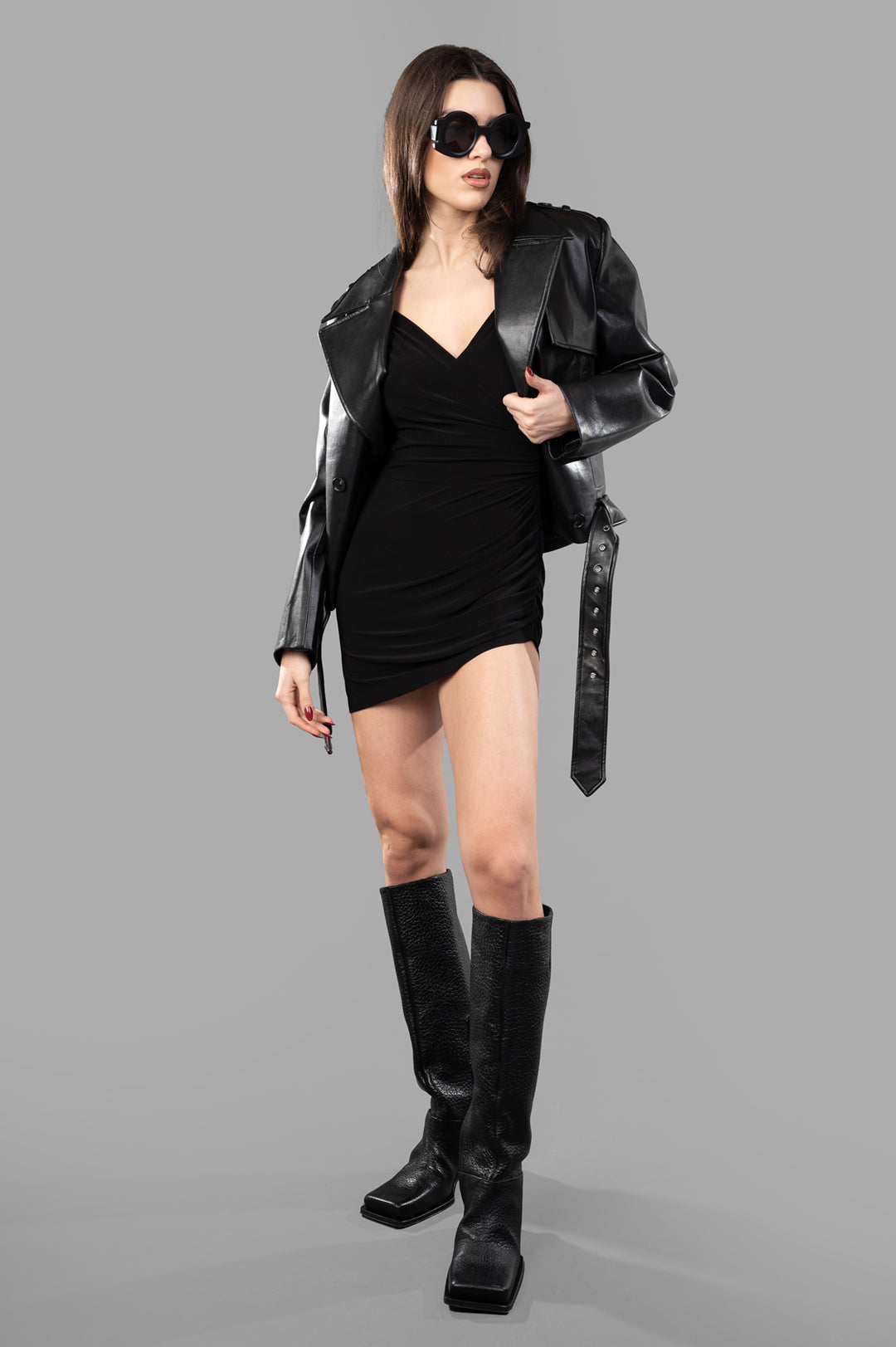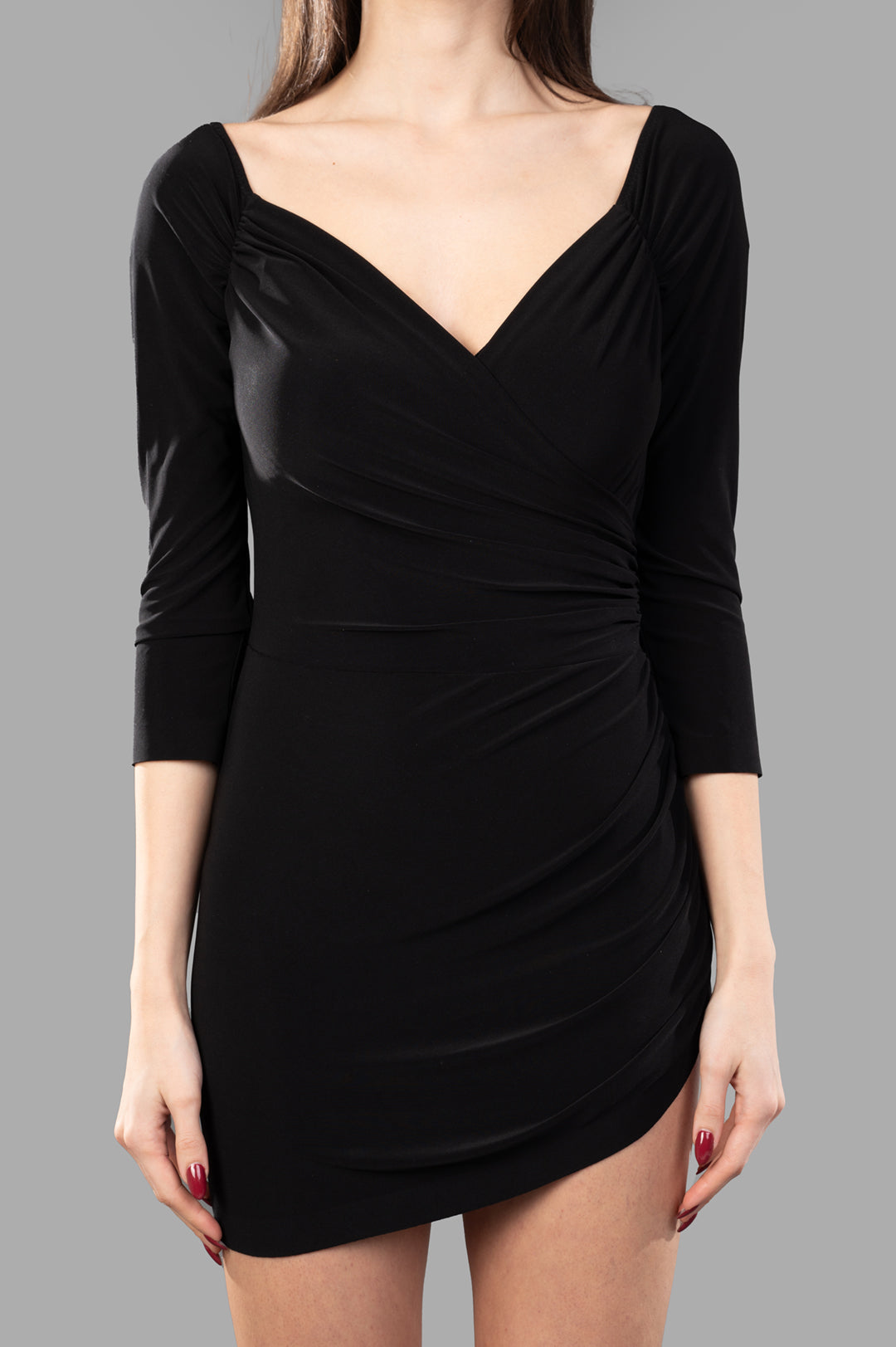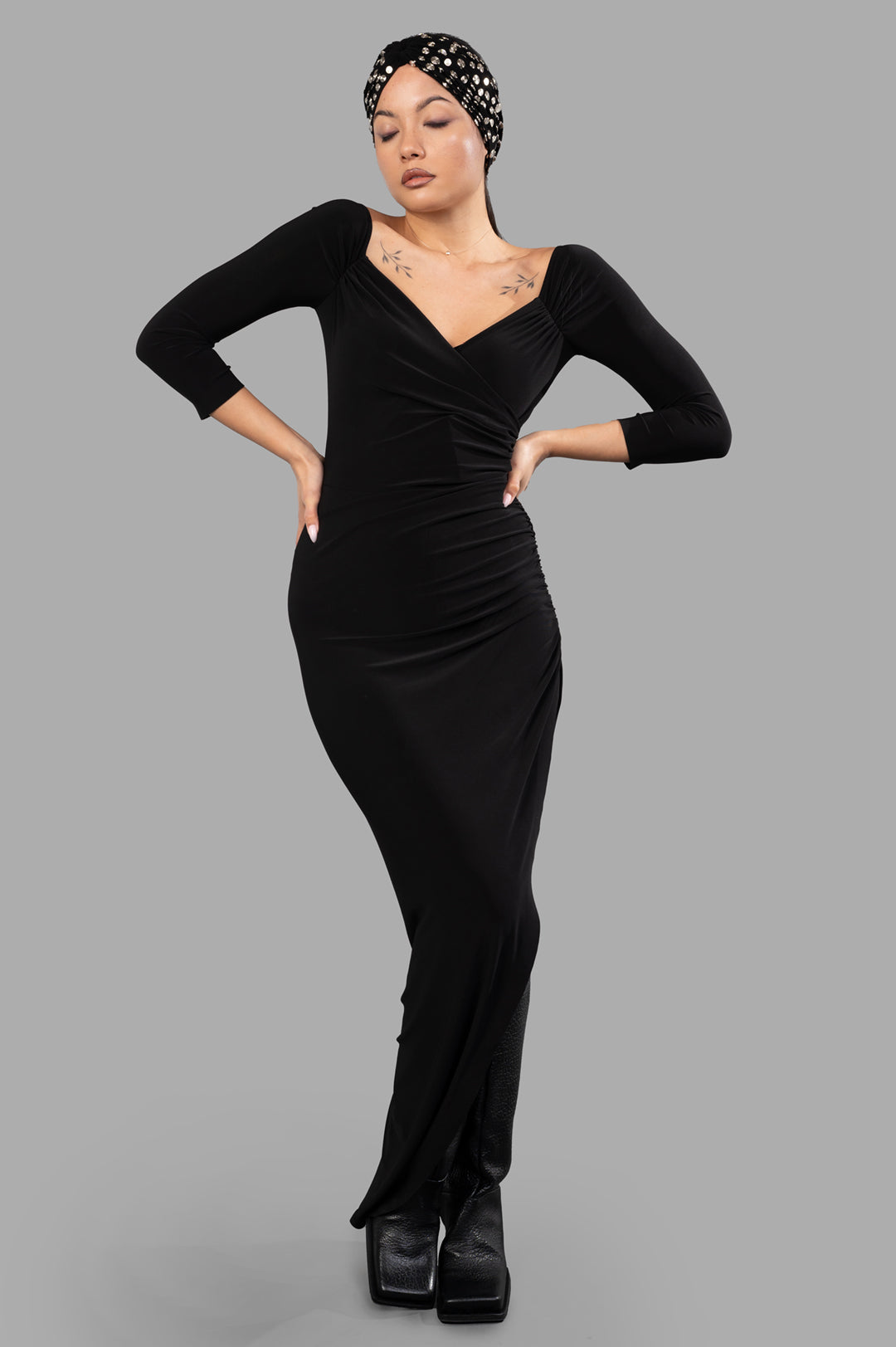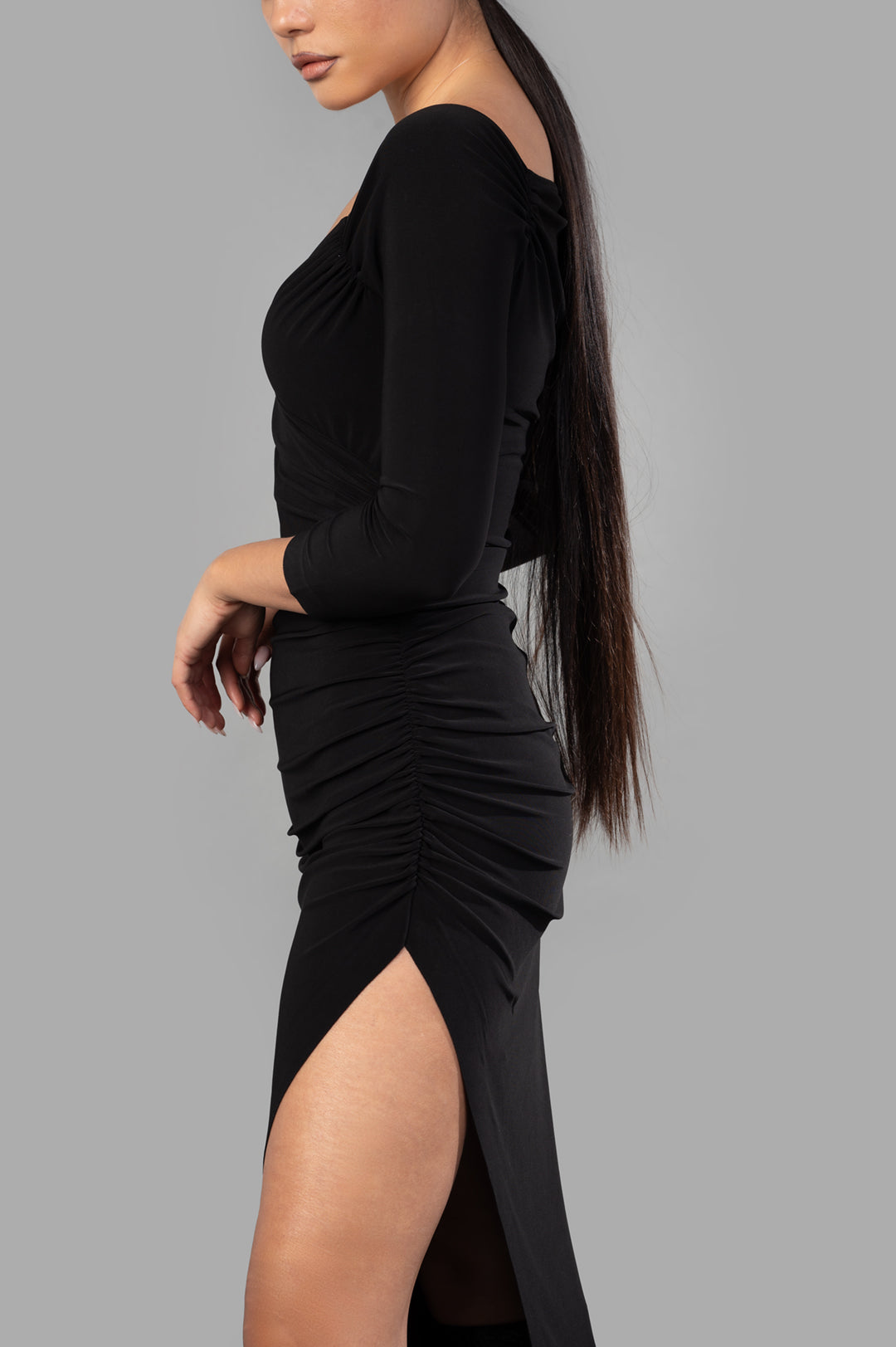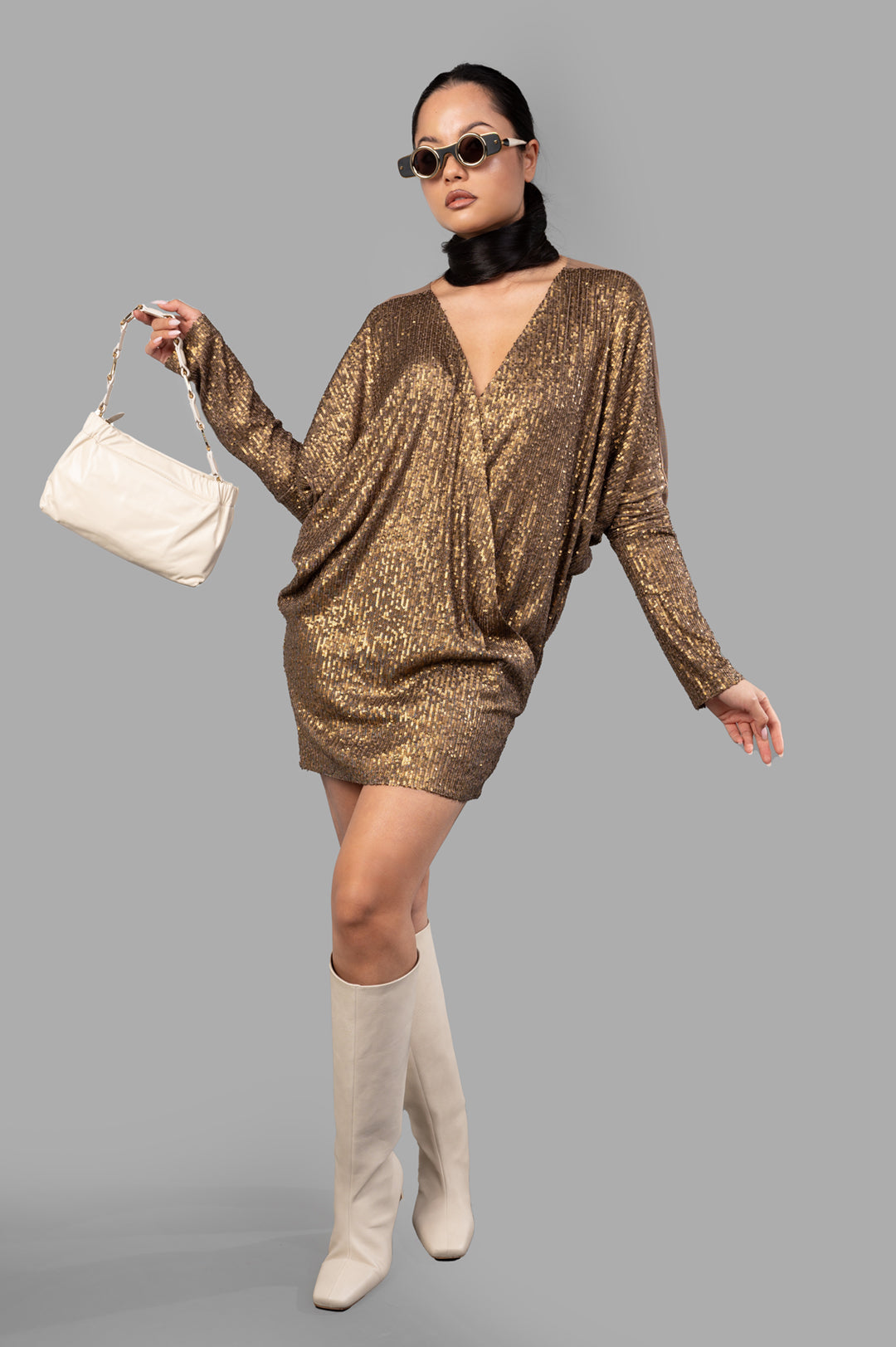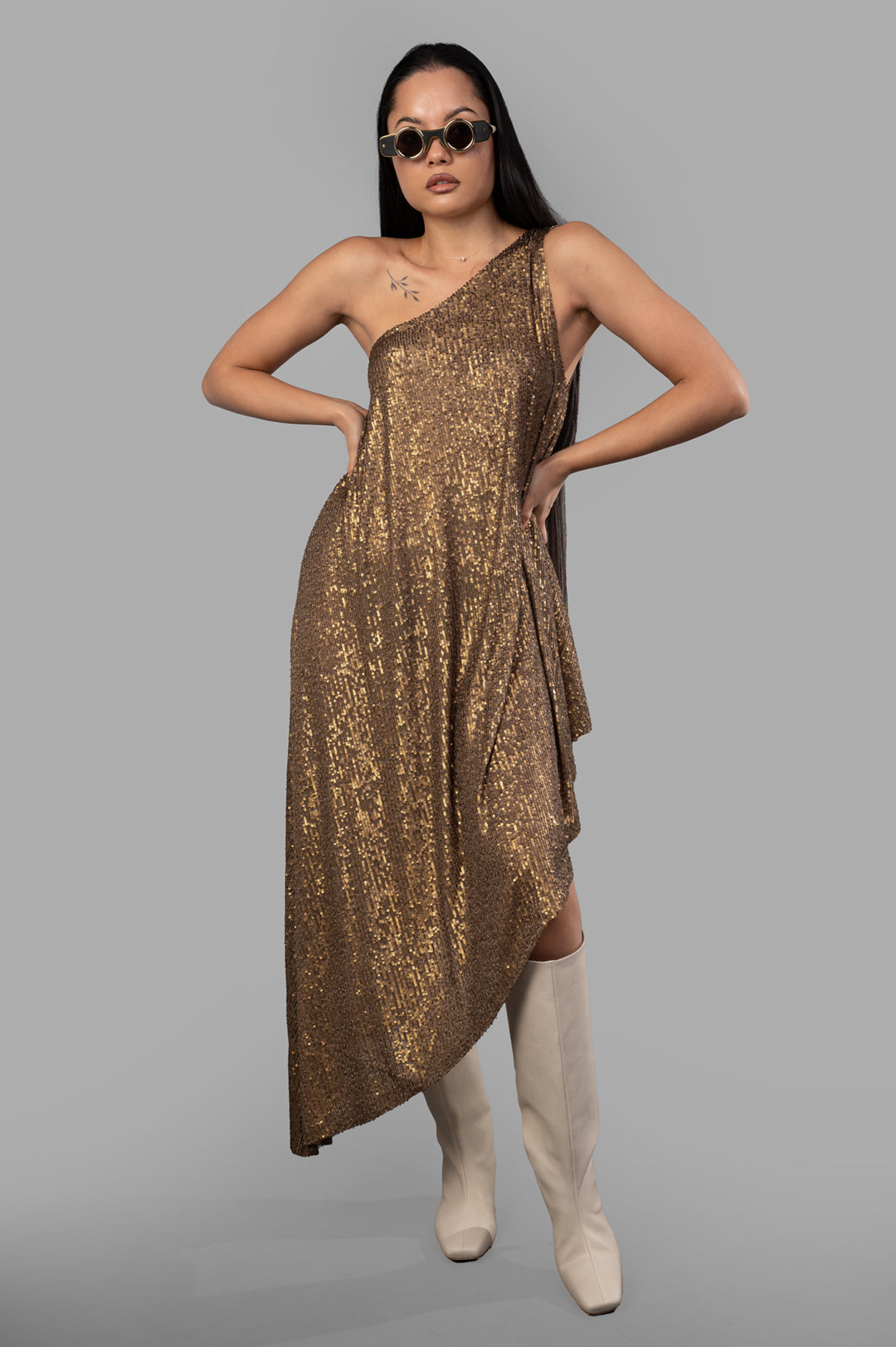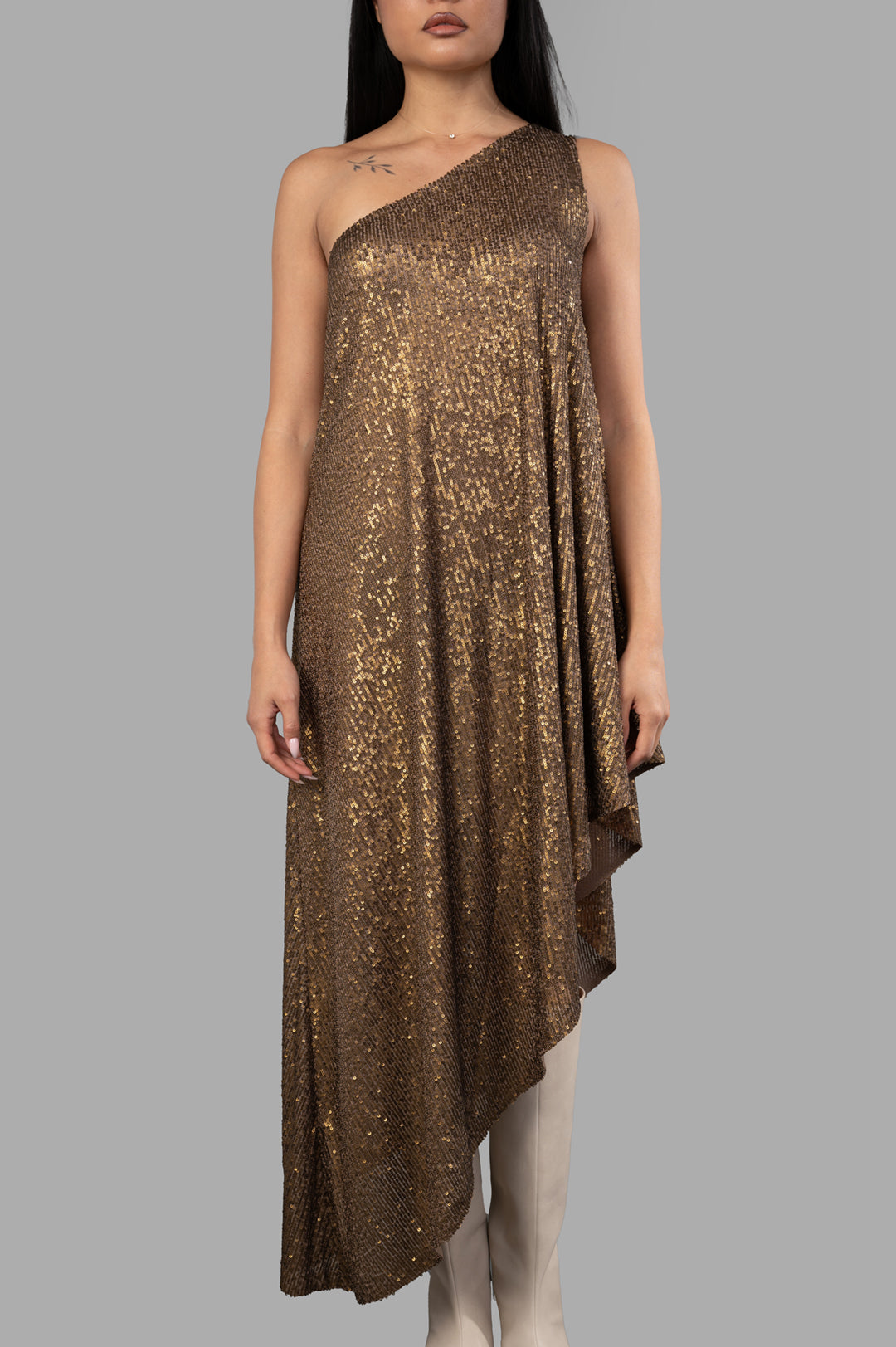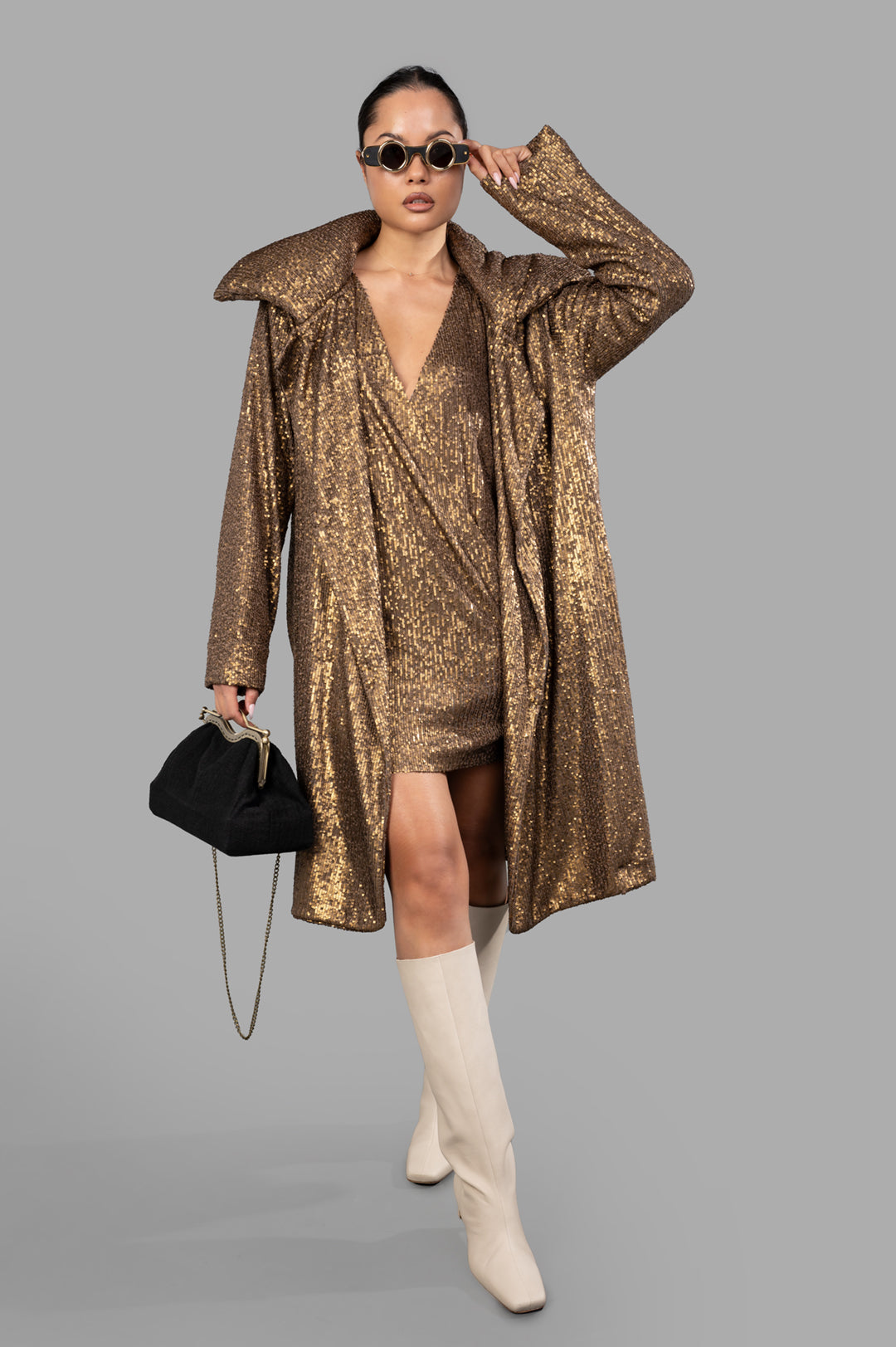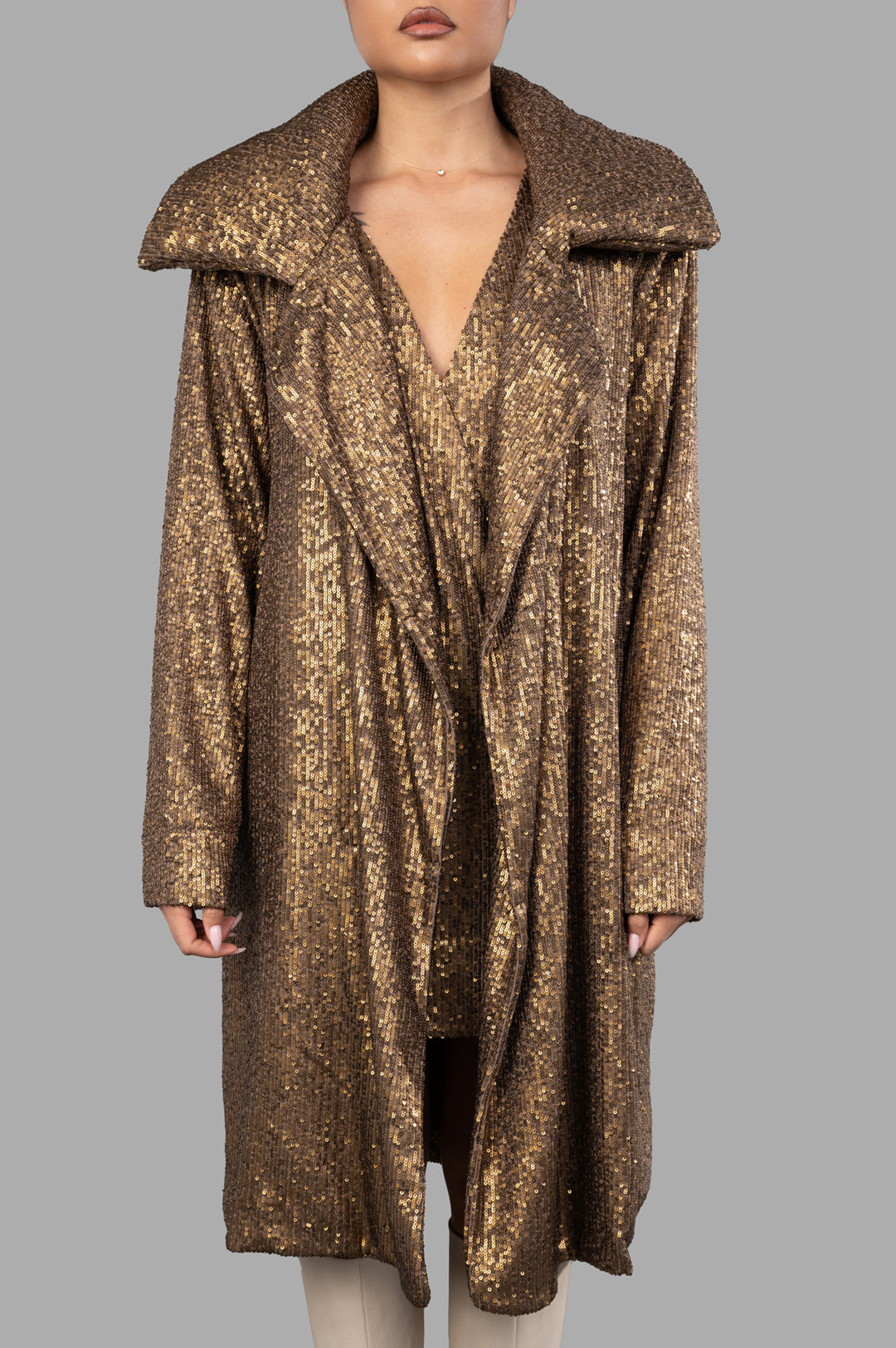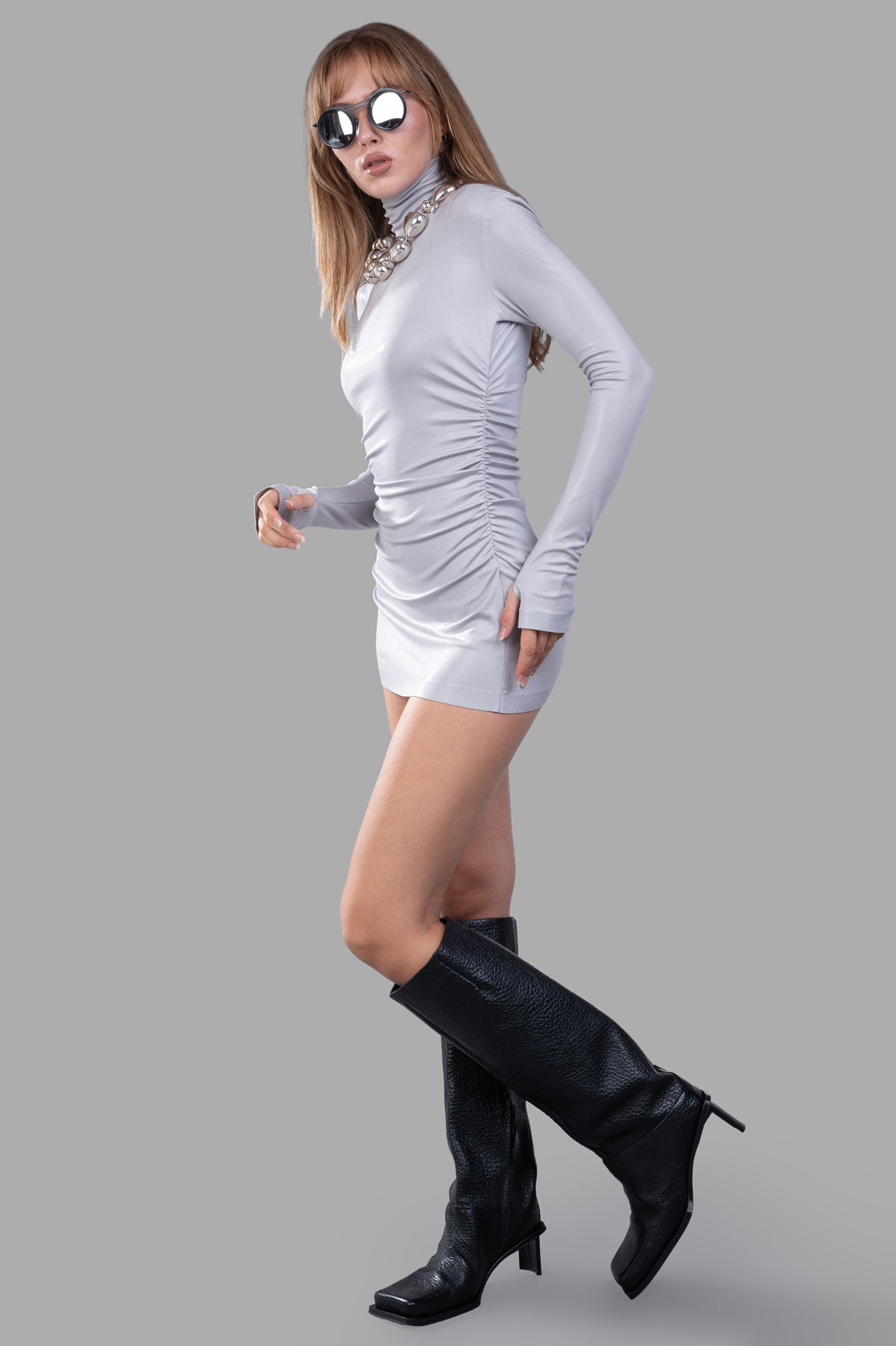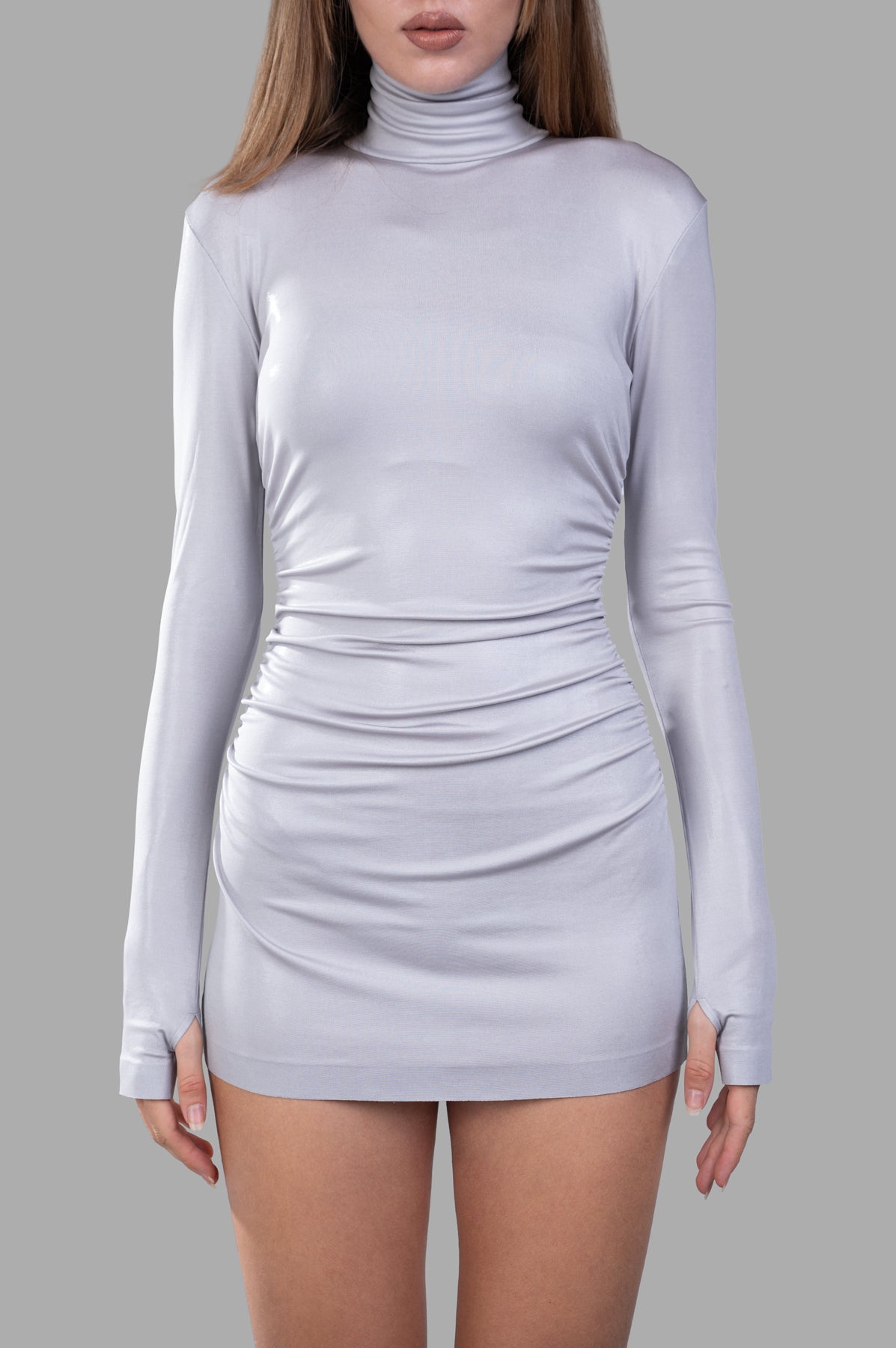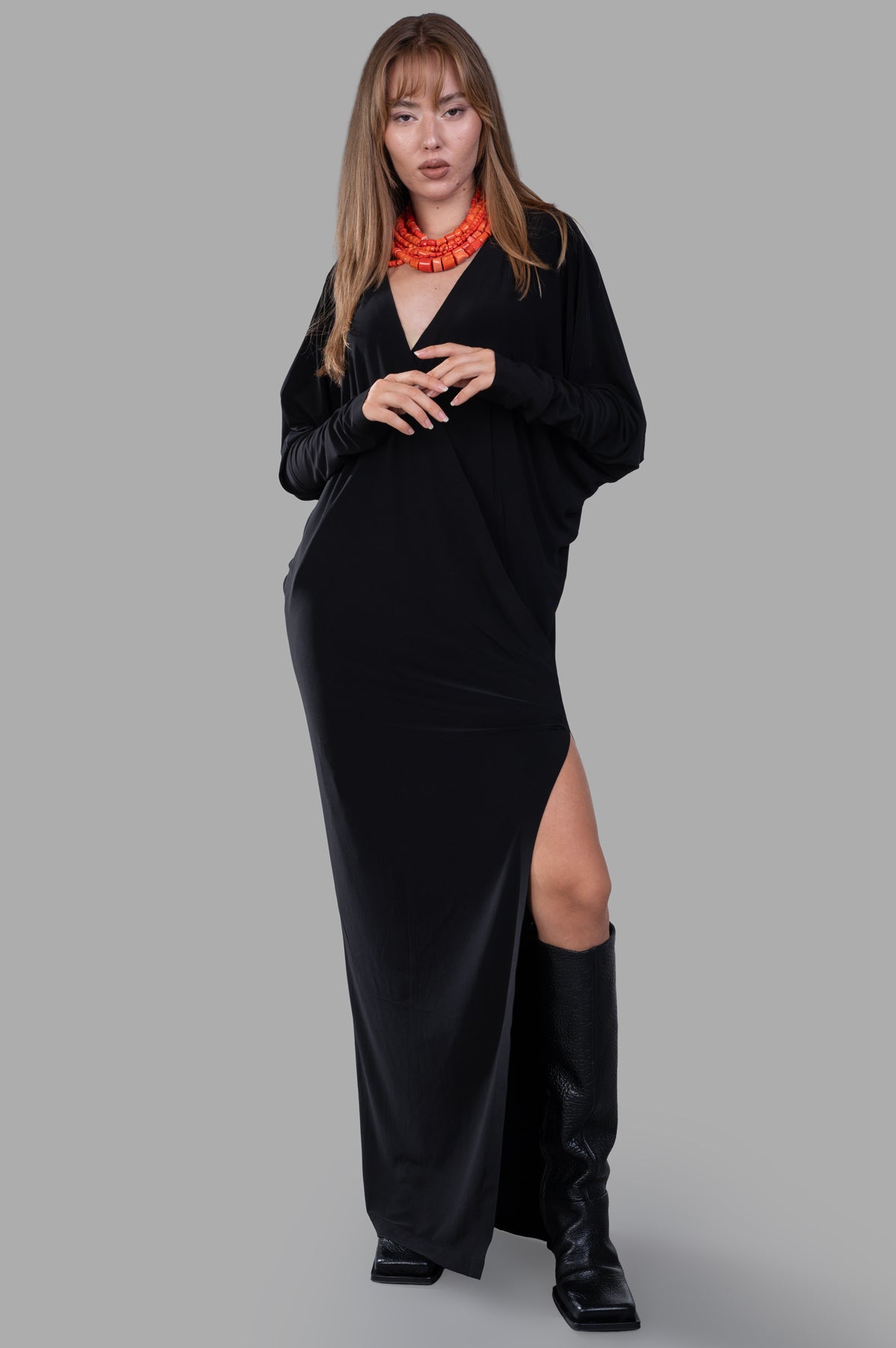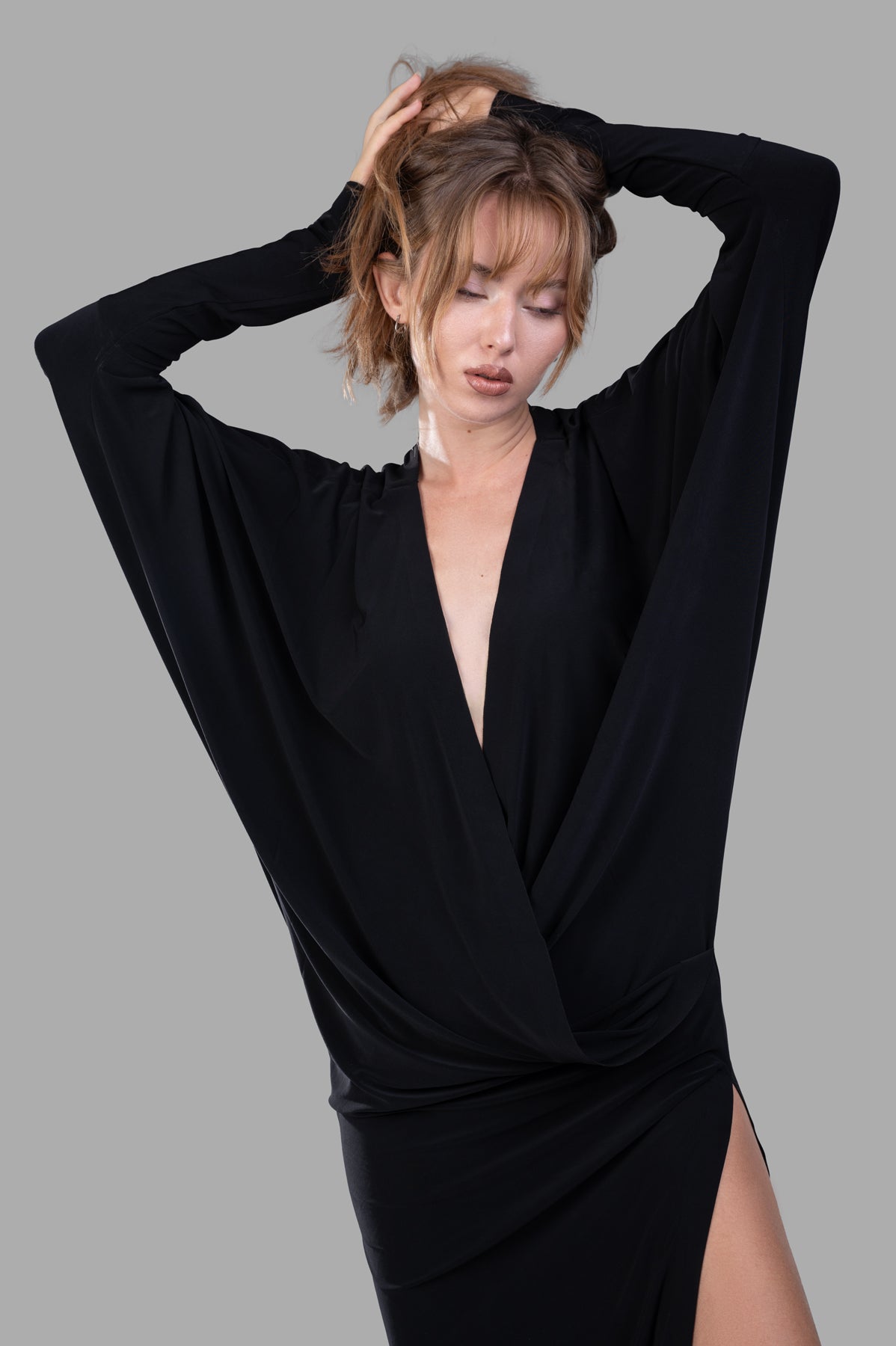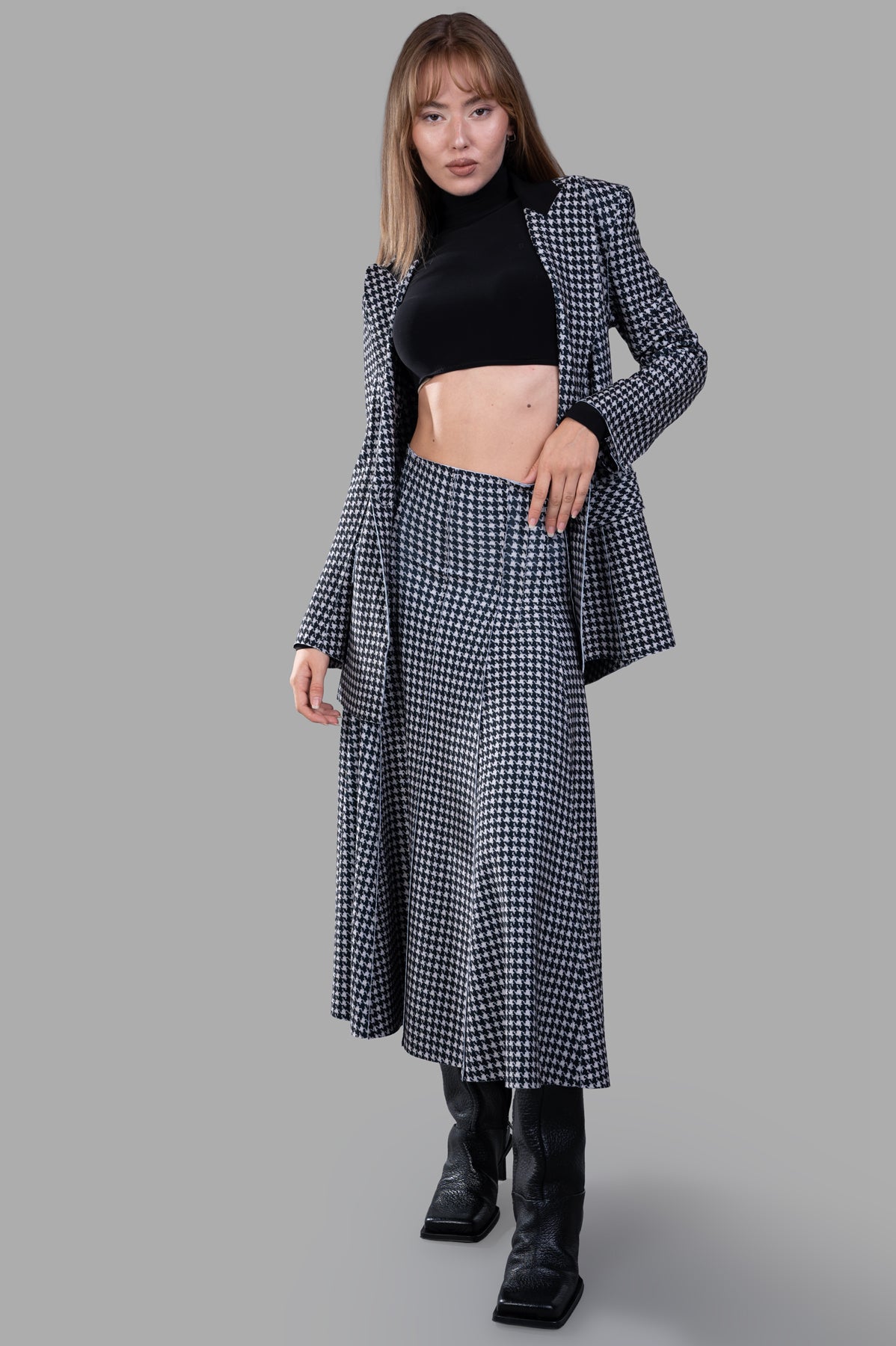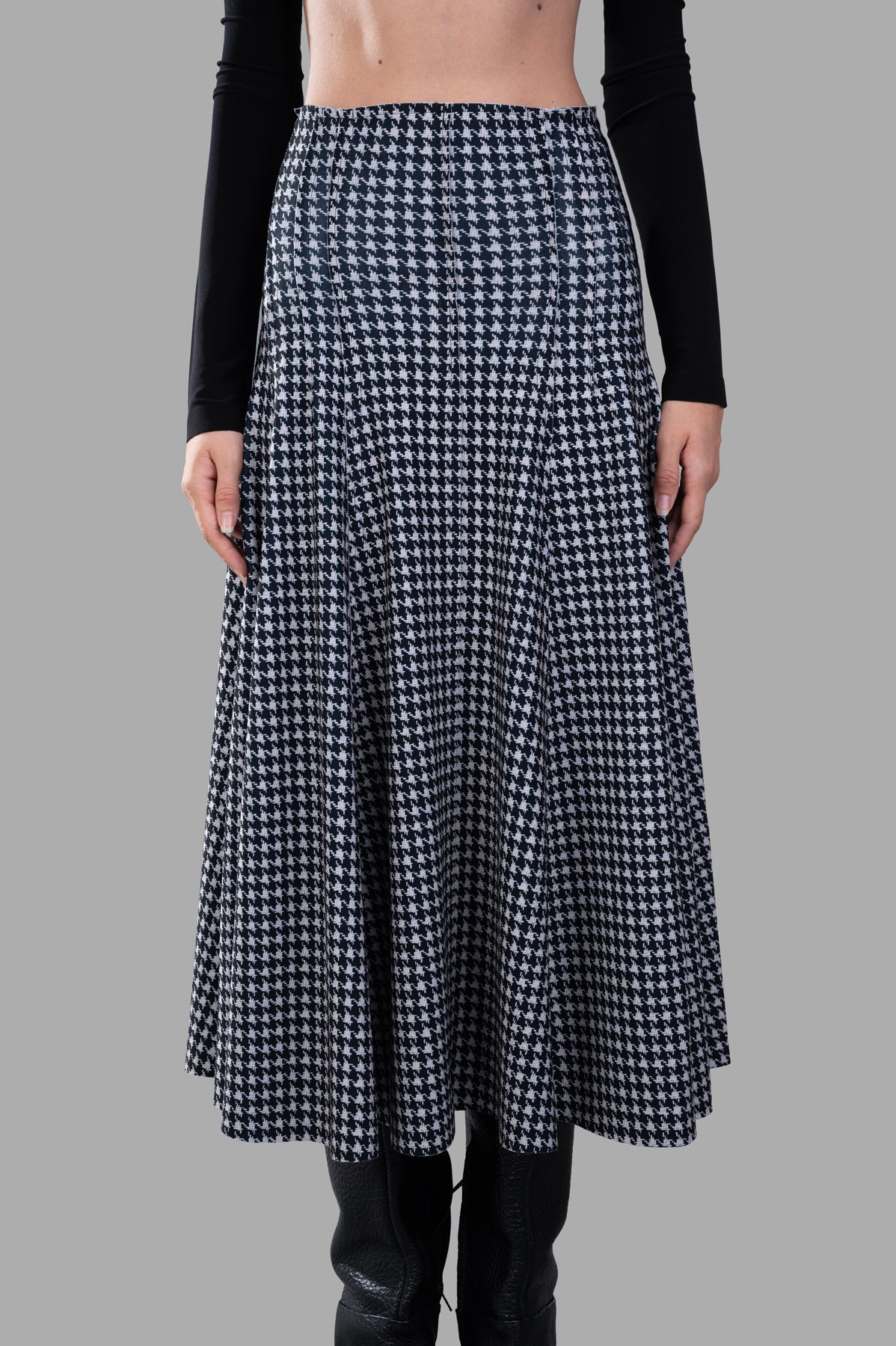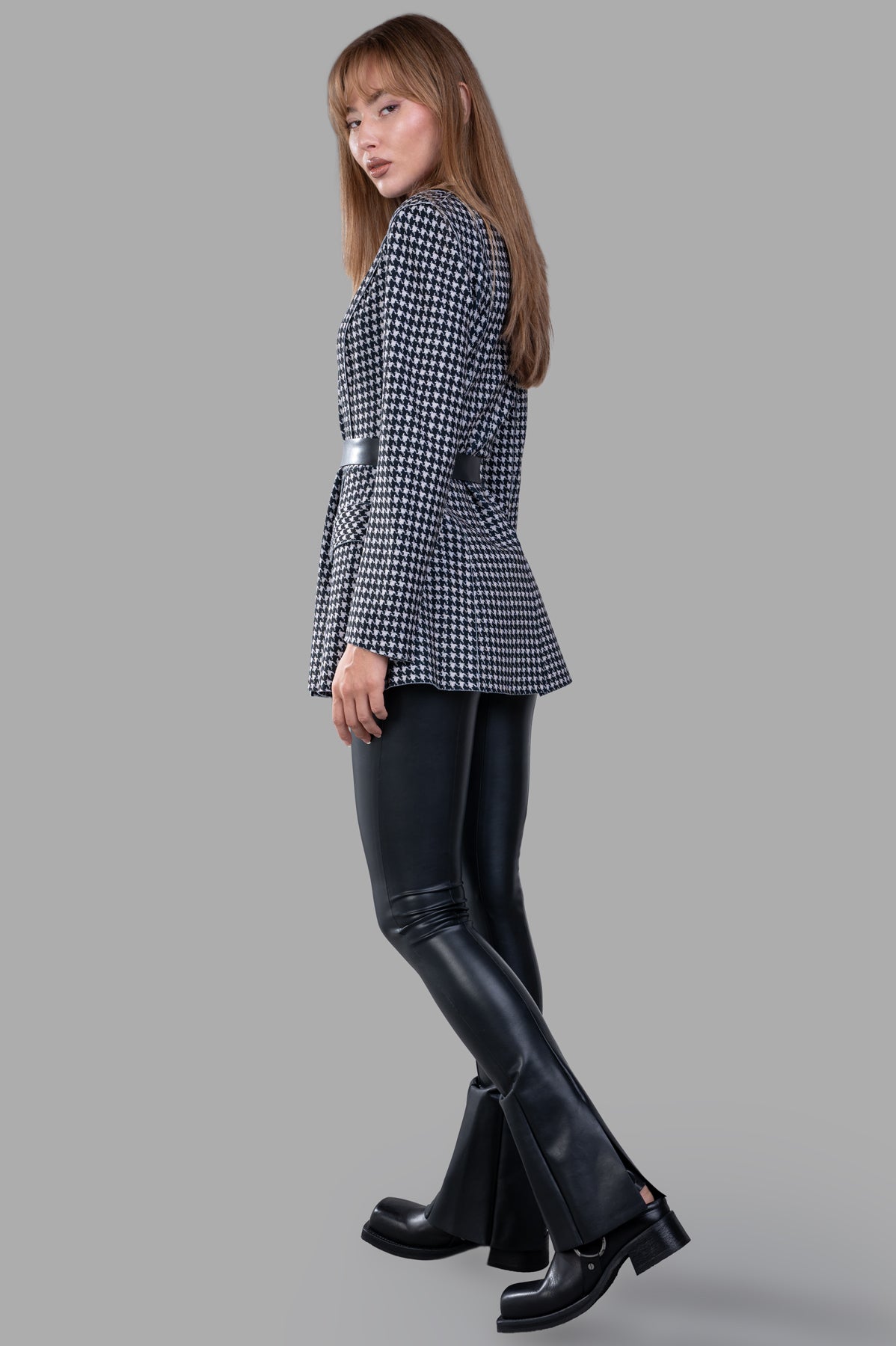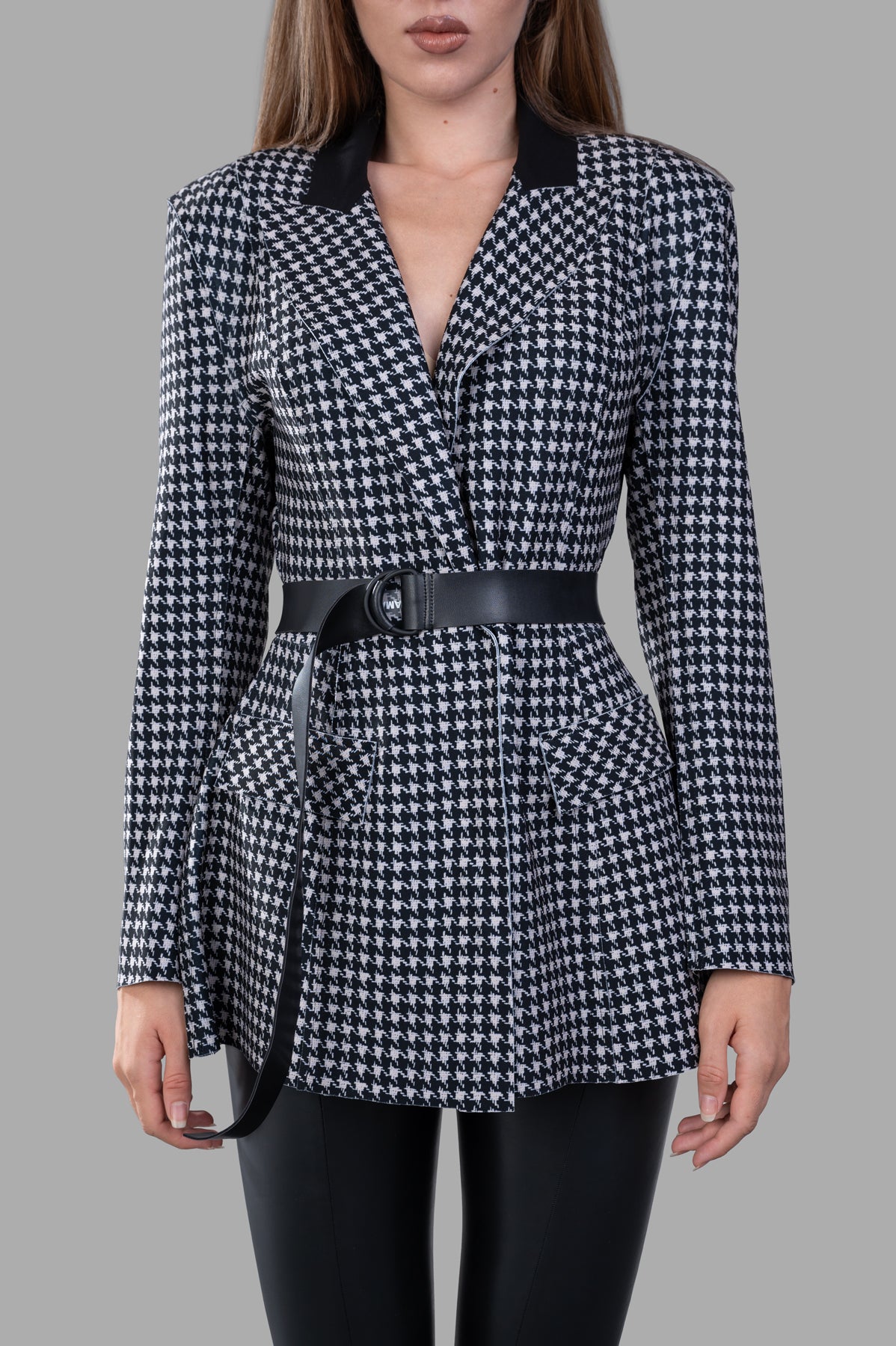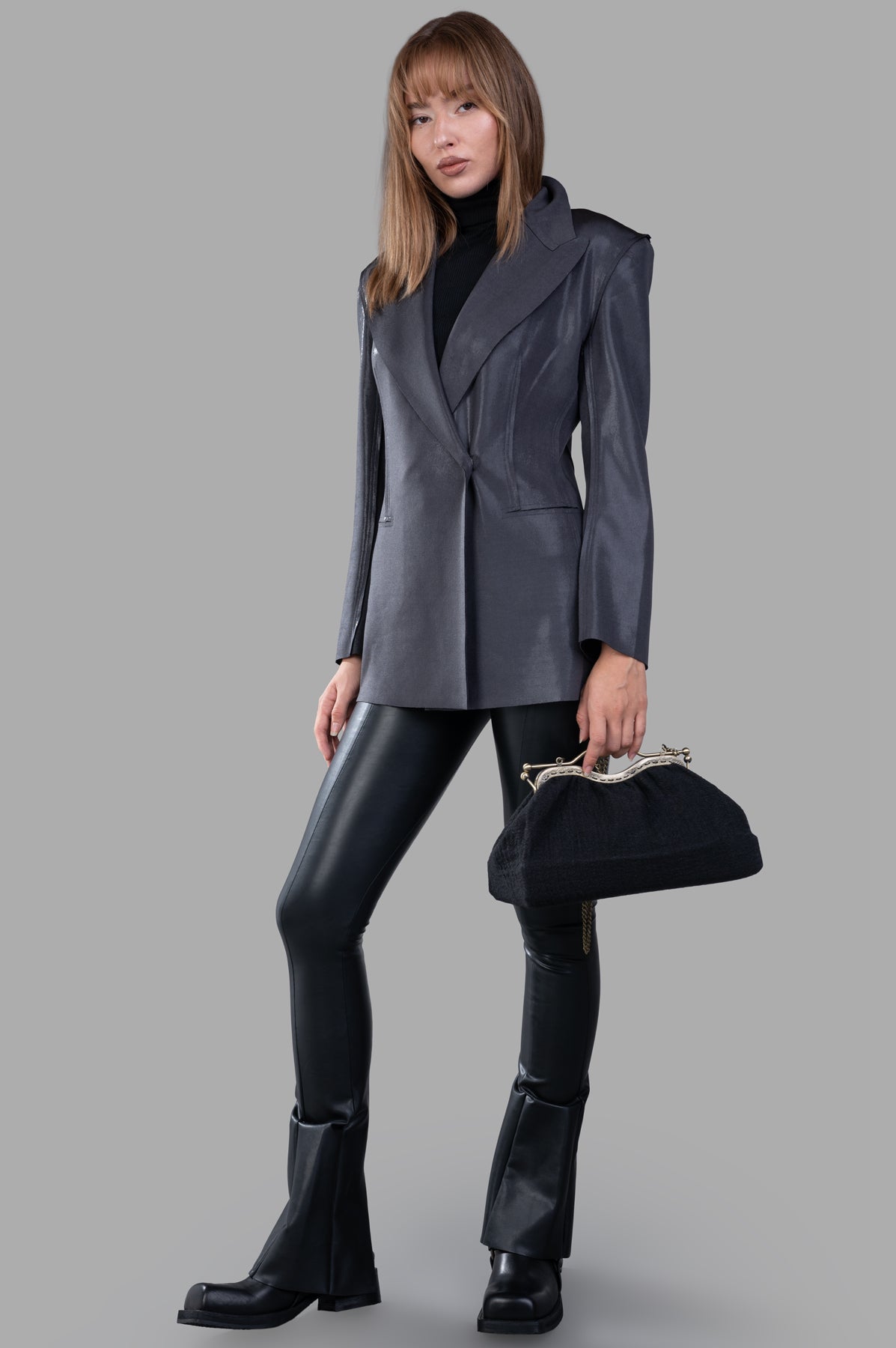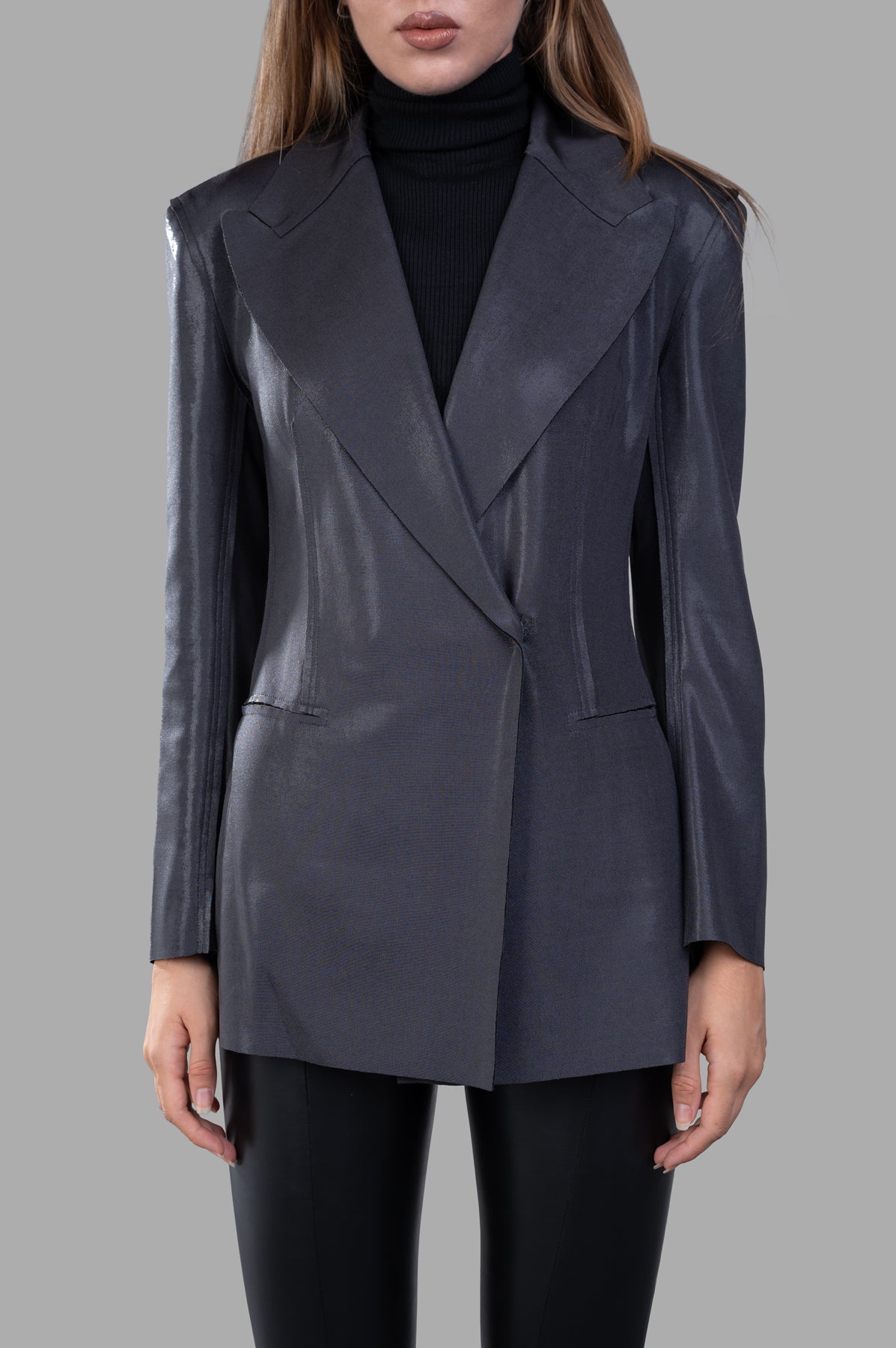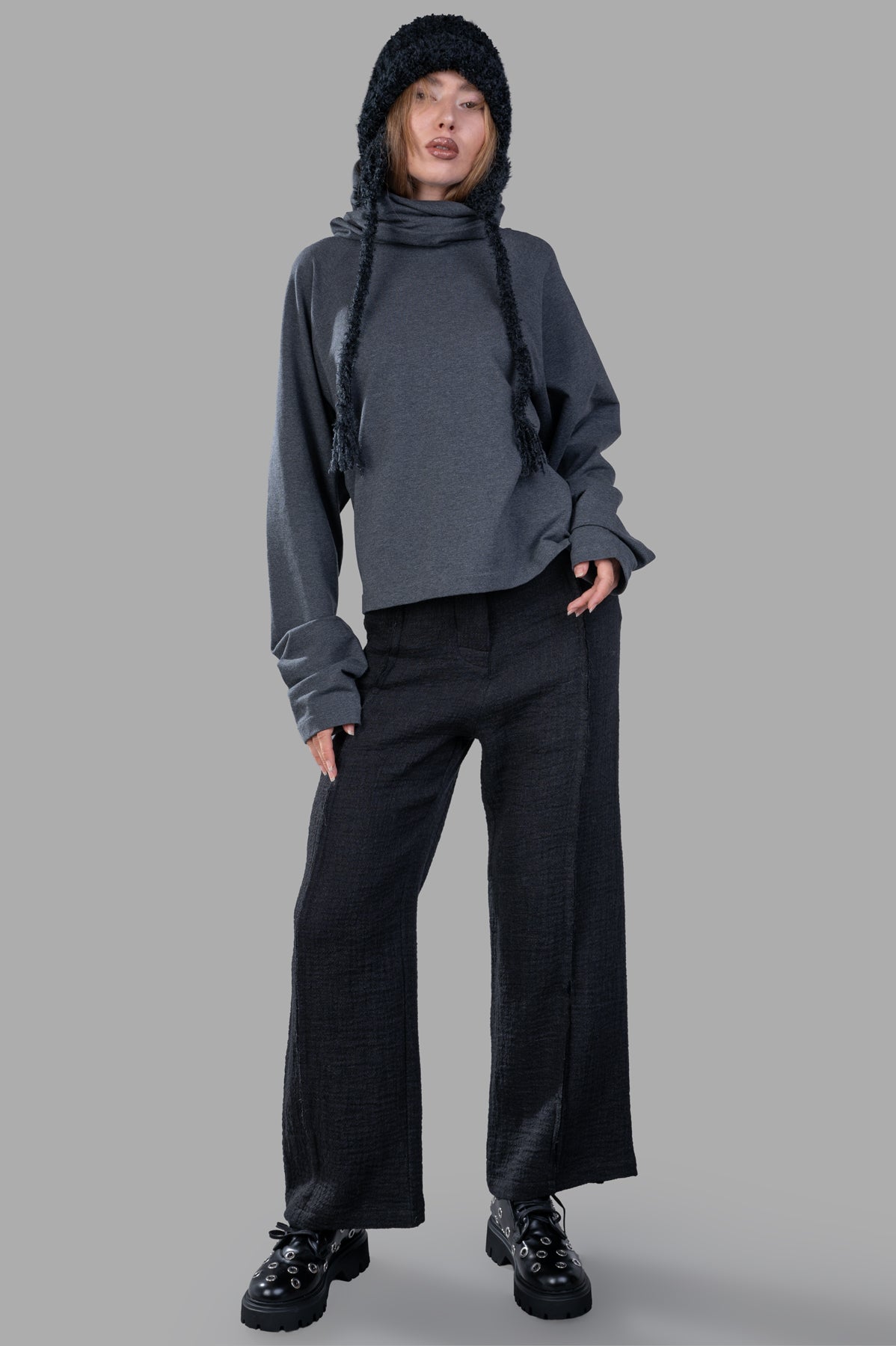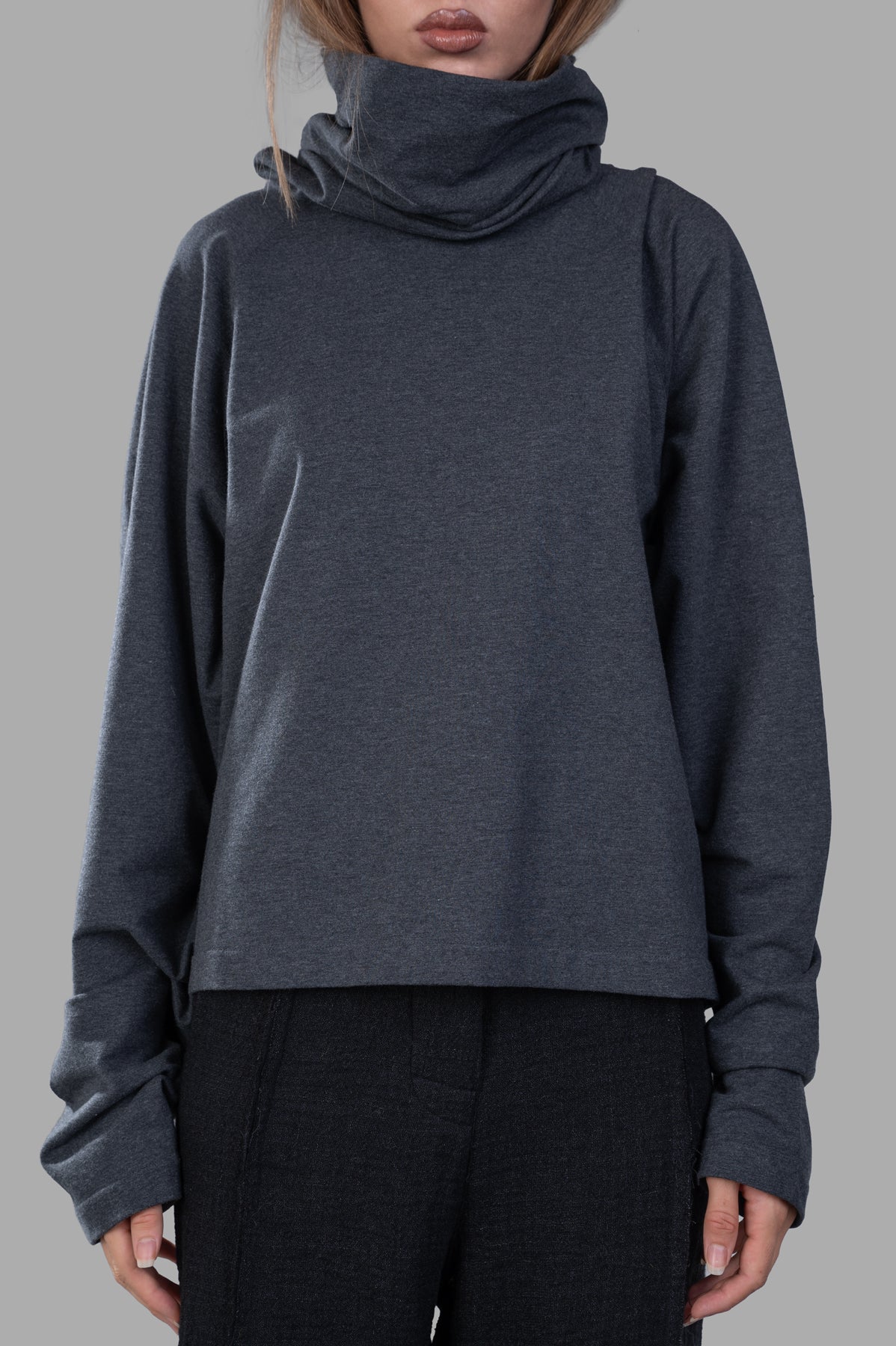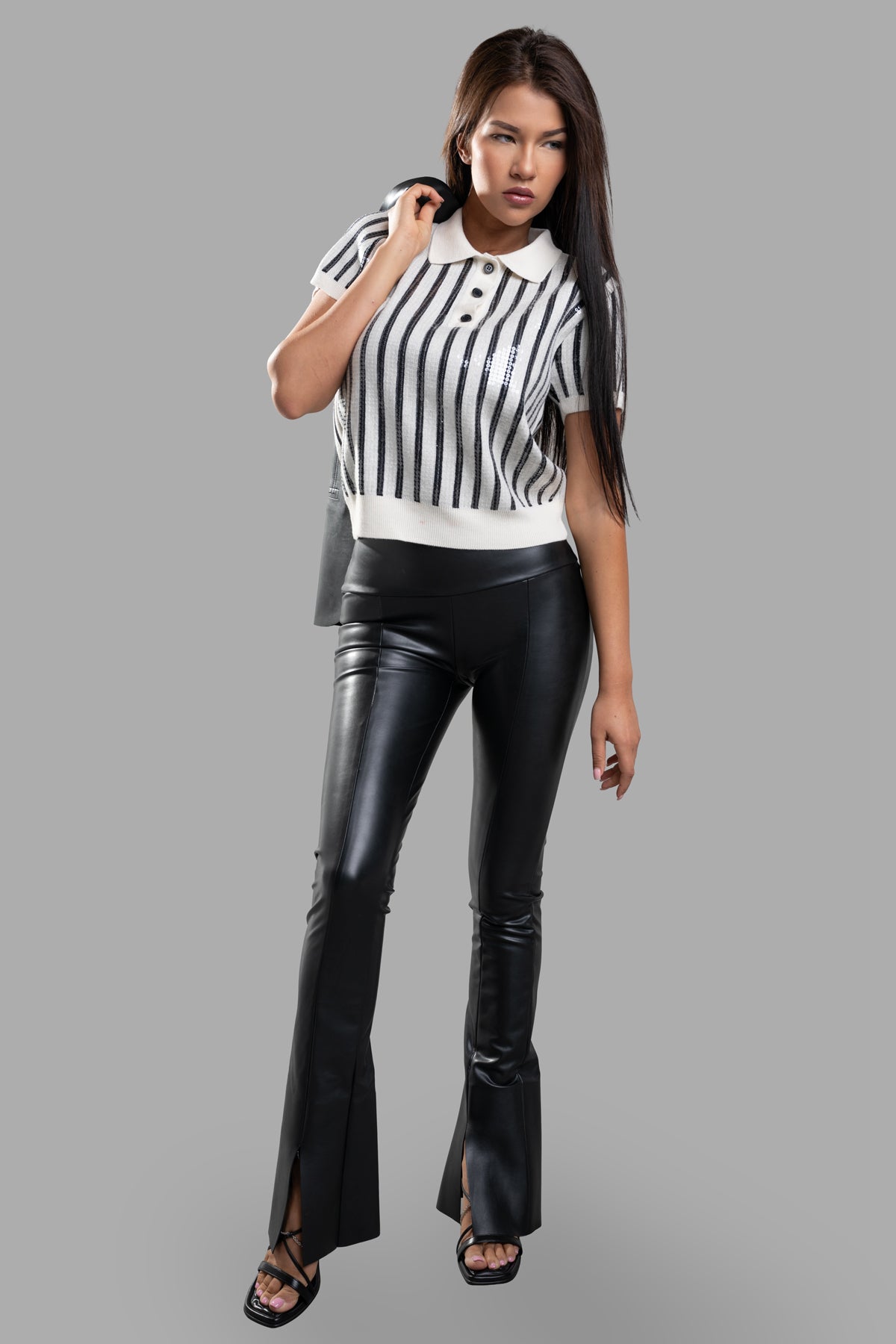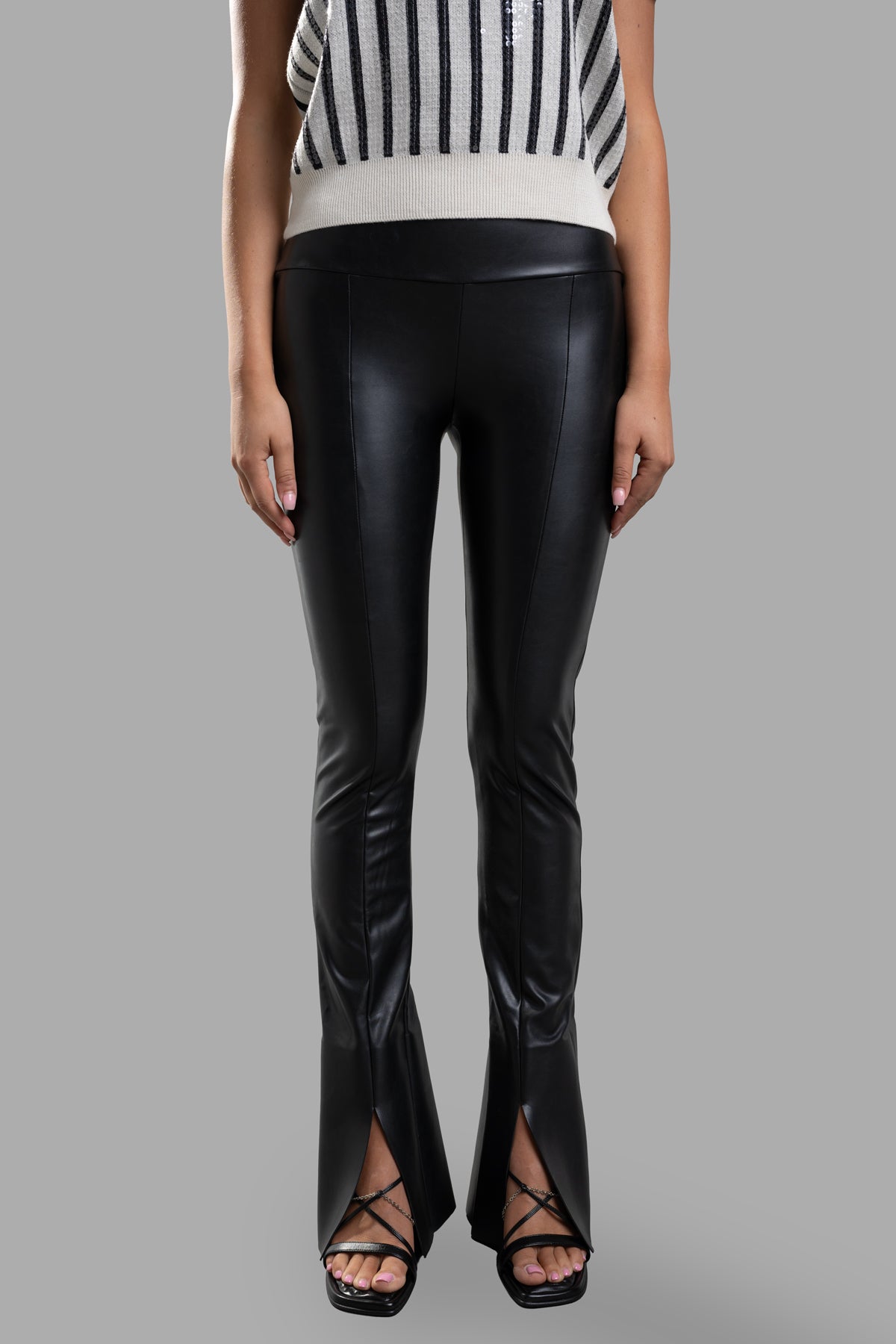Filters
Norma Kamali builds clothes to move in—on the body and in a suitcase. On the rack you’ll find ruched jersey dresses that sculpt without squeezing, nylon‑lycra swimsuits with precise retro cuts, and the cocooning Sleeping Bag Coat. The signatures are pragmatic: stretch, washability, and patternwork that flatters across sizes. The mood is modern, with decades of New York design history threaded through.
Silhouette & construction
Kamali’s day‑to‑evening dresses are engineered around drape. Shirred side seams and asymmetrical hems create vertical lines that lengthen. One‑shoulder and strapless necklines are balanced by internal support, so the surface reads fluid while the base stays put. Many bestsellers—including the Diana family—layer a sculpting bodysuit under a ruched shell; this understructure holds the dress, sets the hip and waist, and prevents seam show‑through when you move.
Volume is handled cleanly elsewhere: circle‑cut mesh skirts skim rather than puff, convertible pieces toggle length with ties or snaps, and outerwear exaggerates proportion on purpose. The Sleeping Bag Coat—two quilted layers stitched to trap warm air—wraps like a comforter yet belts close for shape. Swim cuts are disciplined: high legs, secure bust lines, and controlled ruching that reads graphic, not fussy.
Materials & finish
Fabrics are chosen for stretch, recovery, and easy care. Core dresses use poly‑lycra or poly jersey with four‑way stretch; mesh ranges from gauze‑light to power‑mesh for subtle hold. Swimwear works in nylon‑lycra and mesh overlays. Quilted outerwear uses nylon cire or poly habotai with fiber fill for loft. Seasonal capsules add metallic ripstop, studs, and photo‑printed animalia to otherwise pared‑back bases. On body, the effect is sleek: matte jerseys that skim, mesh that veils and ventilates, and padded outerwear that’s lightweight for its size. Most jersey and poly‑lycra pieces are machine‑washable; mesh and swim ask for cool care; coated or quilted shells prefer spot‑cleaning and low heat.
Signatures & icons
Sleeping Bag Coat (1973). A cocooning, belted quilt with oversized lapels that started as a sliced sleeping bag; it now sits in museum collections and returns each winter in new lengths and prints.
Diana dress (’70s; bodysuit added in the ’80s). One‑shoulder, all‑over ruching, and an inner stretch bodysuit that sculpts and keeps the drape intact across mini, midi, and gown lengths.
Bill Mio swimsuit. A ruched halter maillot with a sweetheart neckline and mid‑coverage seat—old‑Hollywood lines cut in modern stretch.
Parachute pieces. Early adjustable dresses made from real silk parachutes established the brand’s tuneable lengths and drawstring volume—an idea still visible in today’s convertibles.
Across categories, expect strong shoulders, clean torsos, and athletic references distilled for city life.
How to wear it now
Weekday, desk to dinner. A long‑sleeve ruched jersey to knee, sheer black tights, and a sharp boot. Add a tailored jersey blazer; swap to a metallic sandal after hours.
Evening. The Diana gown in deep color with minimal jewelry and a slim clutch. Let the ruching read; hair clean, shoulders bare.
Weekend. Power‑mesh turtleneck layered under a stretchy slip, low‑profile sneakers, and a cropped bomber.
Travel or resort. Bill Mio one‑piece as bodysuit under a pareo or cotton trouser; pack a mesh topper to switch sheer/opaque balance in minutes.
Fit & sizing notes
Dresses and gowns. Close to body by design. The internal bodysuit provides gentle hold; if you prefer ease and extra drape, size up one. Gown lengths run long; petites often hem or let the asymmetrical edge graze the ankle.
Coats. Sleeping Bag Coats are intentionally oversized and frequently sized XS/S and M/L. Belt to shape; rolling sleeves is part of the styling language.
Swim. Most one‑pieces and bikinis have firm stretch and ruched panels for a secure fit. High‑leg cuts elongate the line; select your usual size for a classic fit or one up for more coverage.
Separates. Stretch jersey tops and skirts are true to size with forgiving waistbands. Mesh pieces skim; consider base layers if you prefer opacity.
Range. The current size chart spans XXS–XXL; check garment measurements for length and torso if you’re tall or long‑waisted.
Care & longevity
Treat fabric to its function. Poly‑lycra: machine wash cold with like colors, tumble dry low; avoid dry cleaning. Poly jersey: hand wash cold, line dry, and store folded, not hung, to prevent stretching. Mesh: cold wash, low tumble or line dry. Swim: rinse in cold water after chlorinated or salt exposure, then lay flat. Sleeping Bag Coats (nylon cire): spot clean with mild soap and cold water; keep away from high heat and never tumble dry. A handheld steamer, not an iron, preserves surface finish on most jerseys.
Heritage & today
Norma Kamali opened her first New York shop in 1967 and struck out “on my own” with OMO in 1978. The Sleeping Bag Coat arrived in 1973; “sweats” as fashion followed in 1980; parachute pieces and leg‑lengthening swim defined her 1970s–’80s impact. The red one‑piece worn by Farrah Fawcett in 1976 cemented the brand’s swim legacy. Today the studio shows on the New York schedule in presentations that foreground product over spectacle and continues to iterate core designs—Diana dresses, ruched jersey separates, cocoon coats, and swim—using updated stretches and finishes.
Responsibility, succinctly
The brand prioritizes longevity through easy‑care, washable fabrics and seasonless silhouettes that repeat across collections. Many garments are machine‑washable to reduce care impact; padded outerwear is built for durable wear. Formal certifications are not a focus of the brand’s storytelling; responsible practice here means pieces designed to be reworn, packed, washed, and re‑styled for years.


